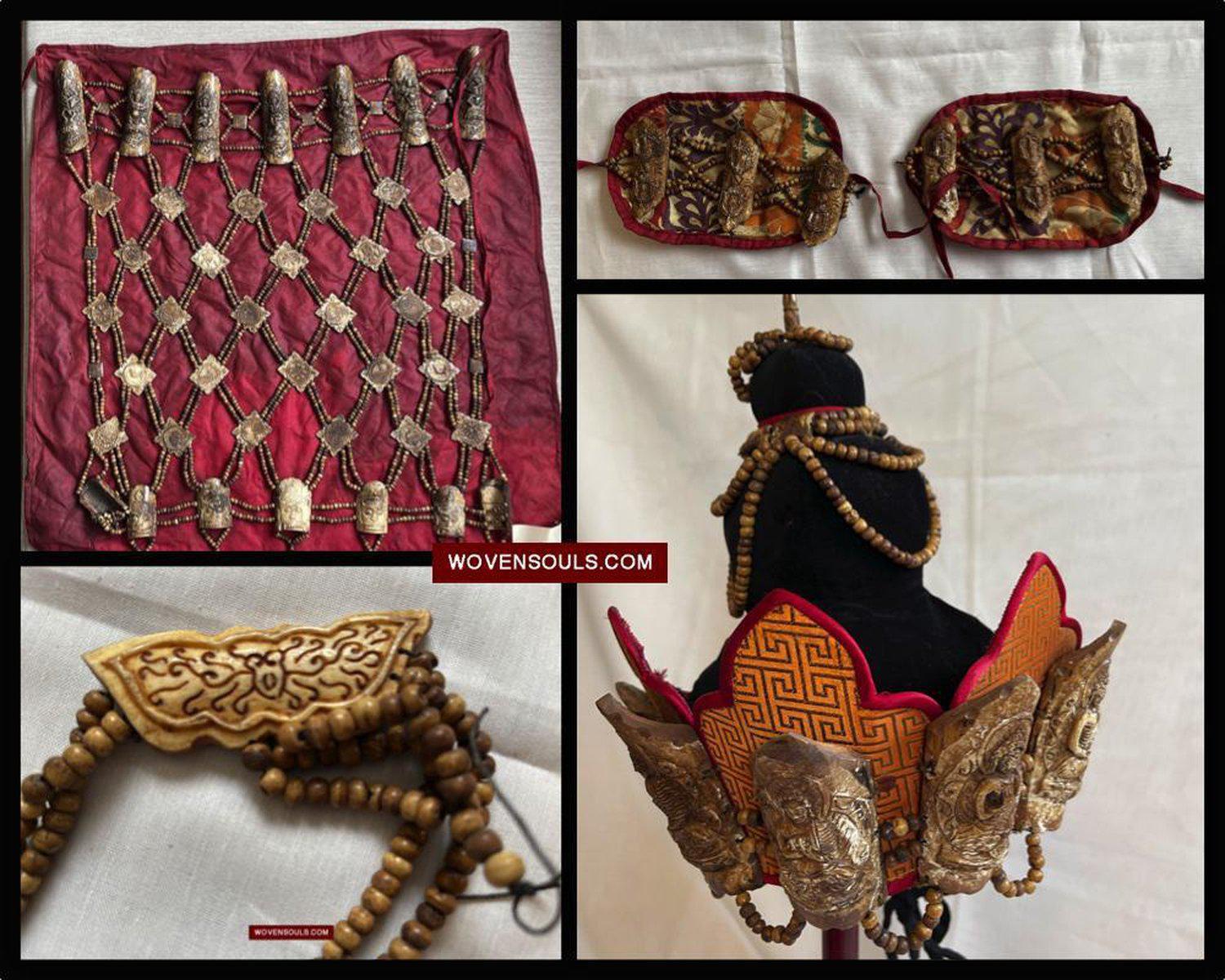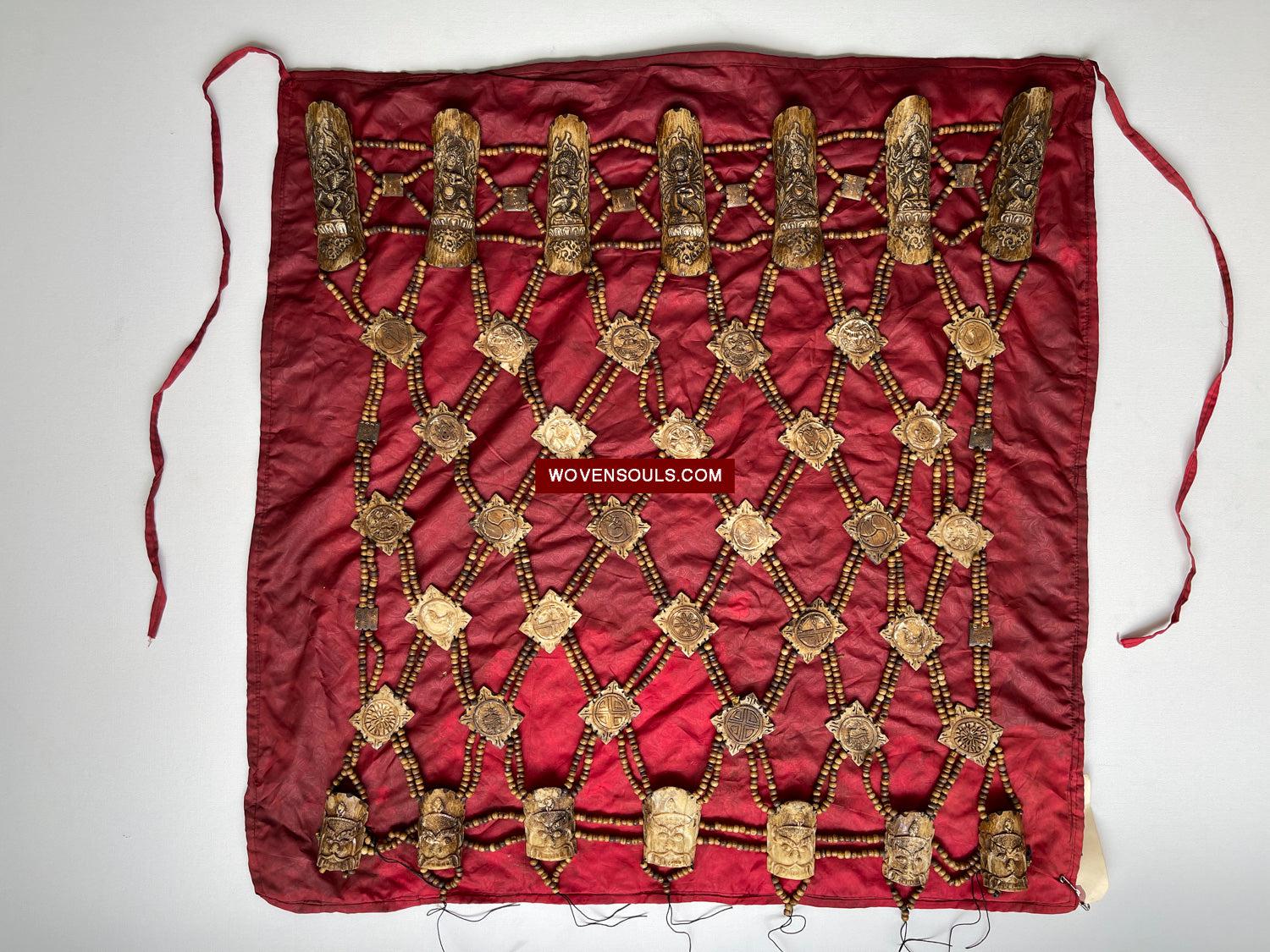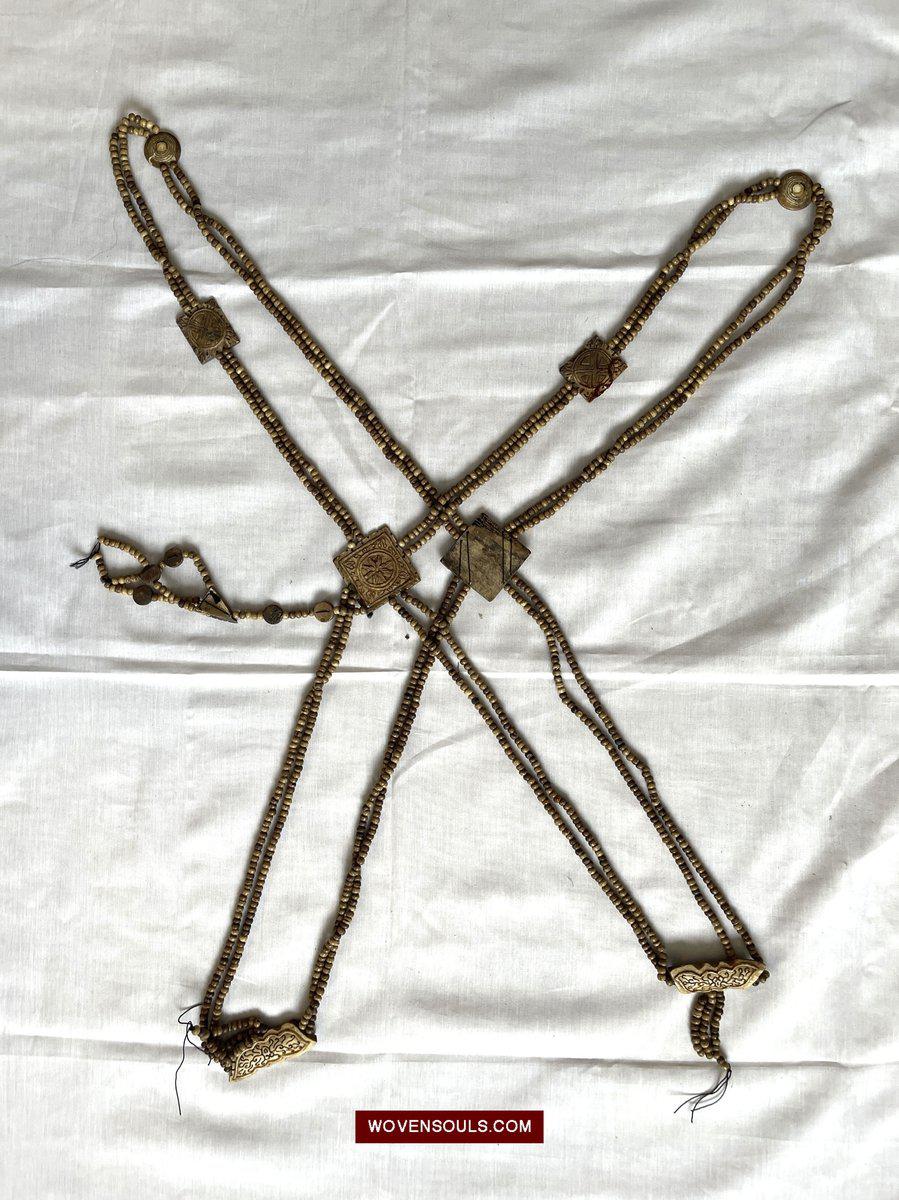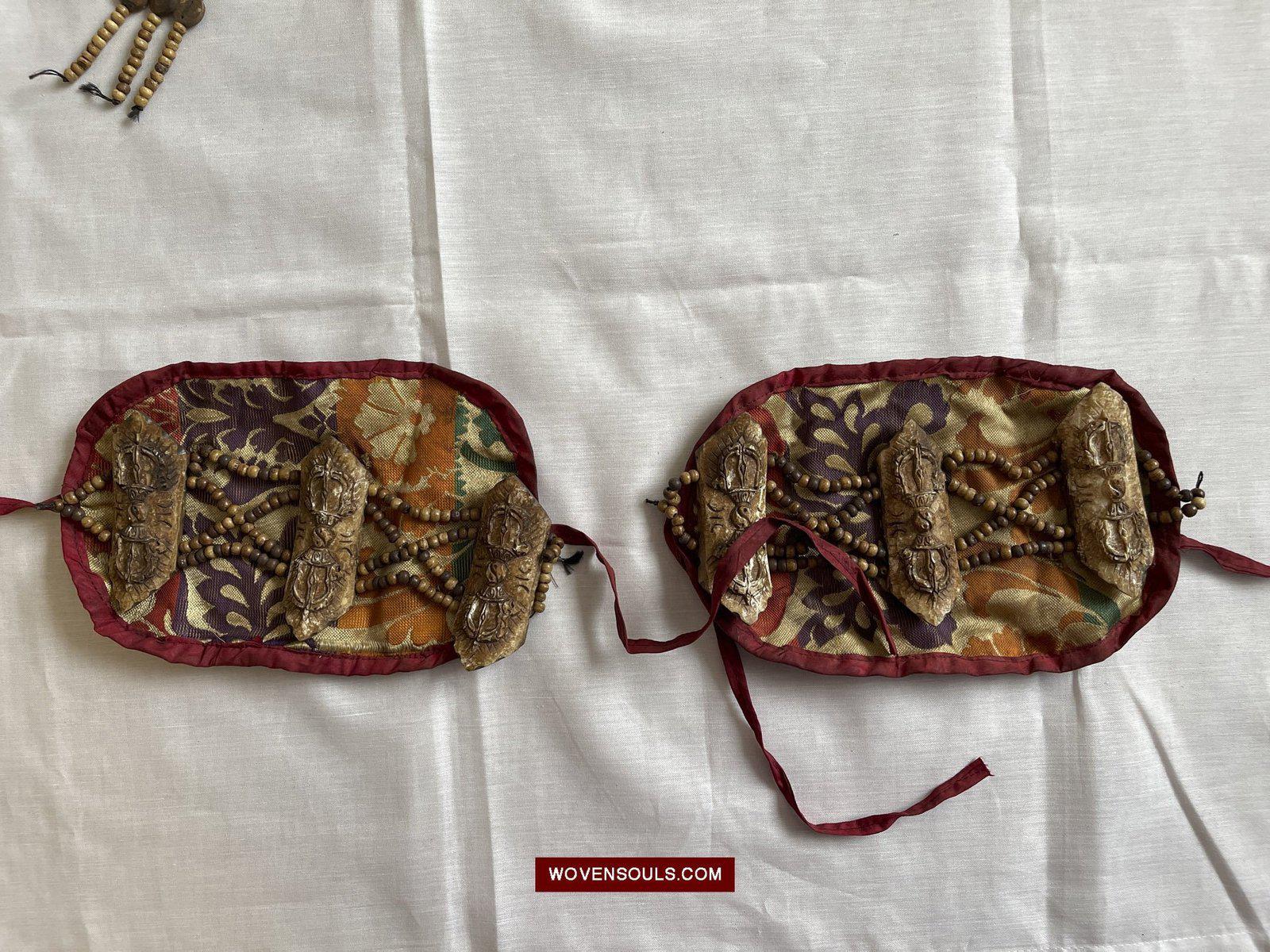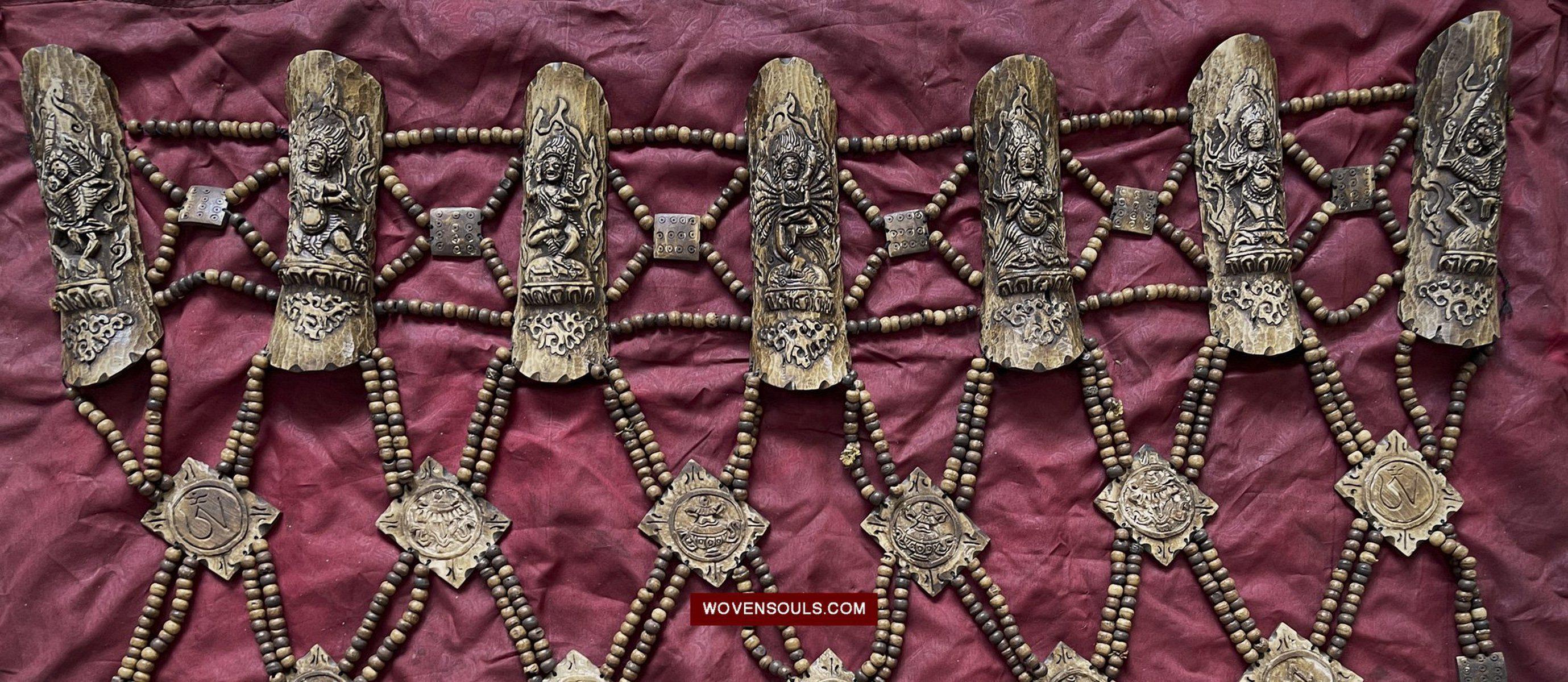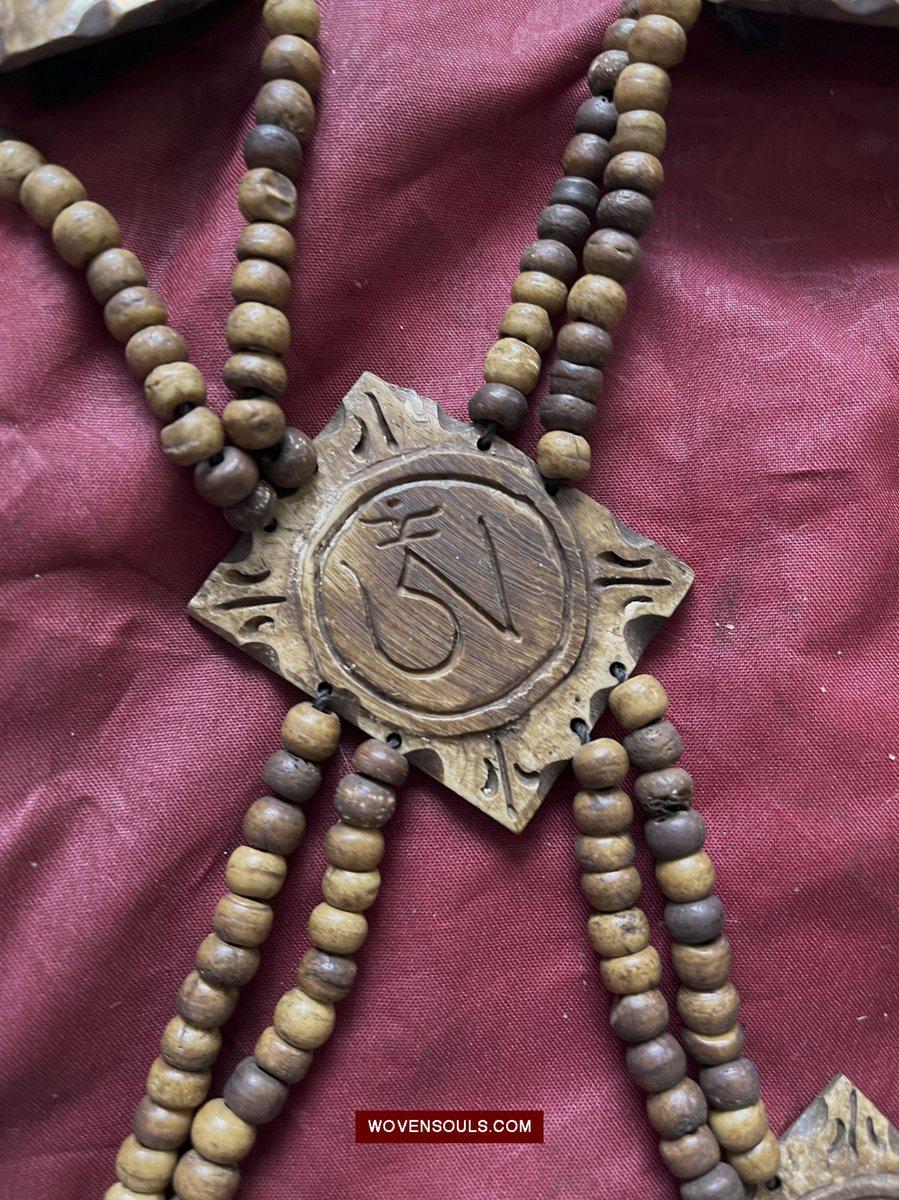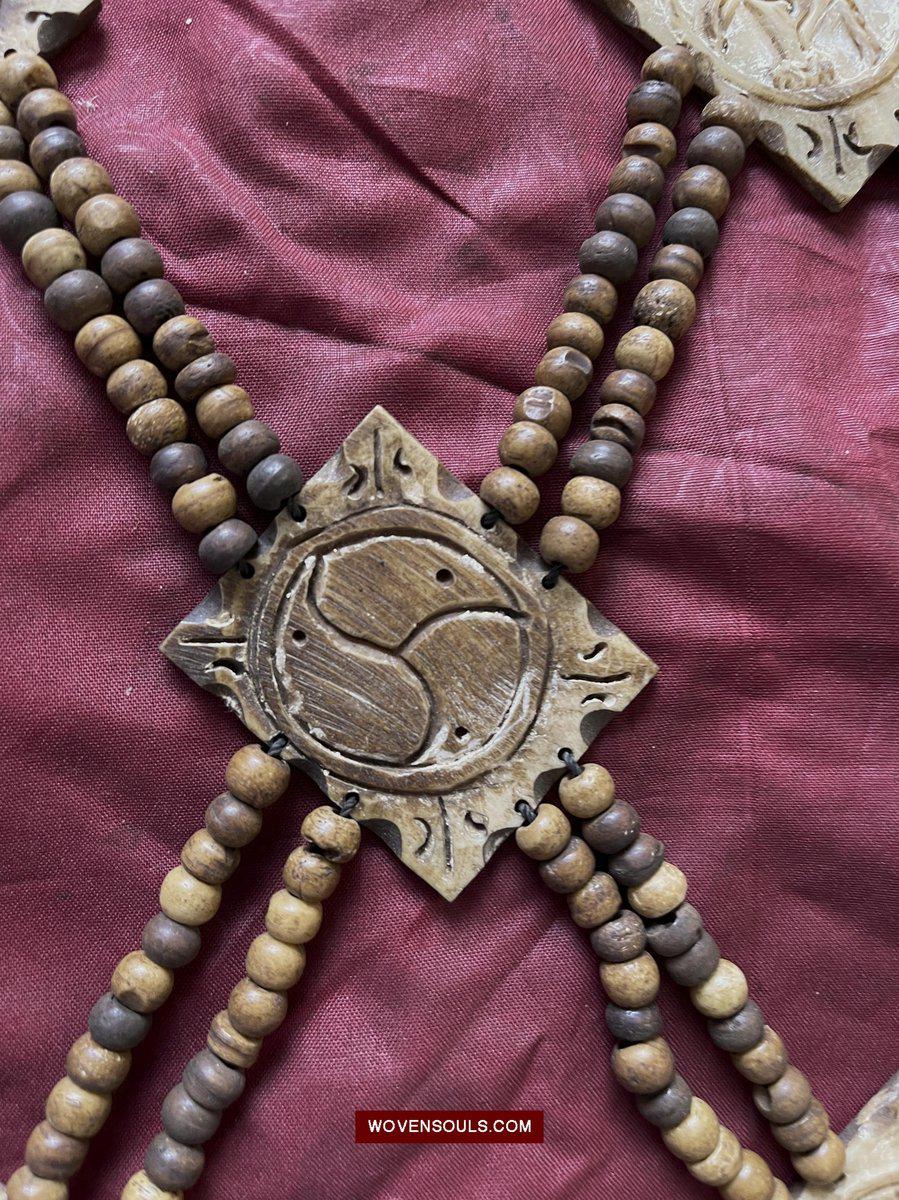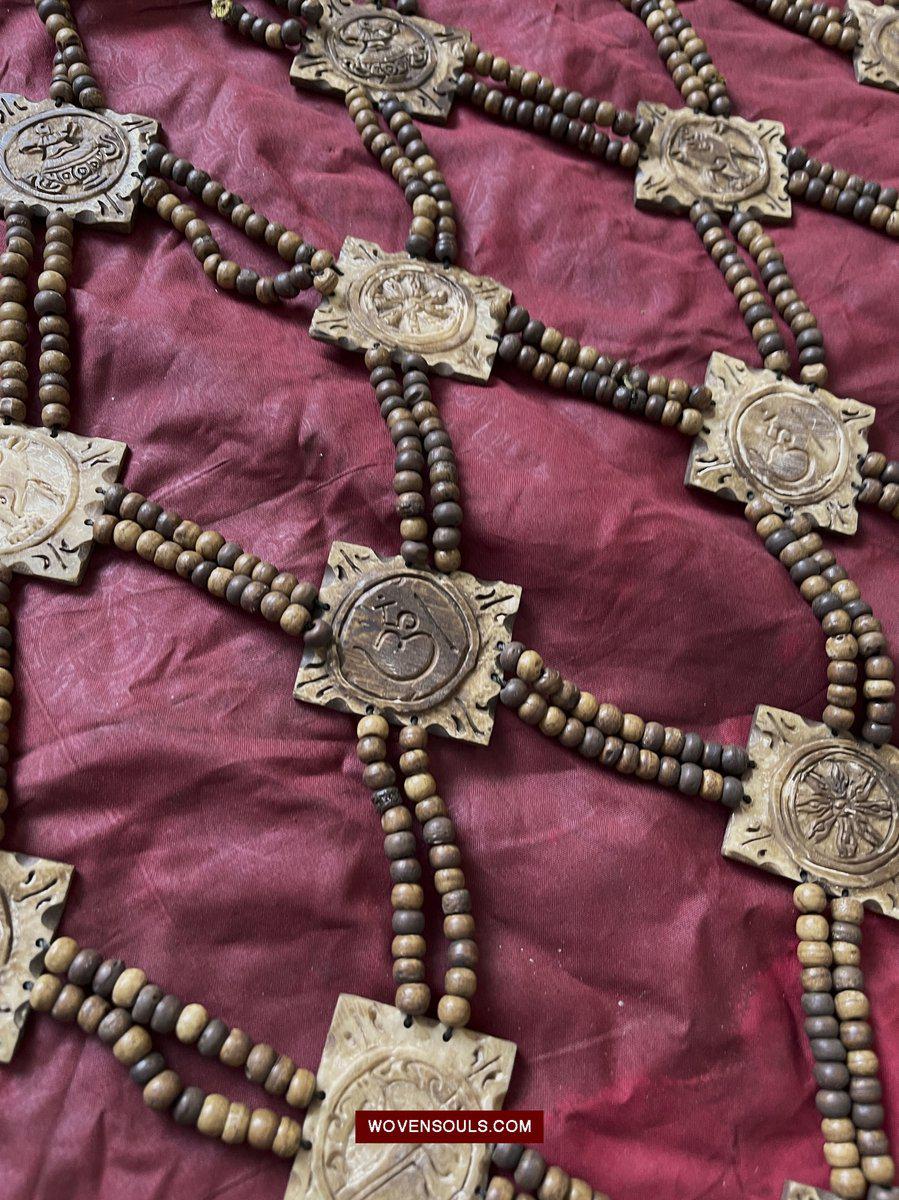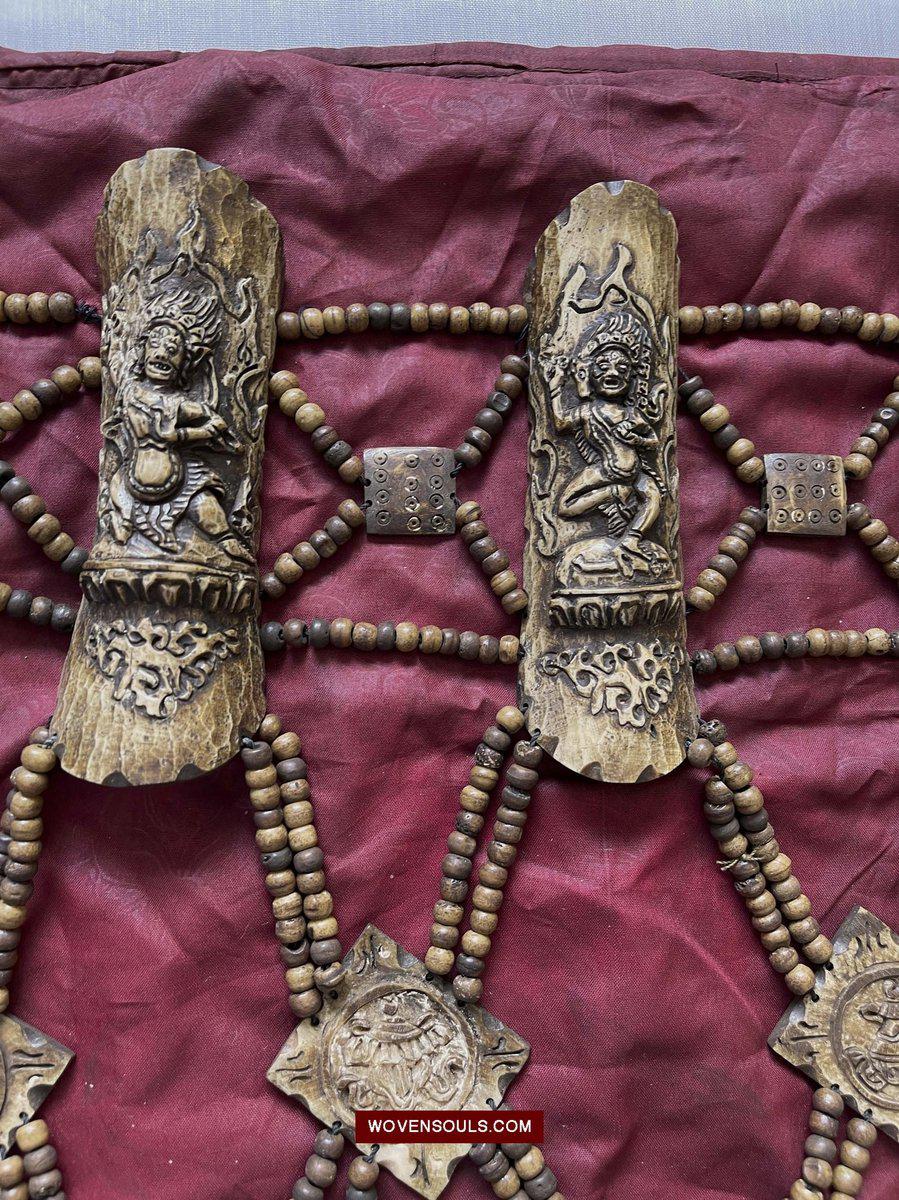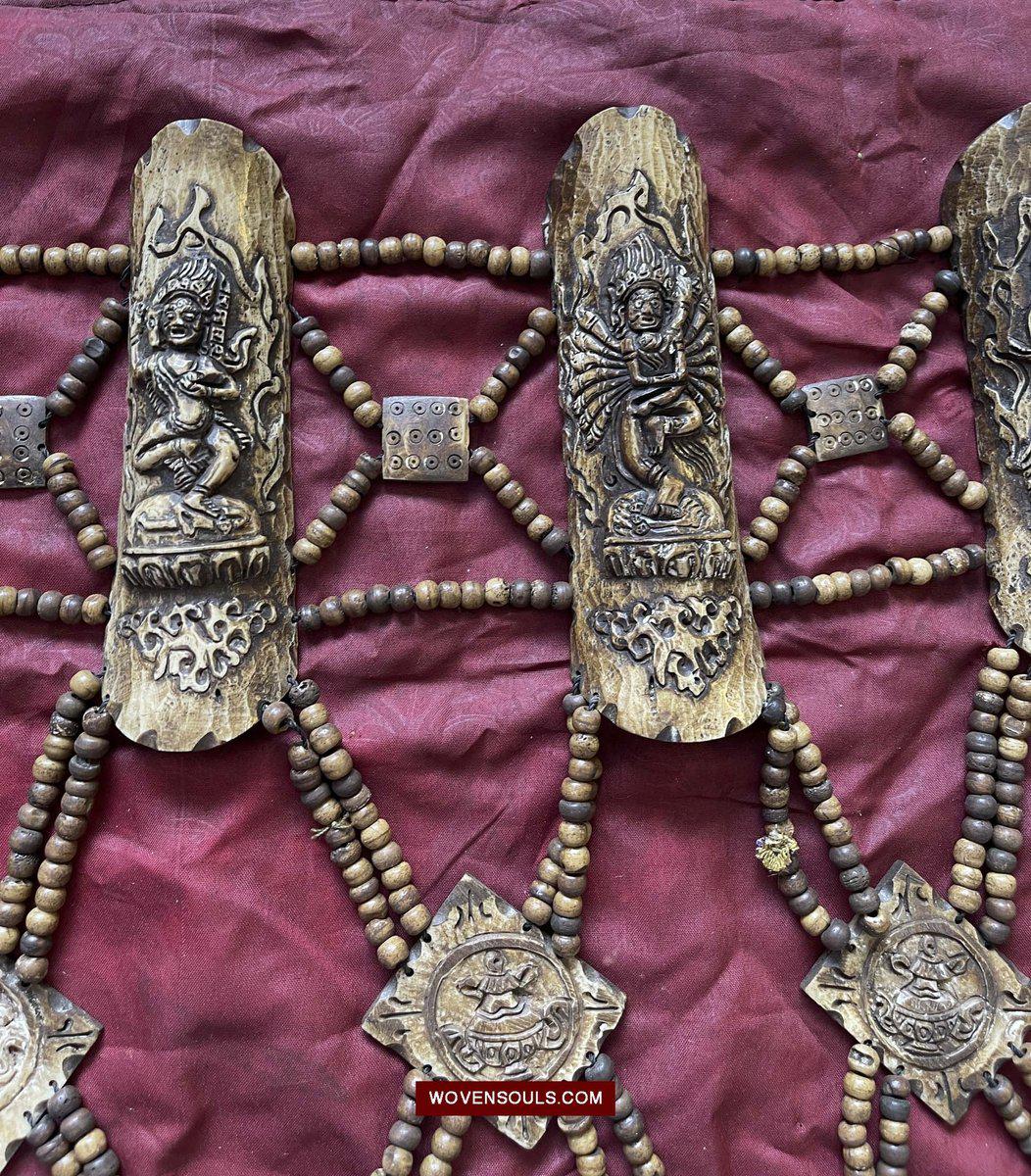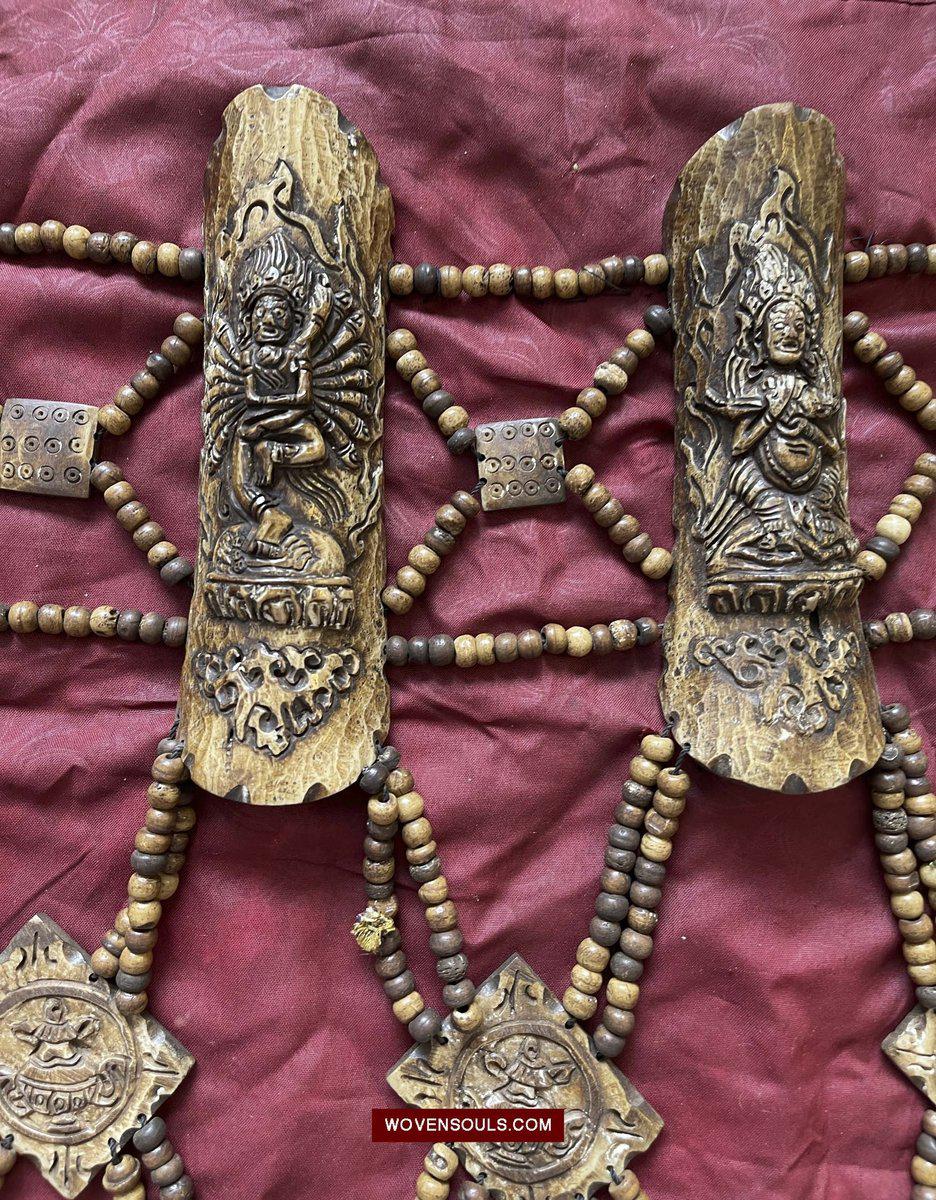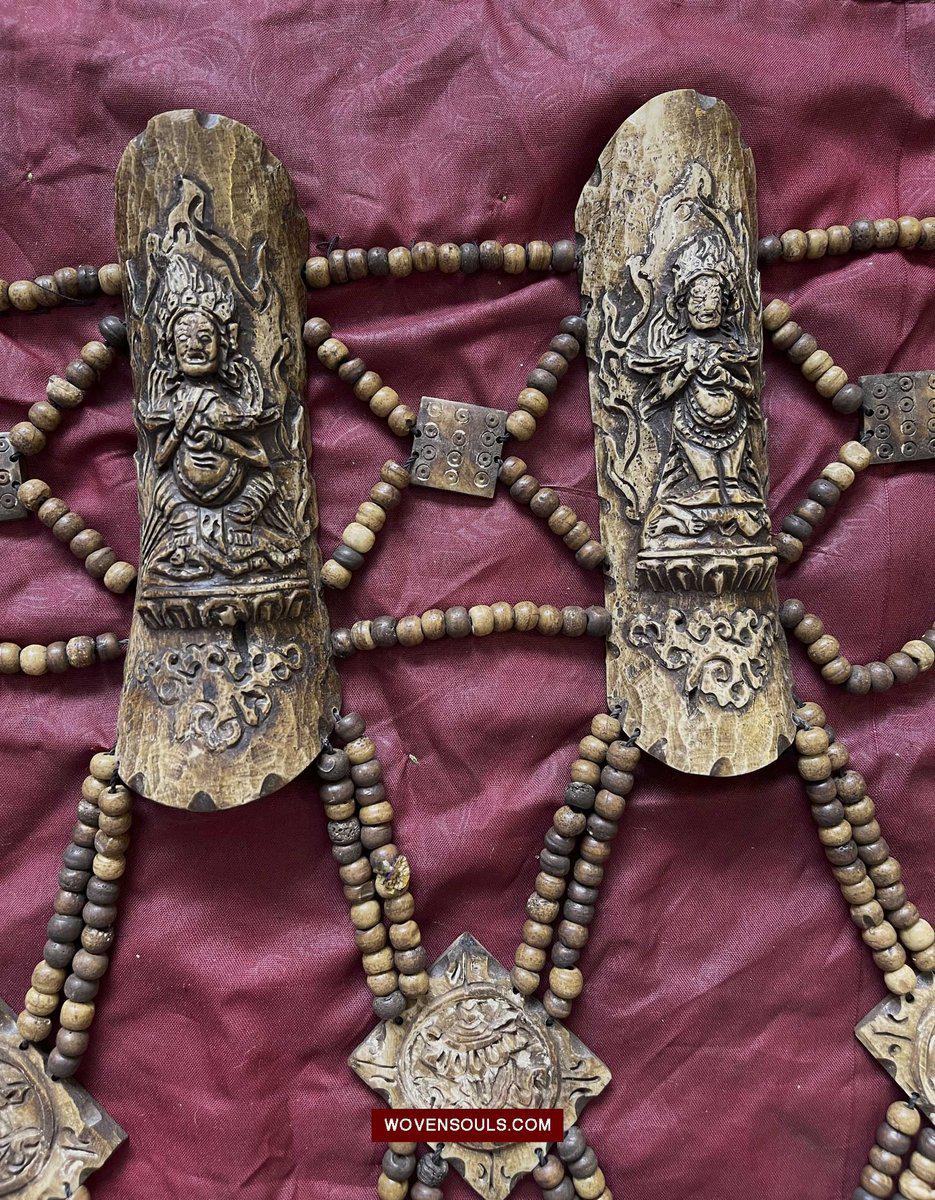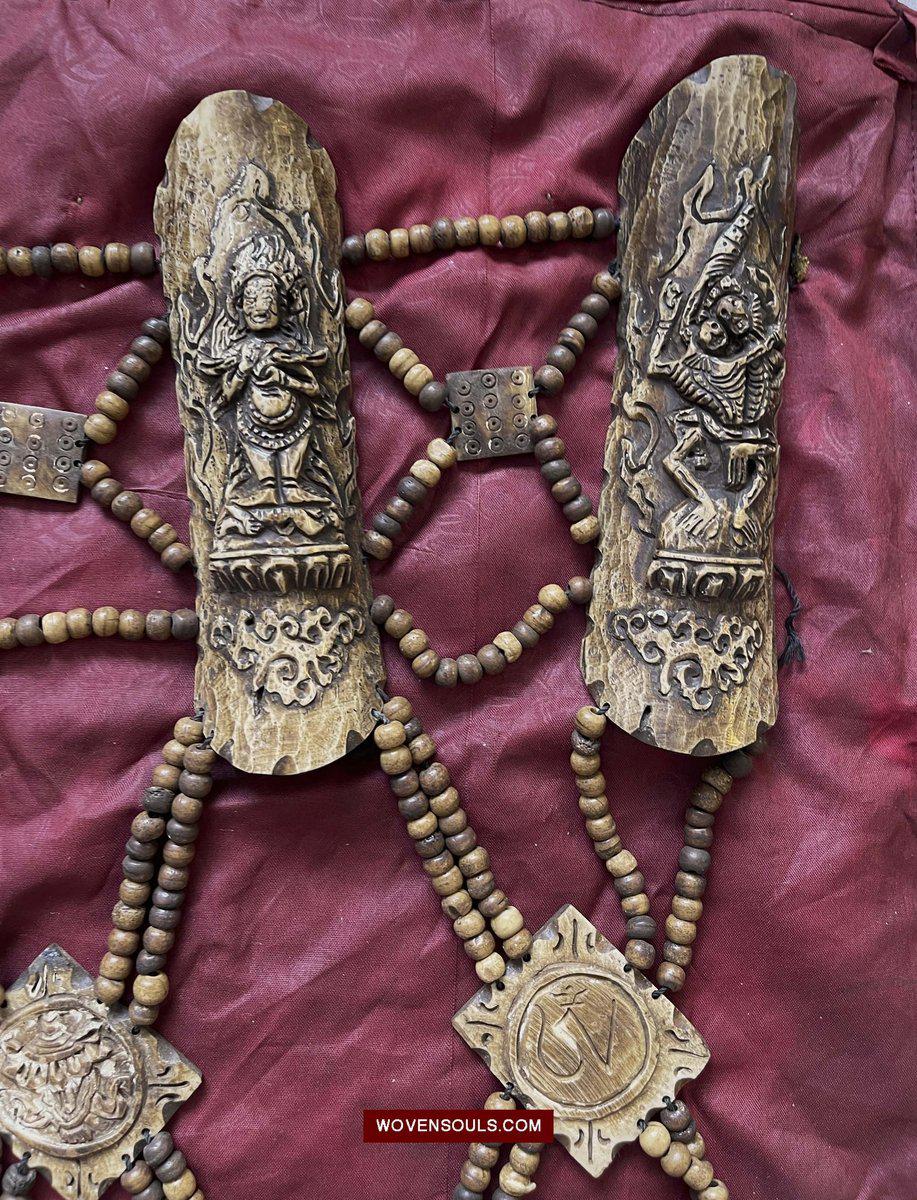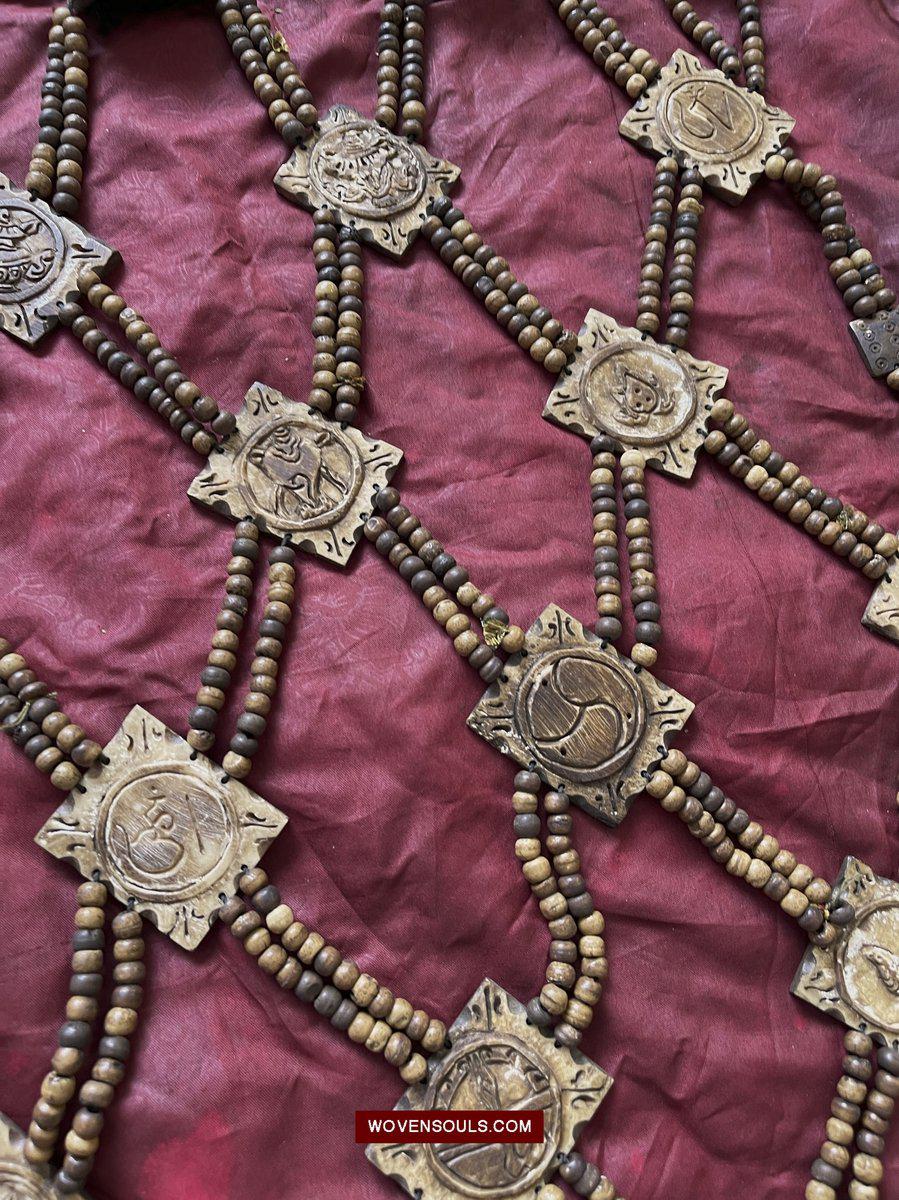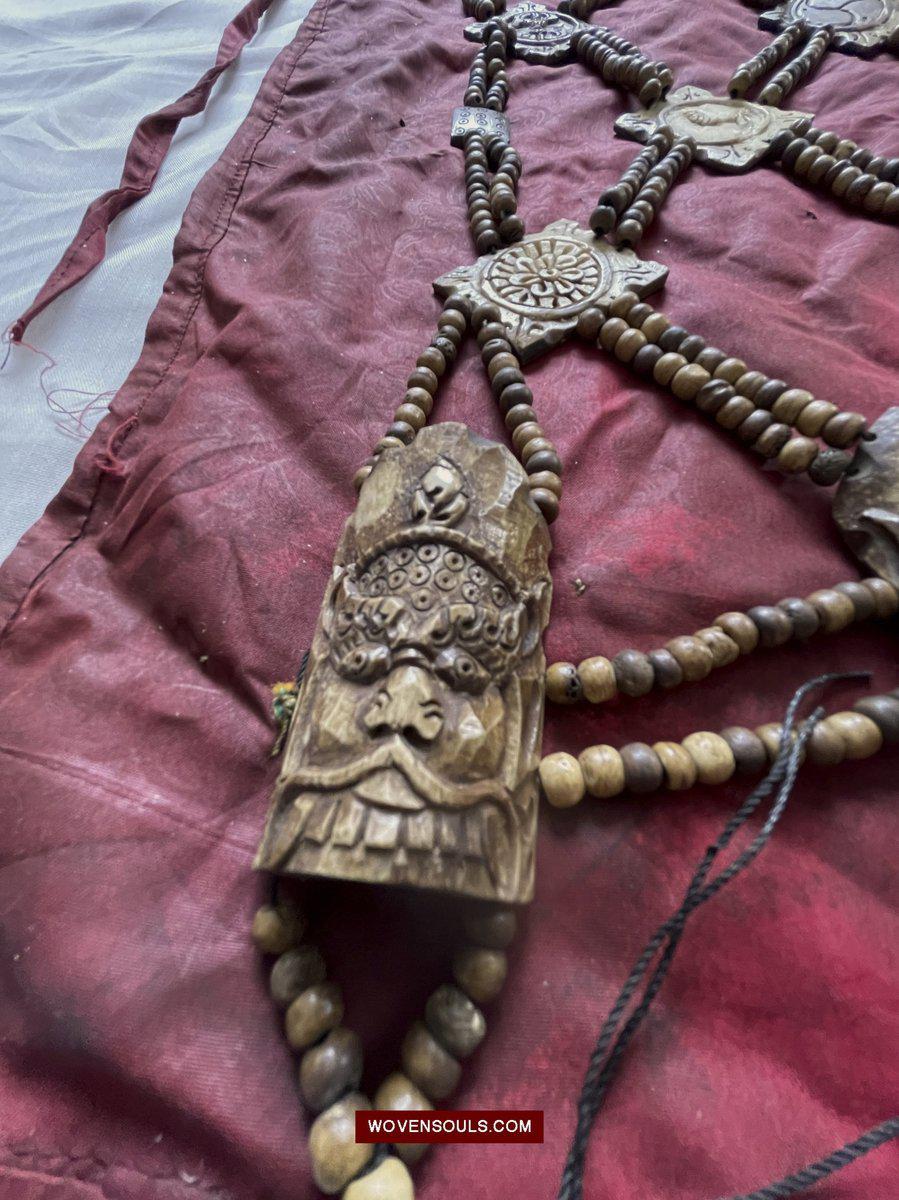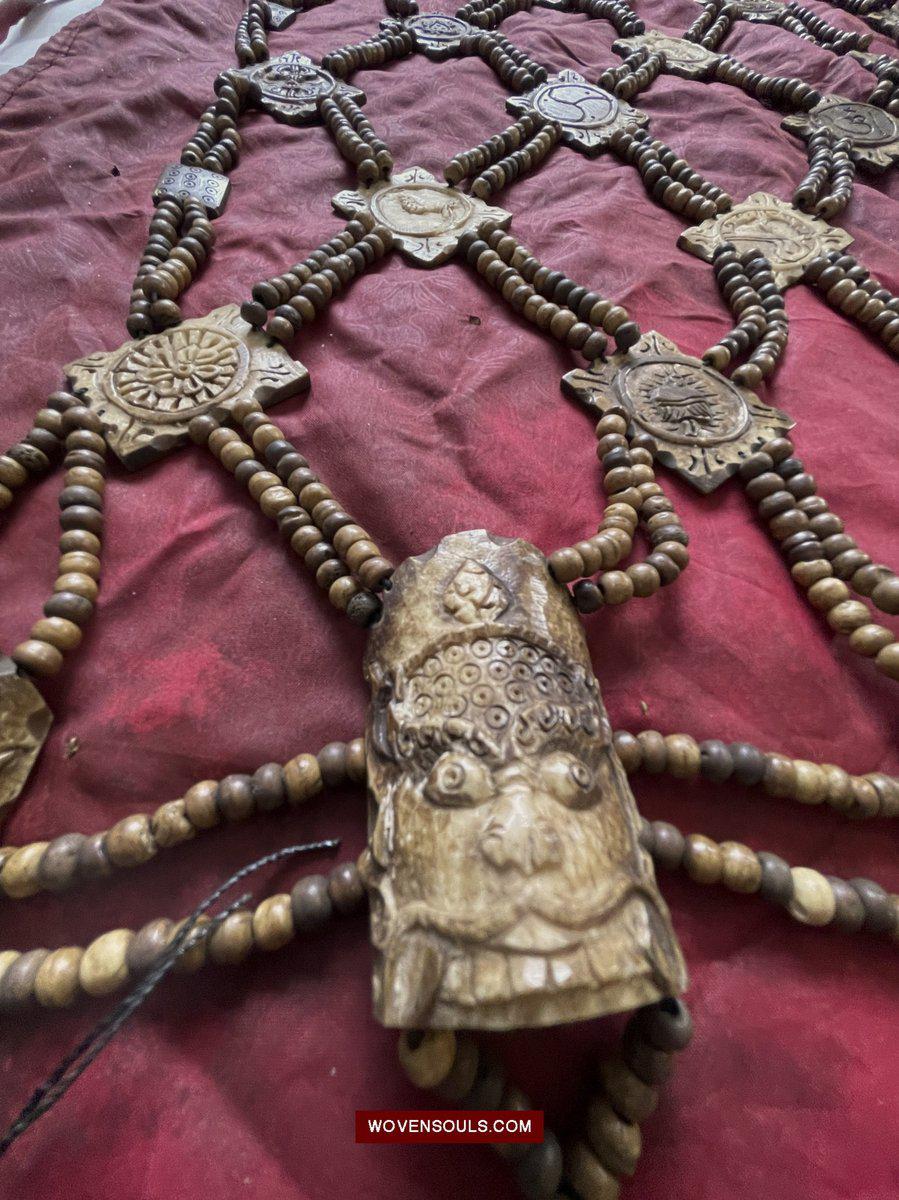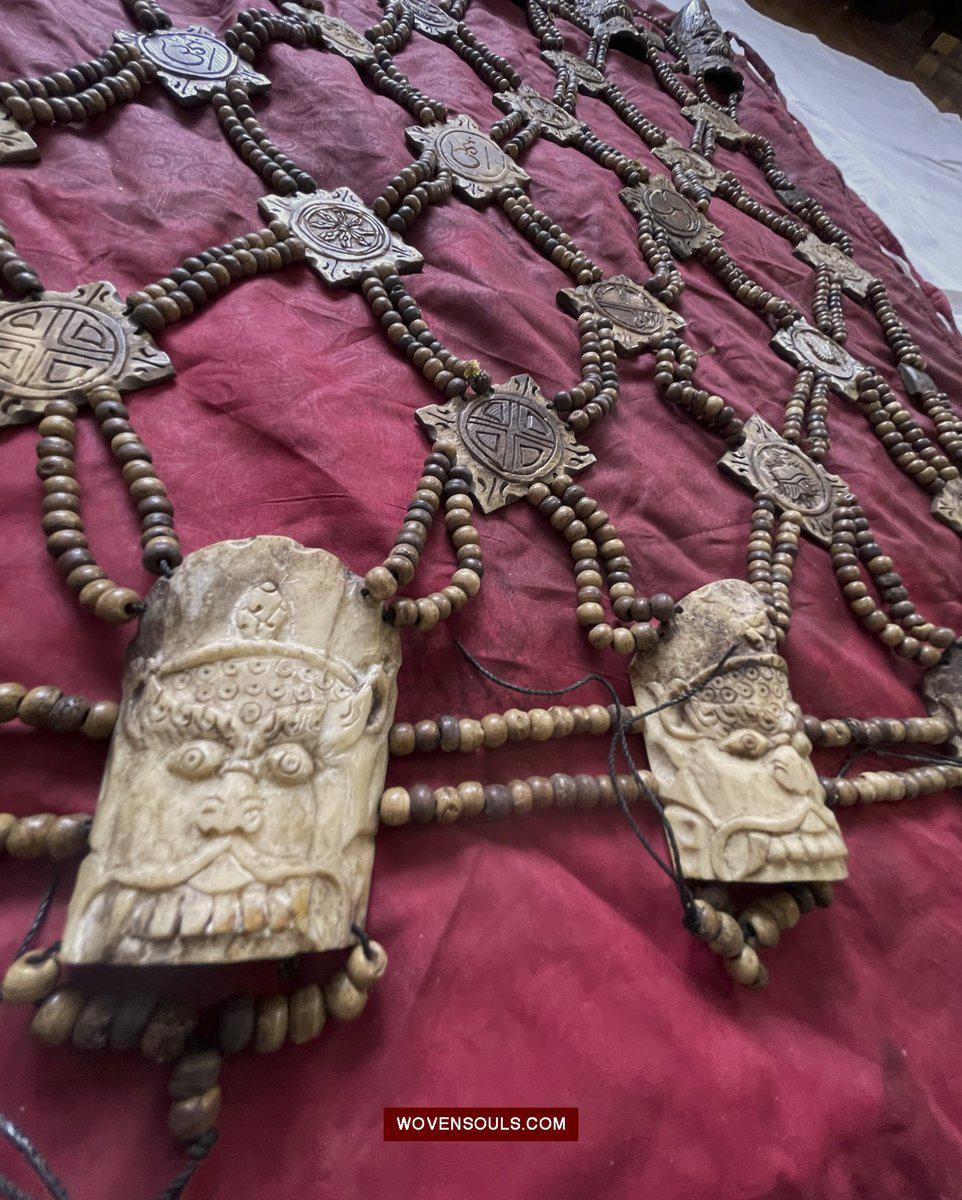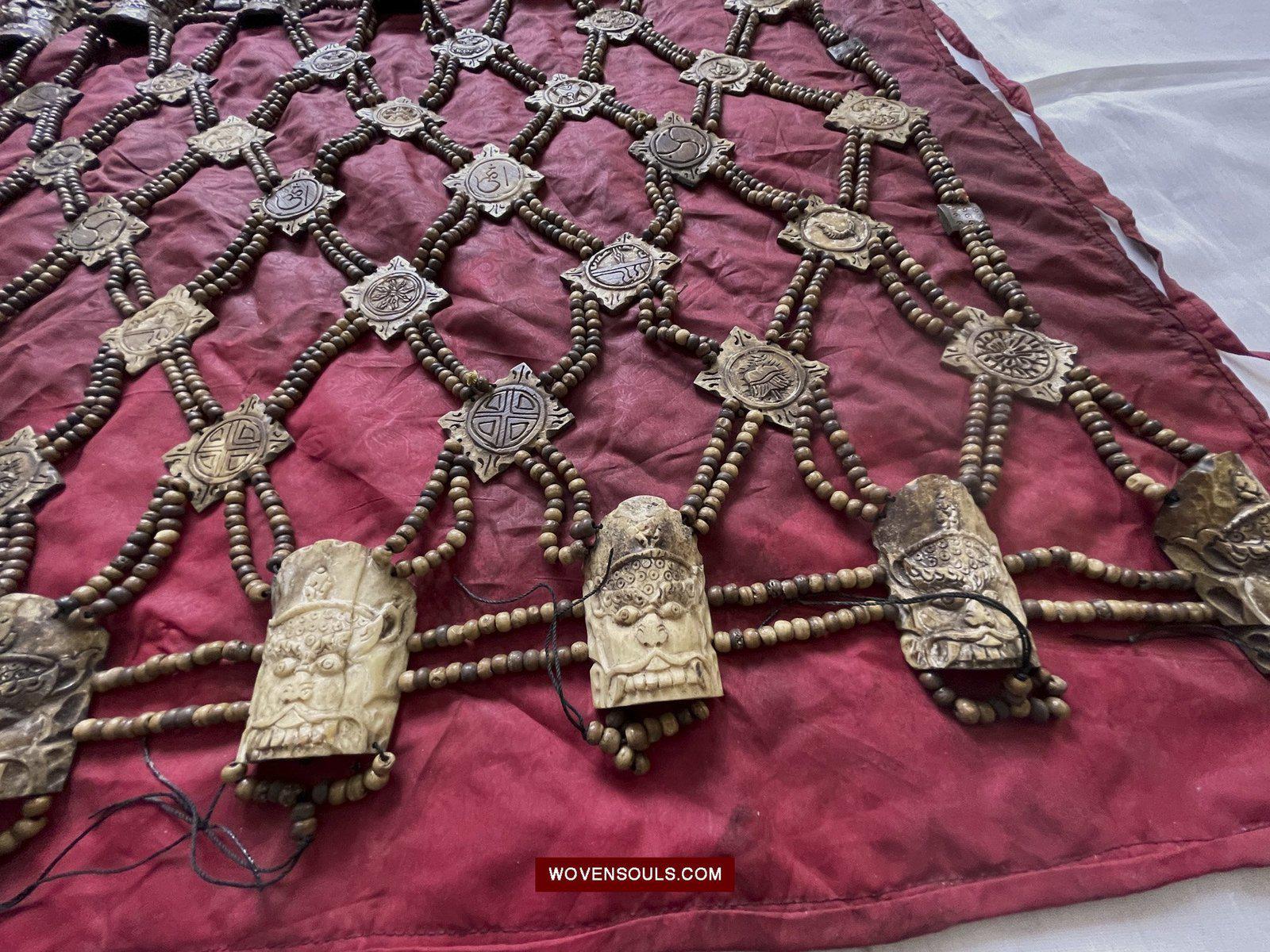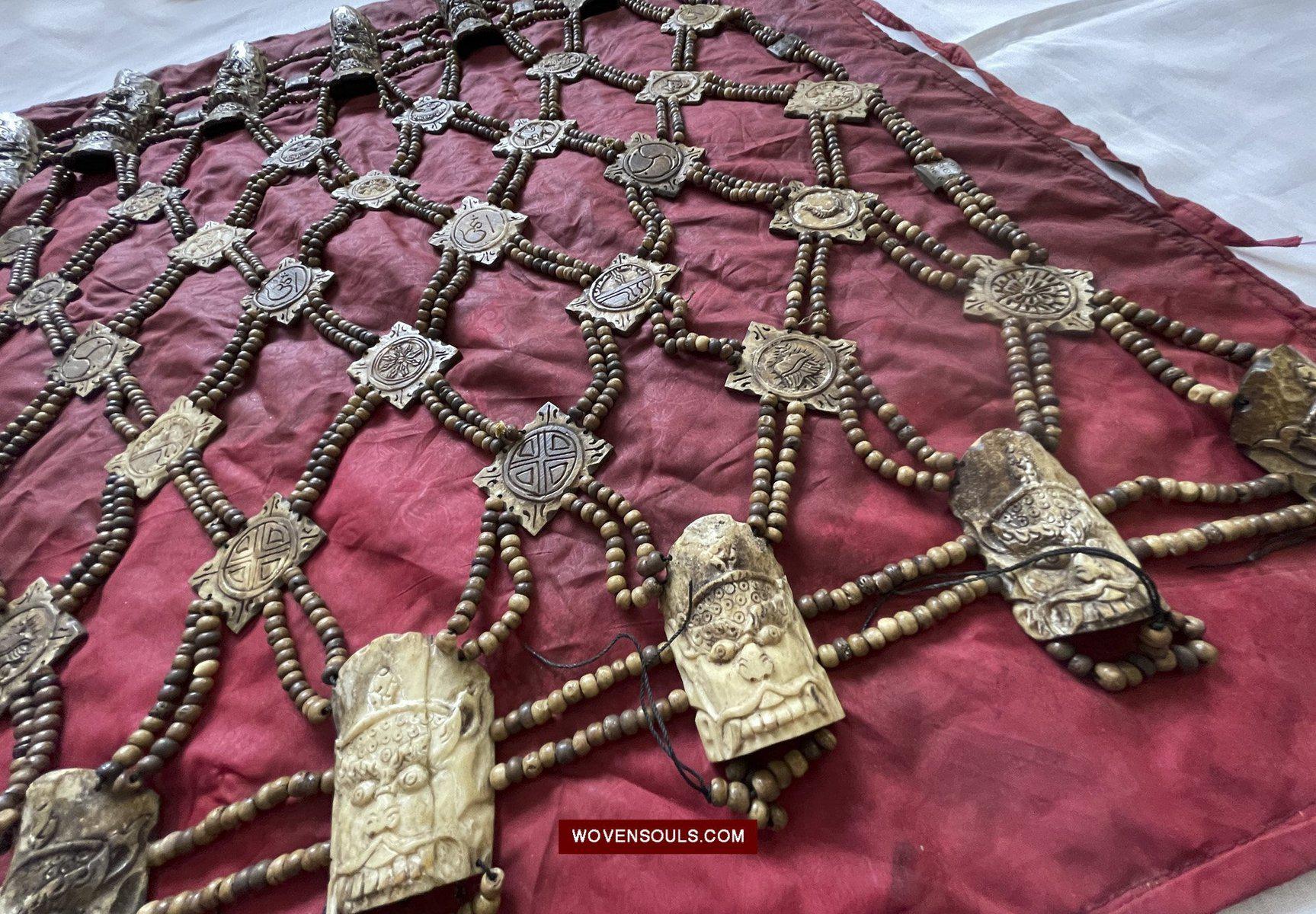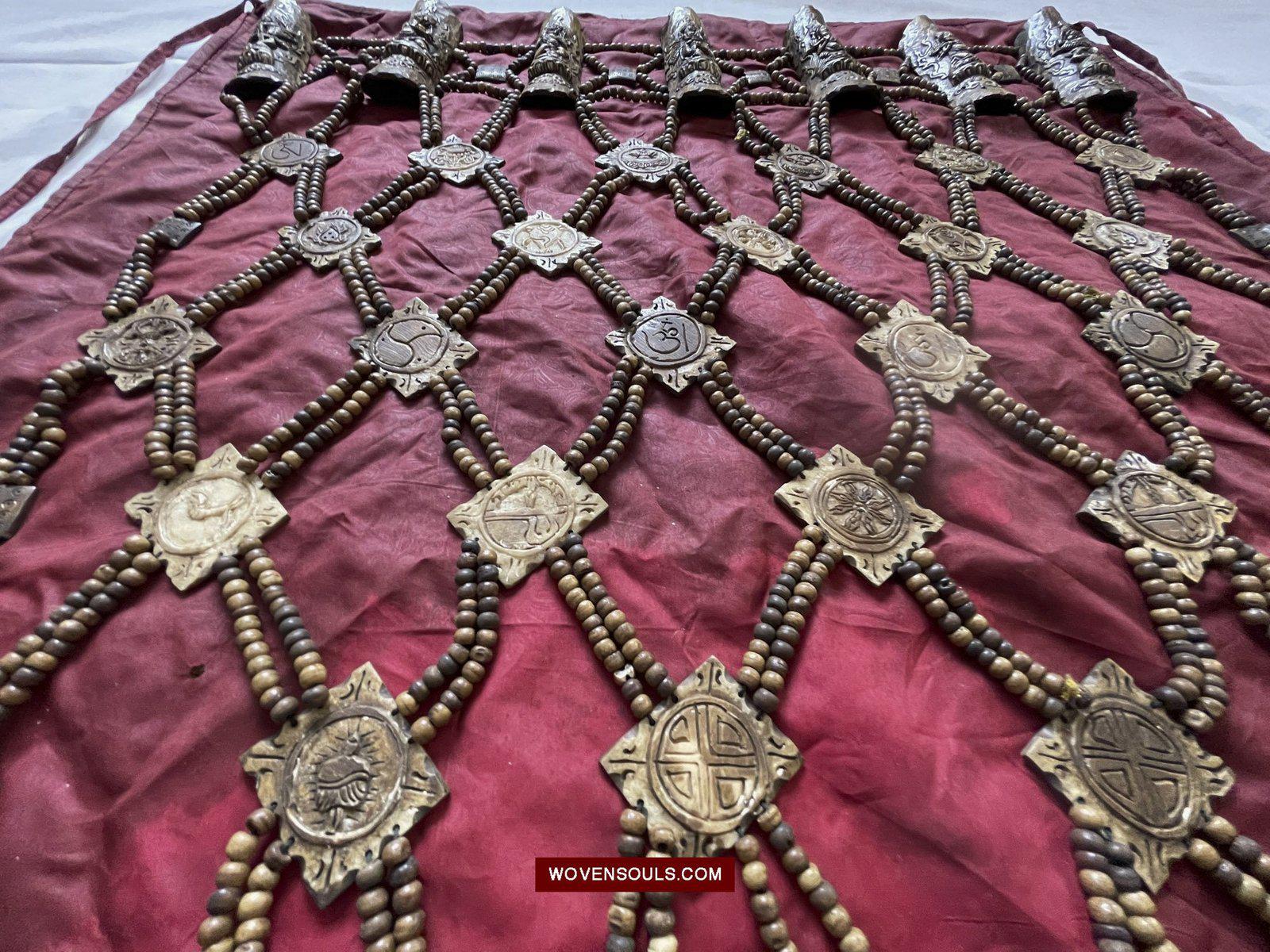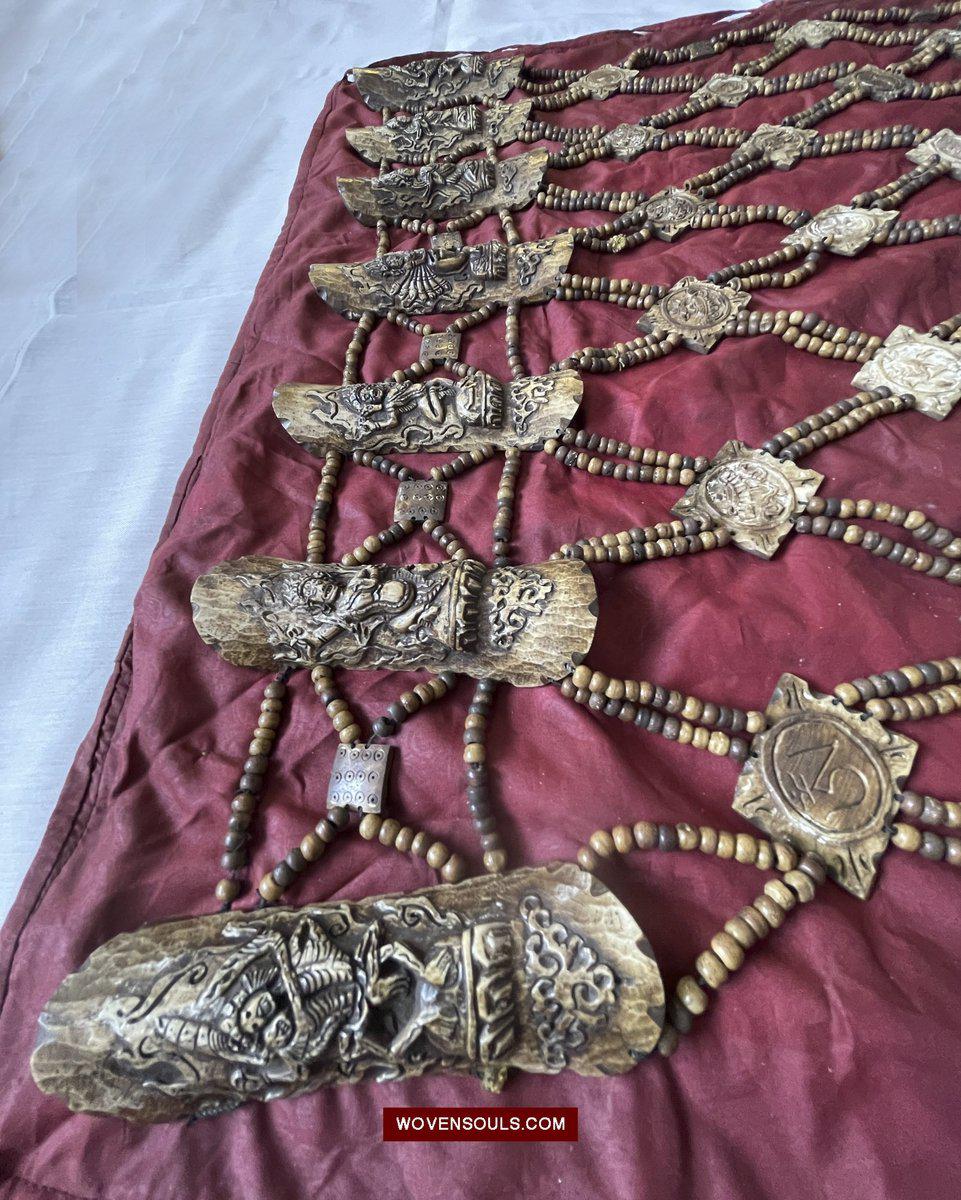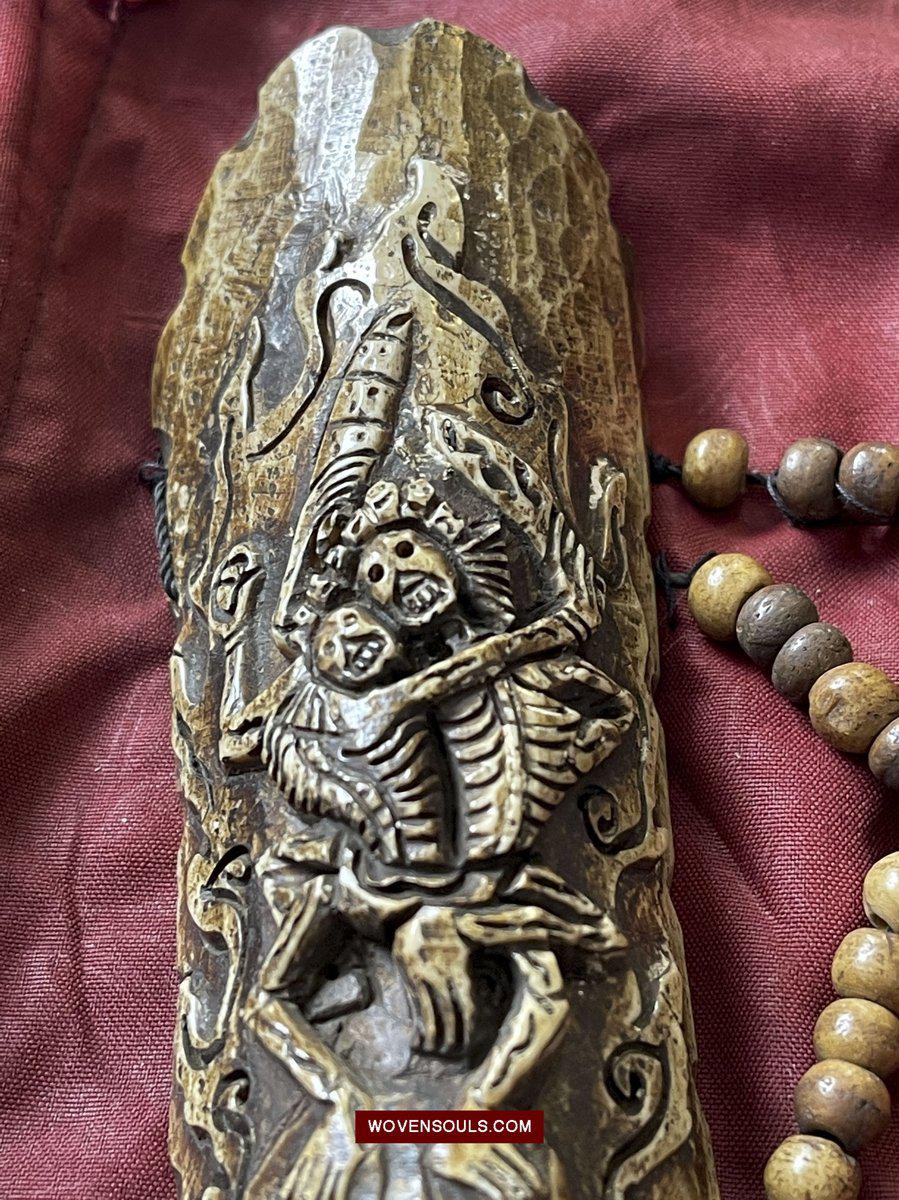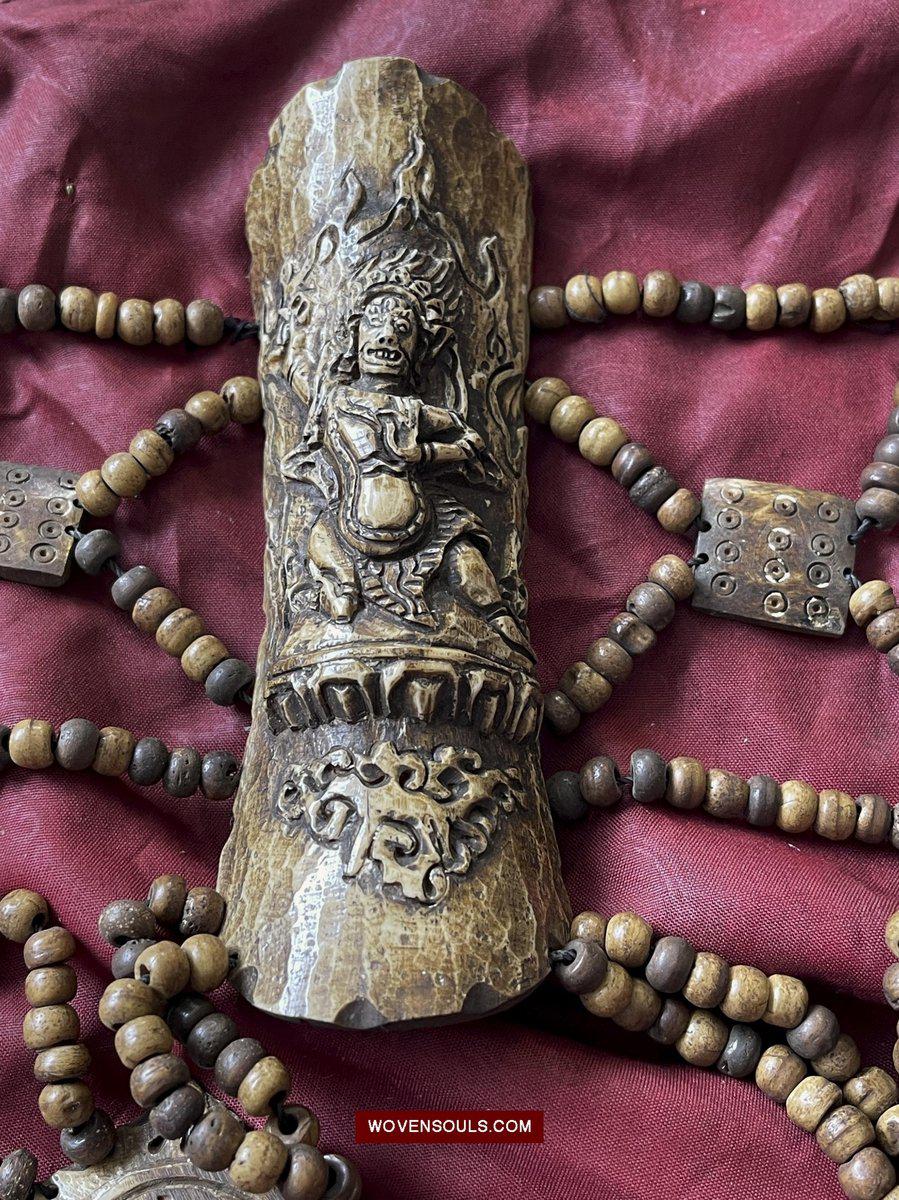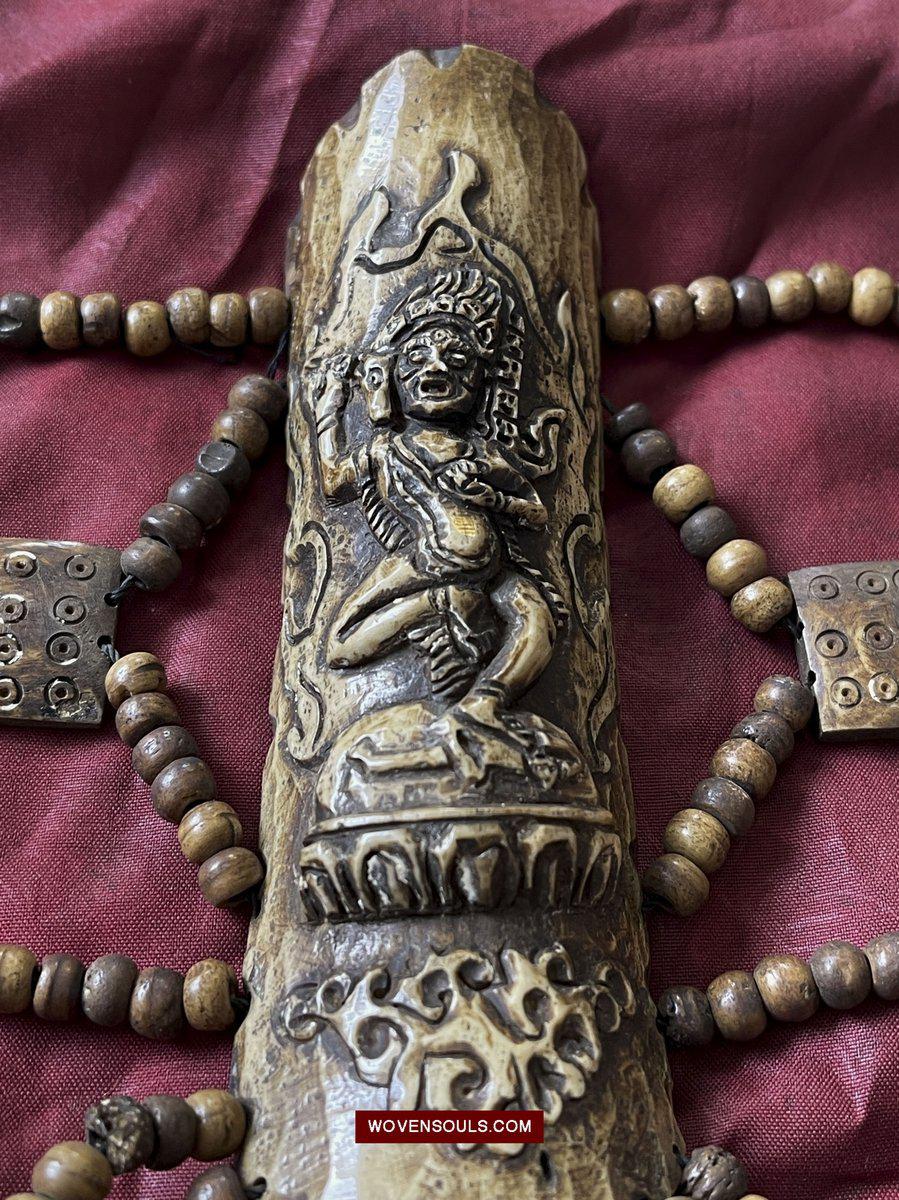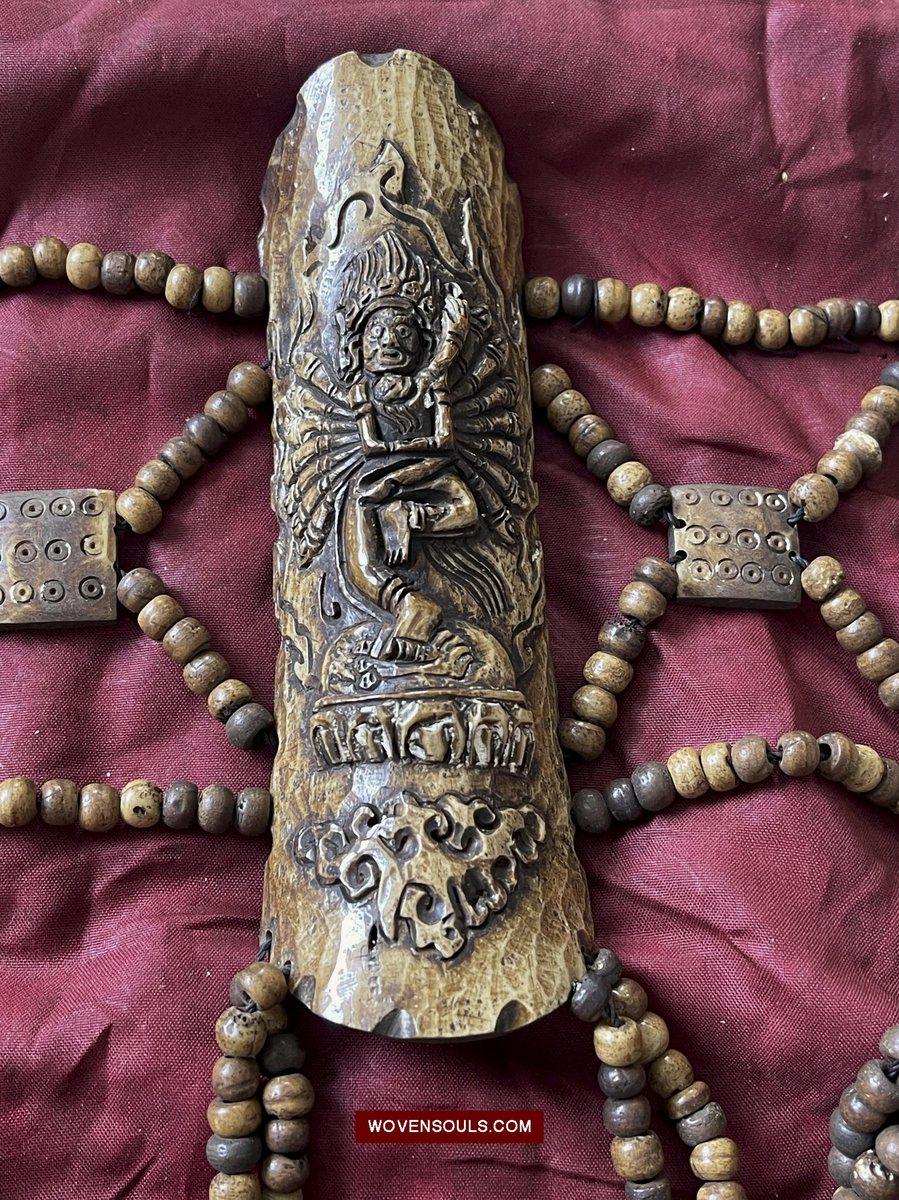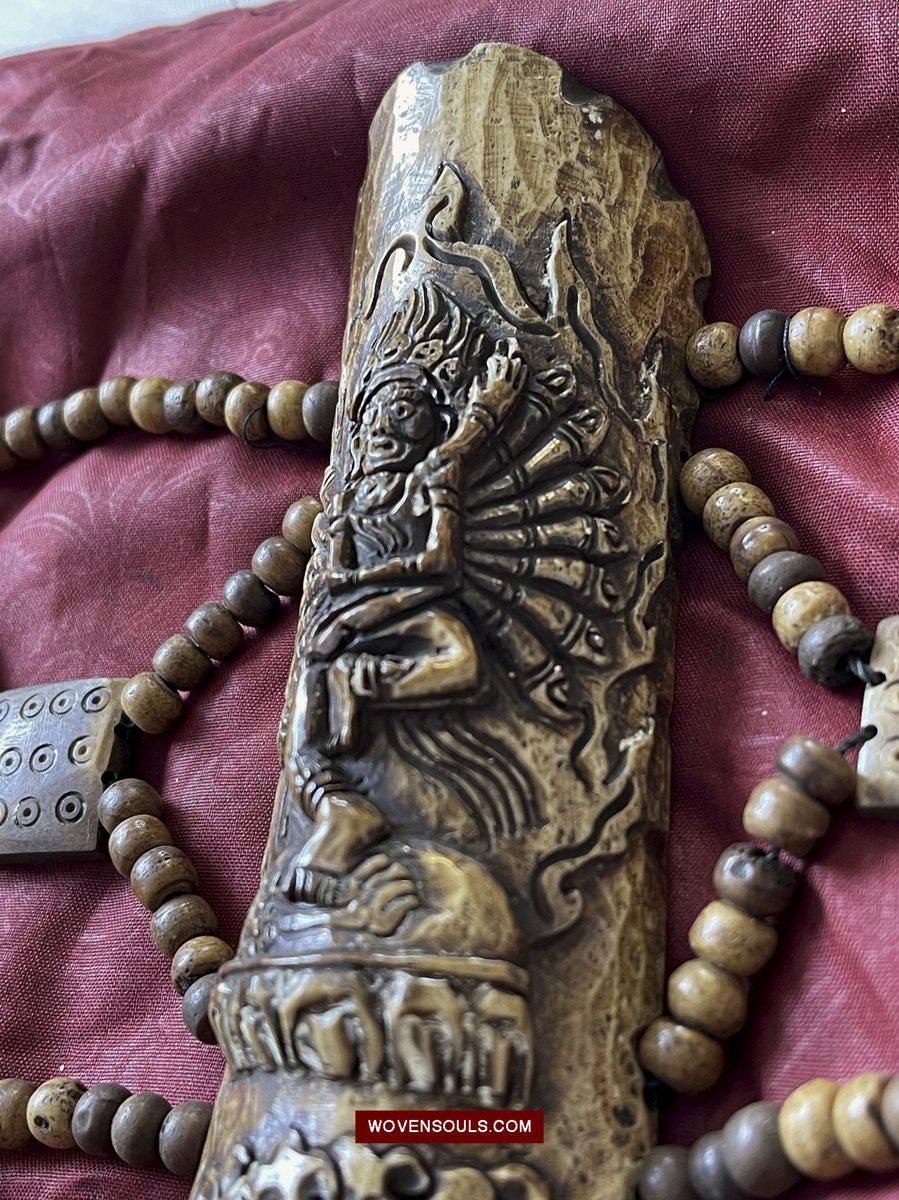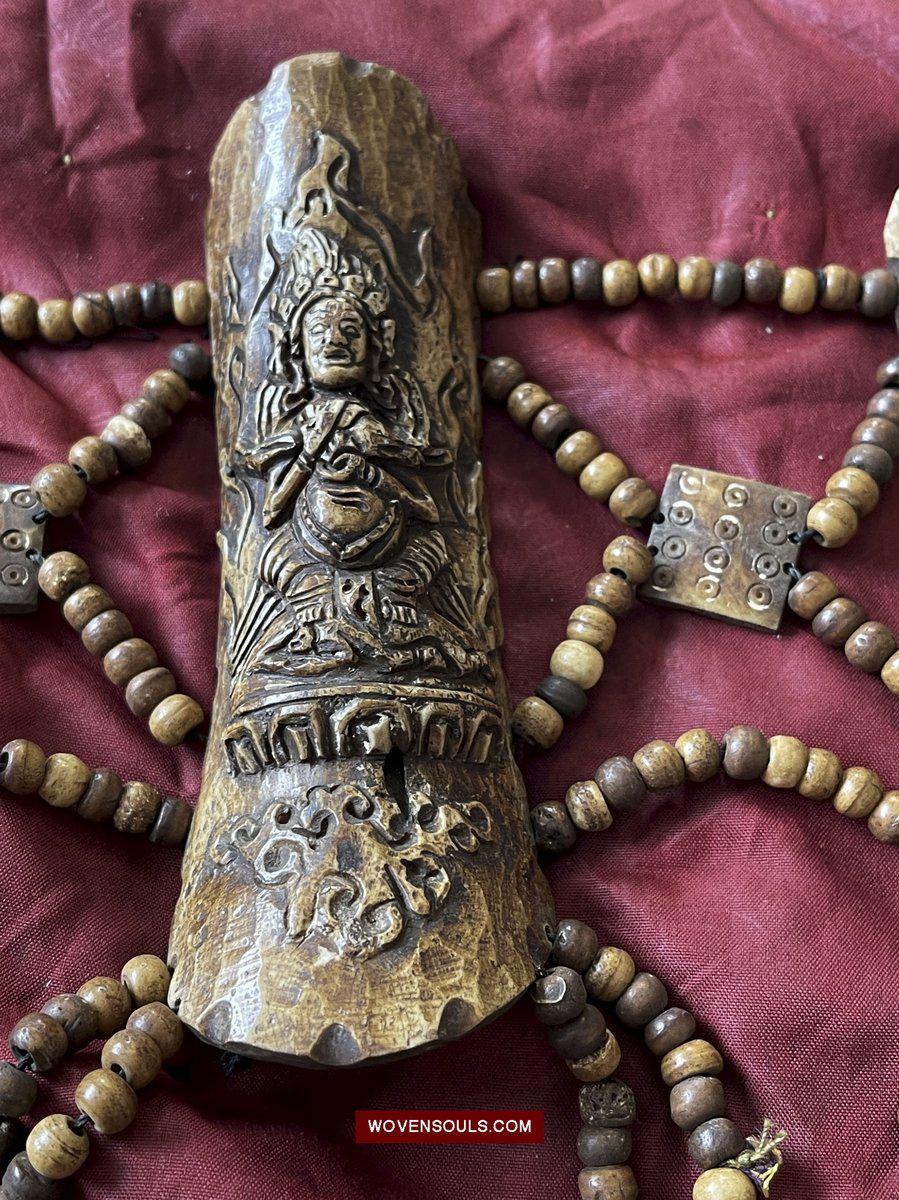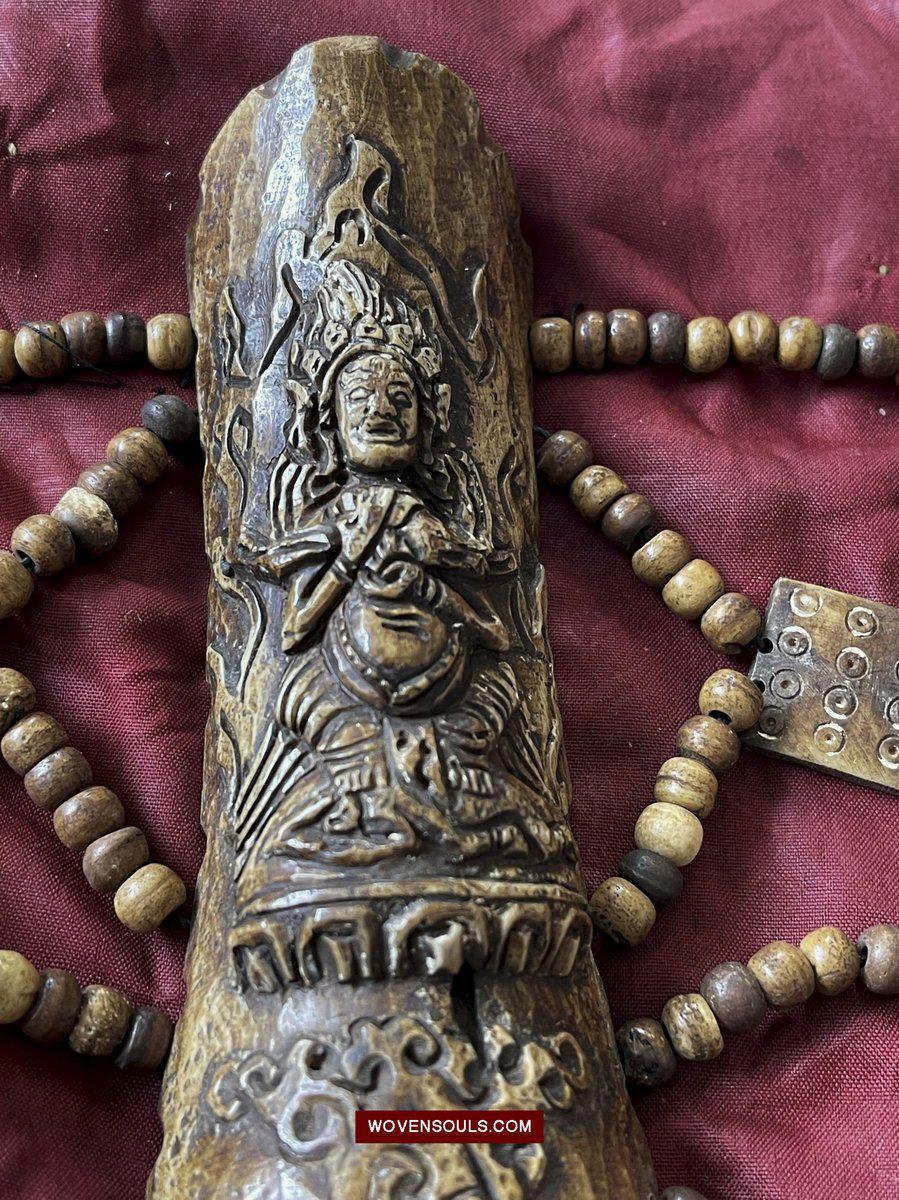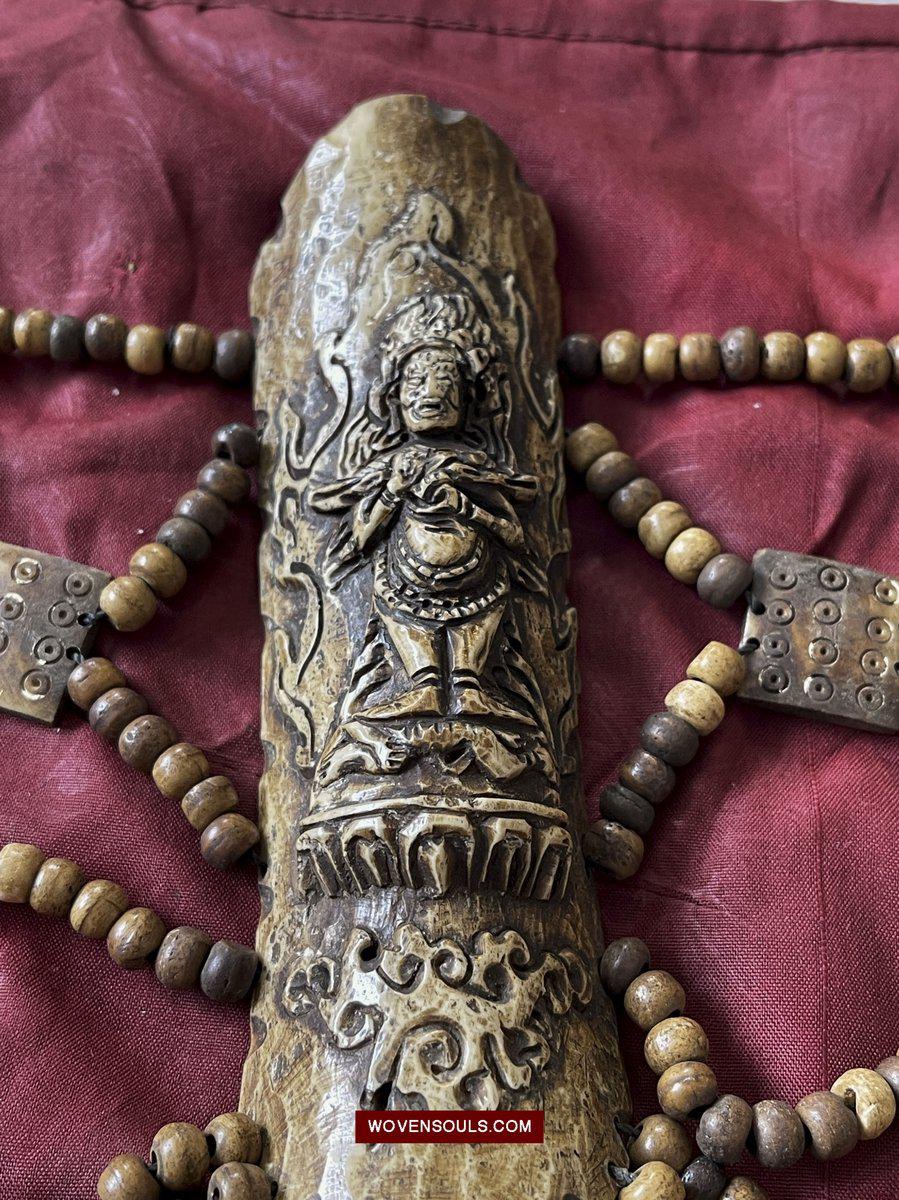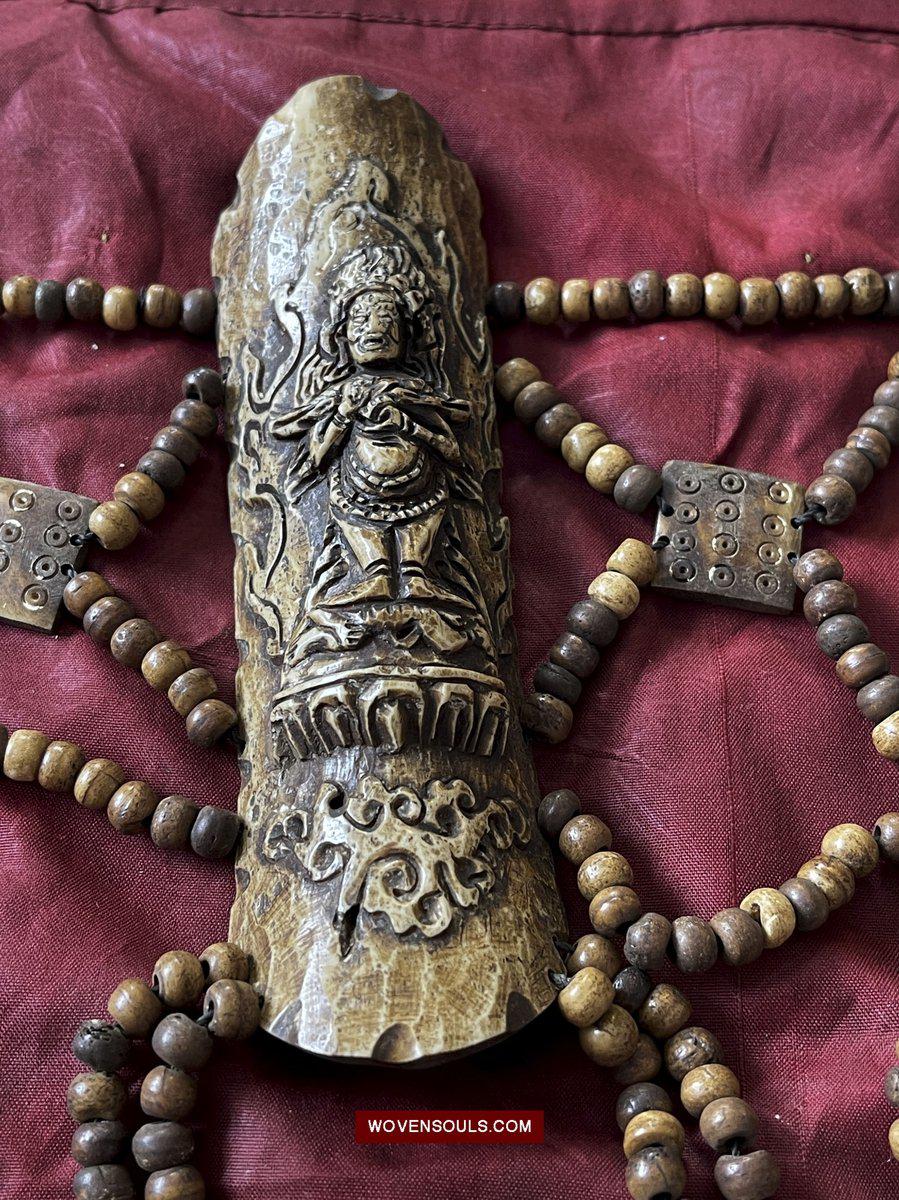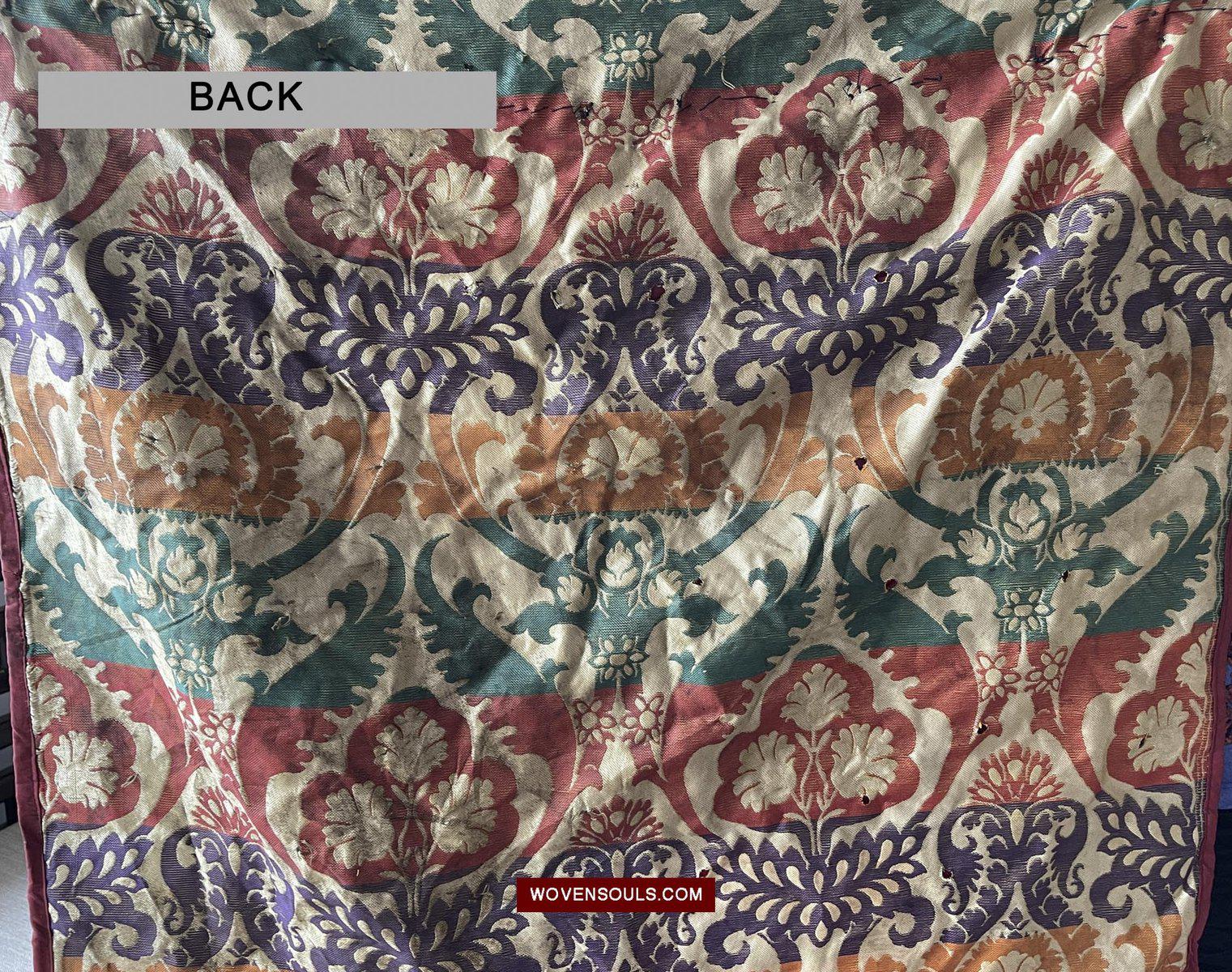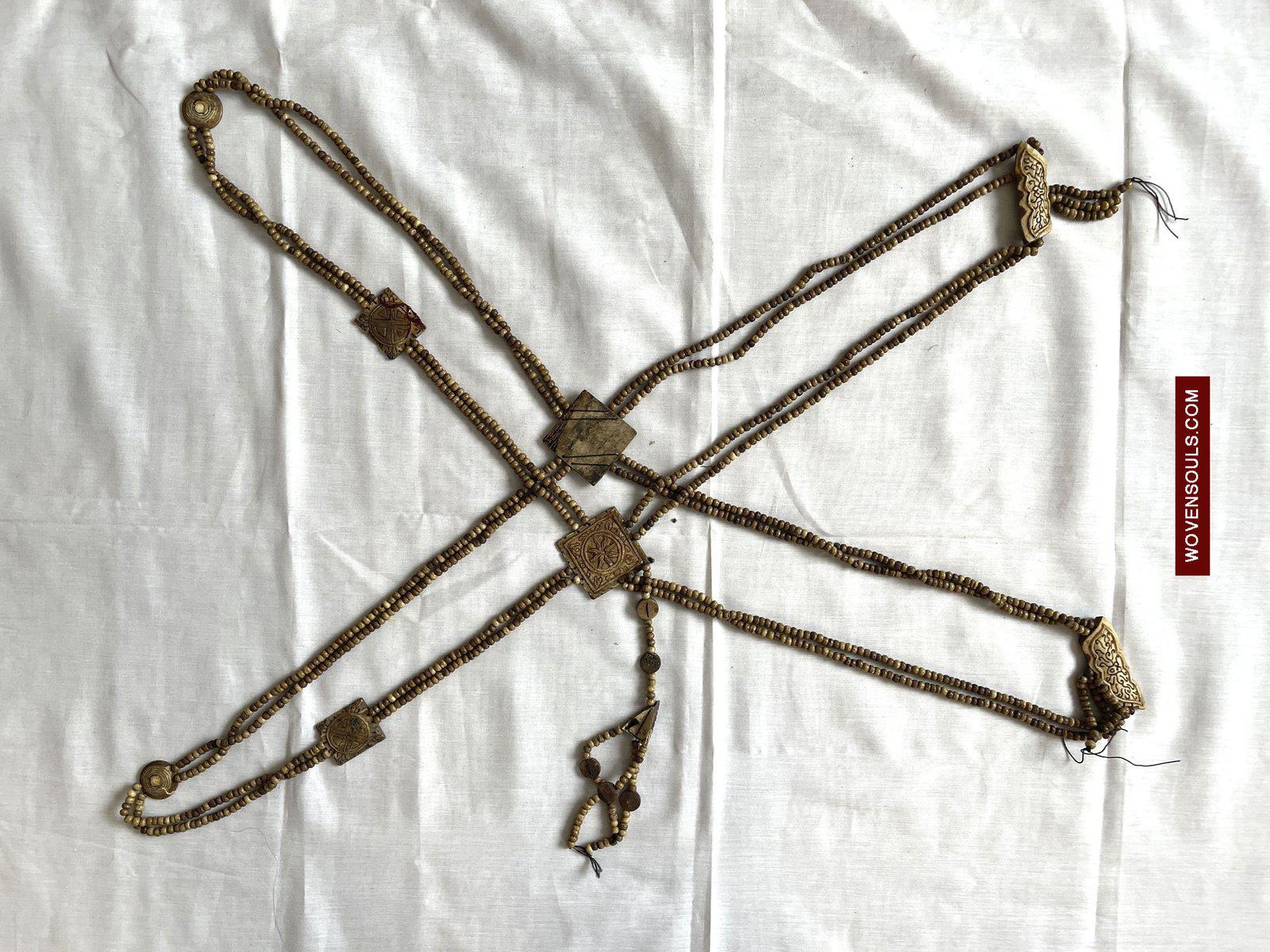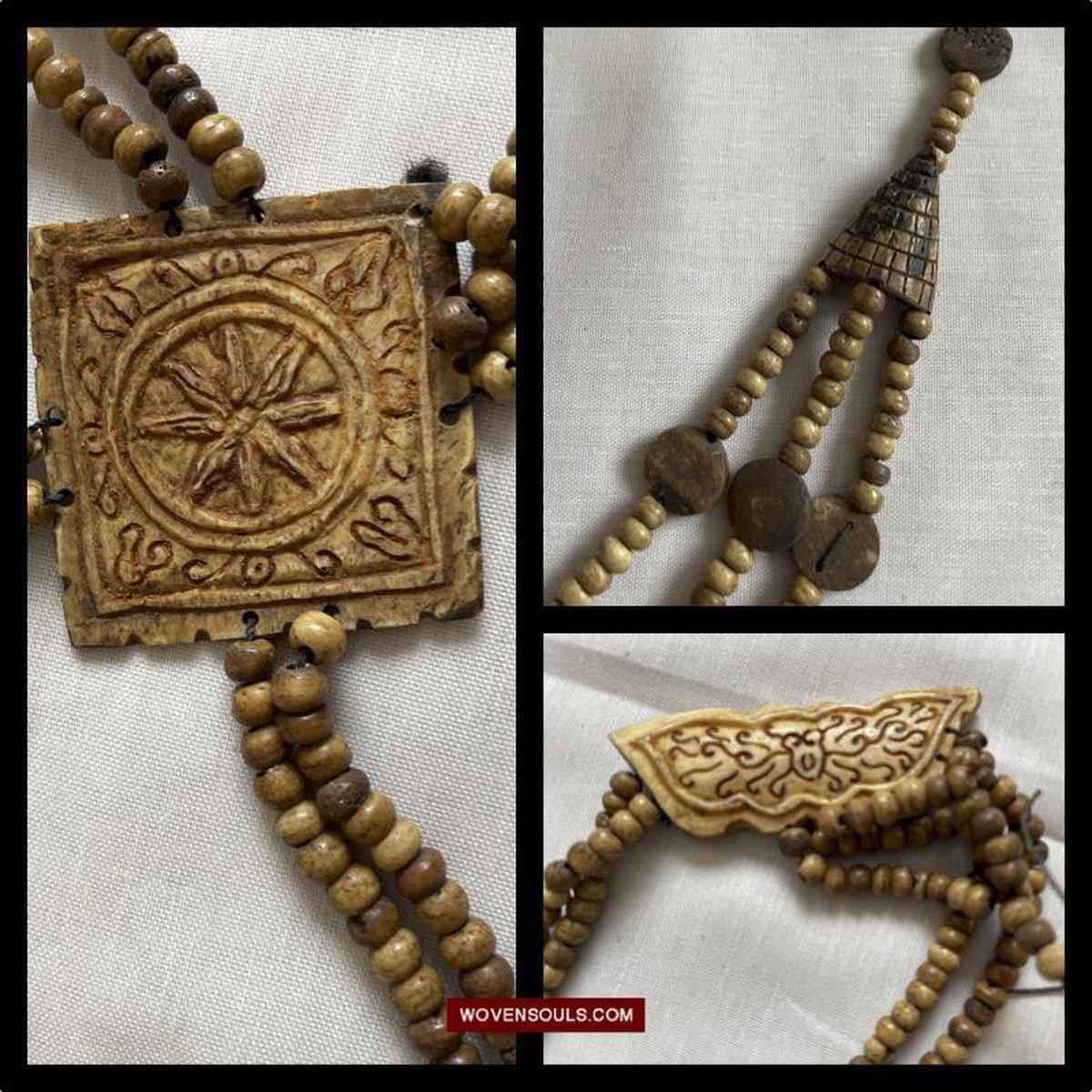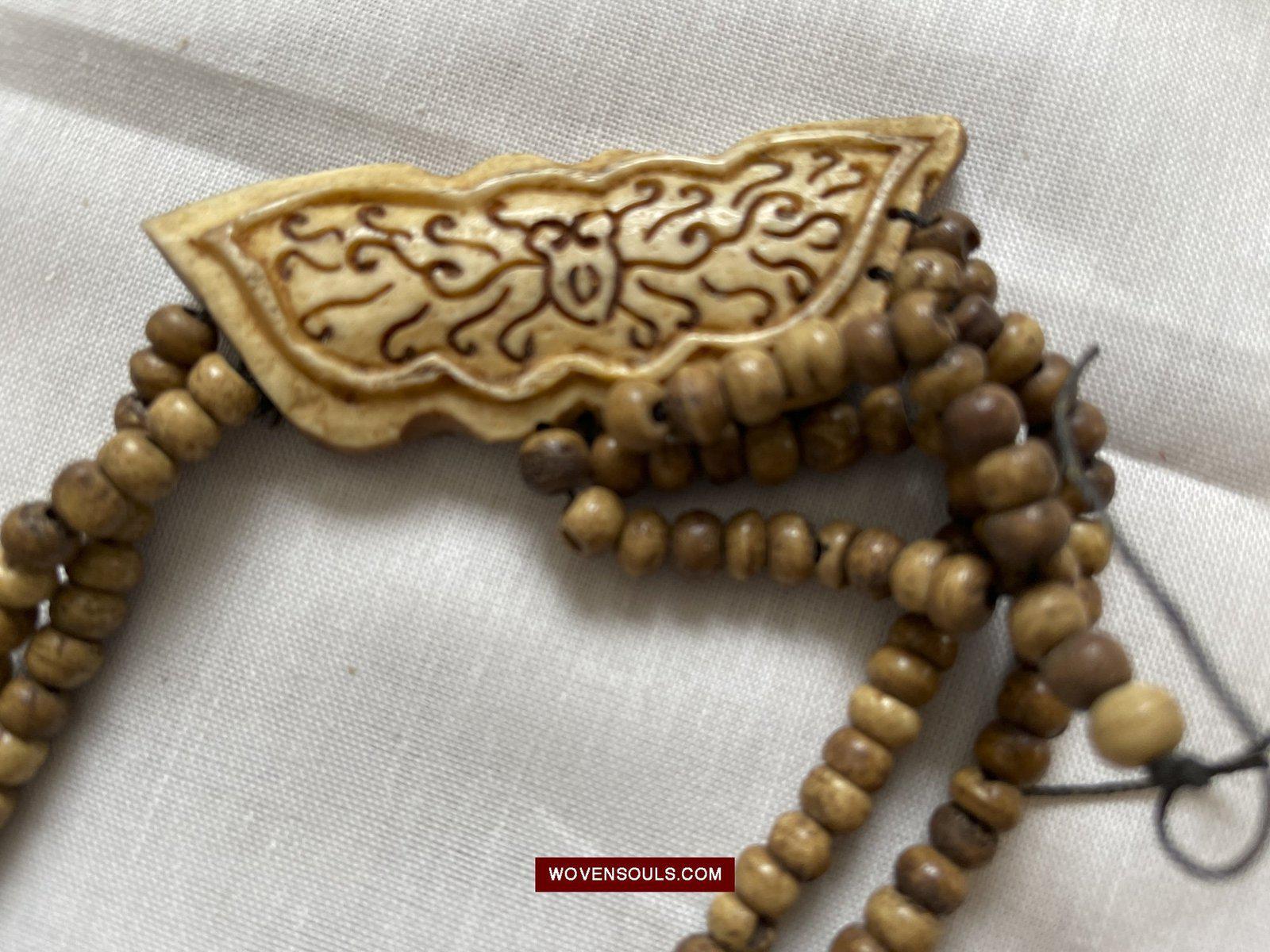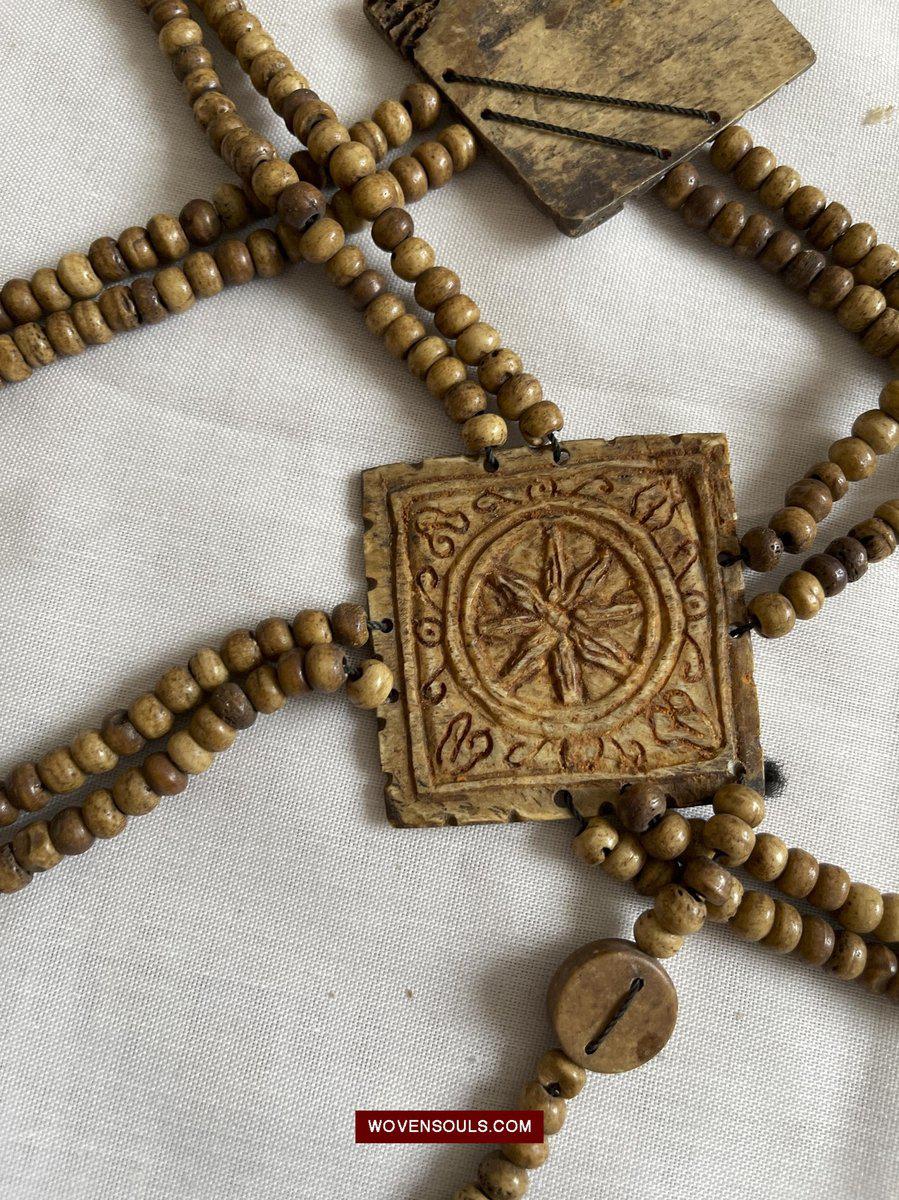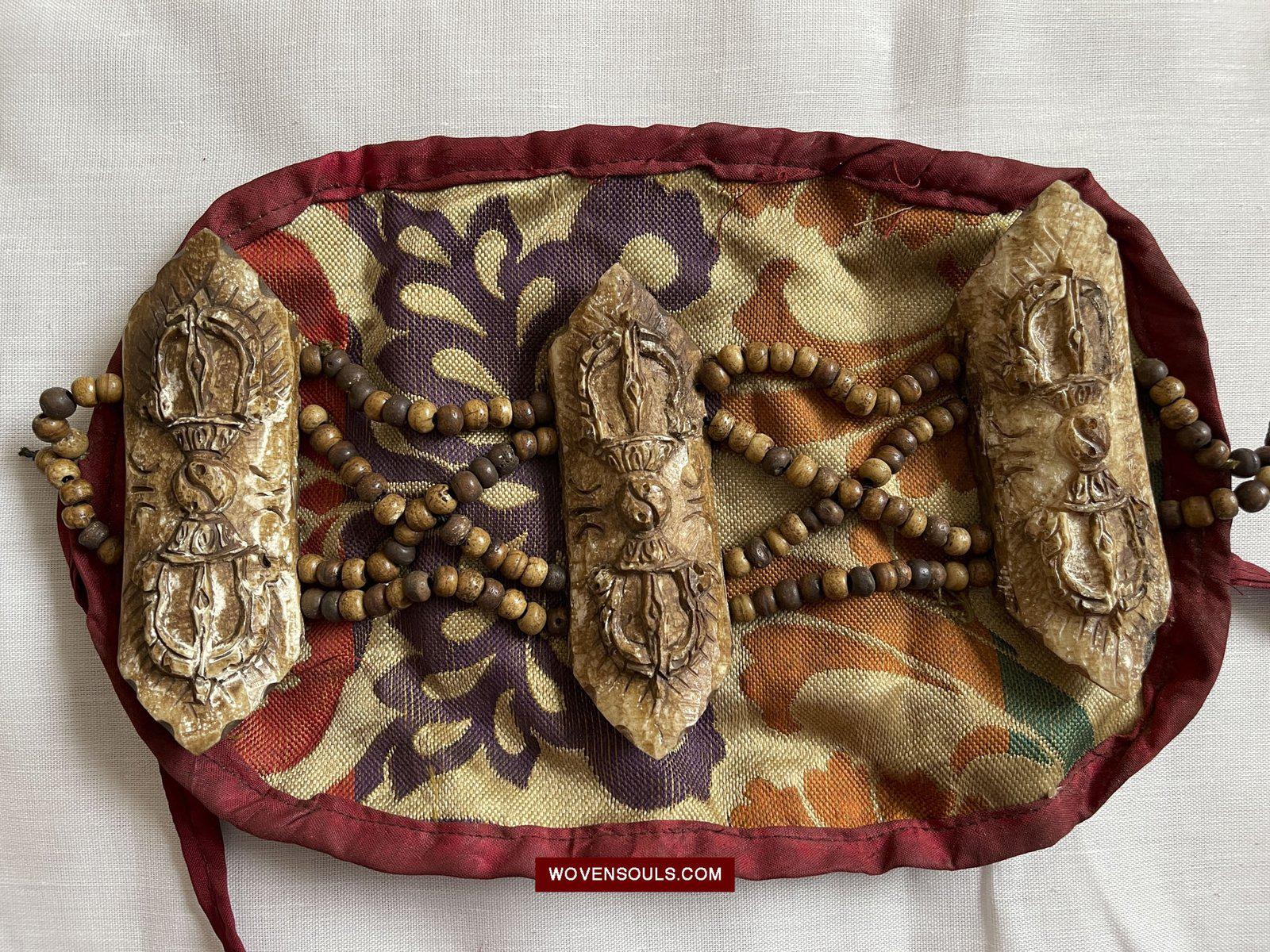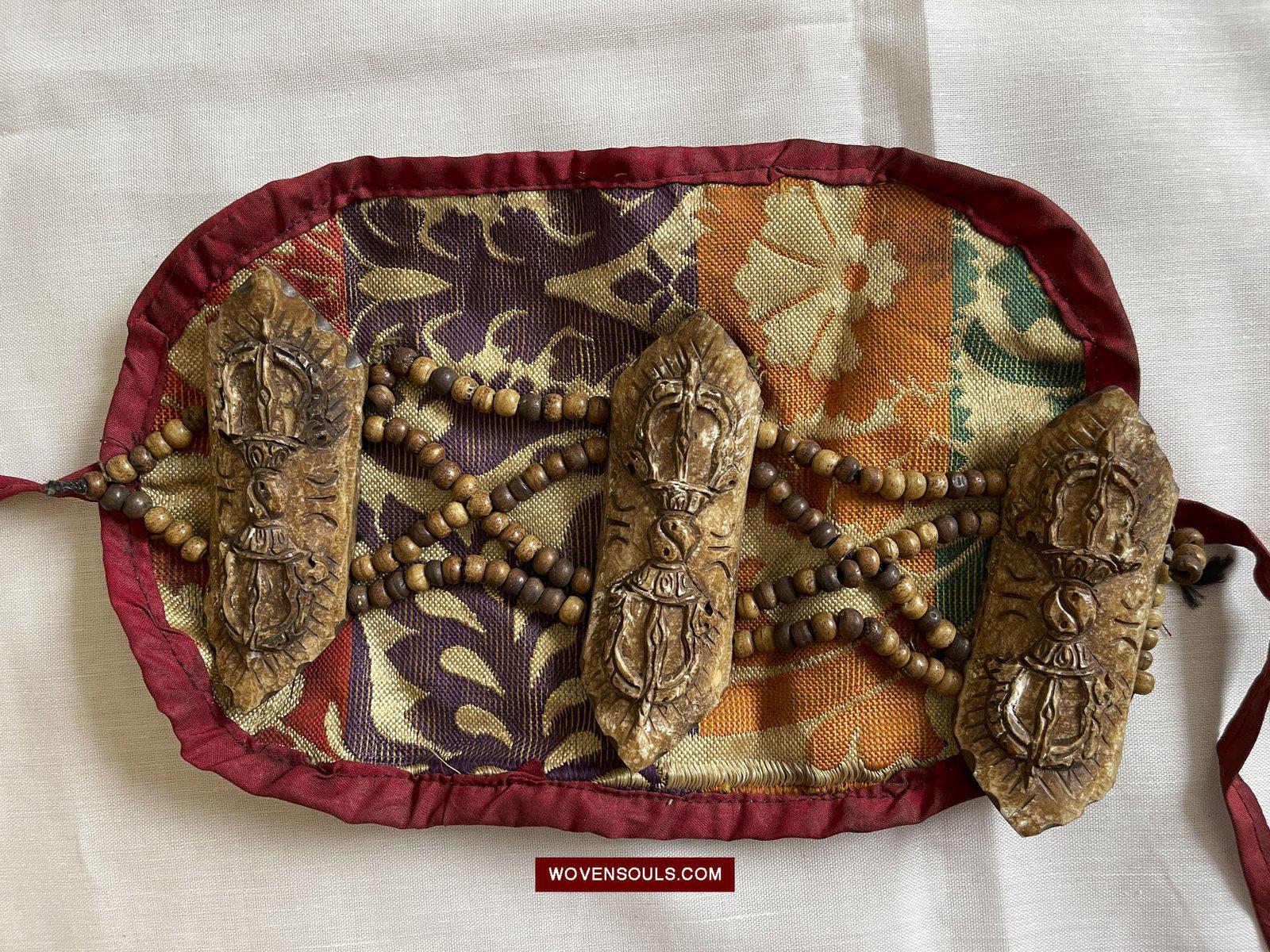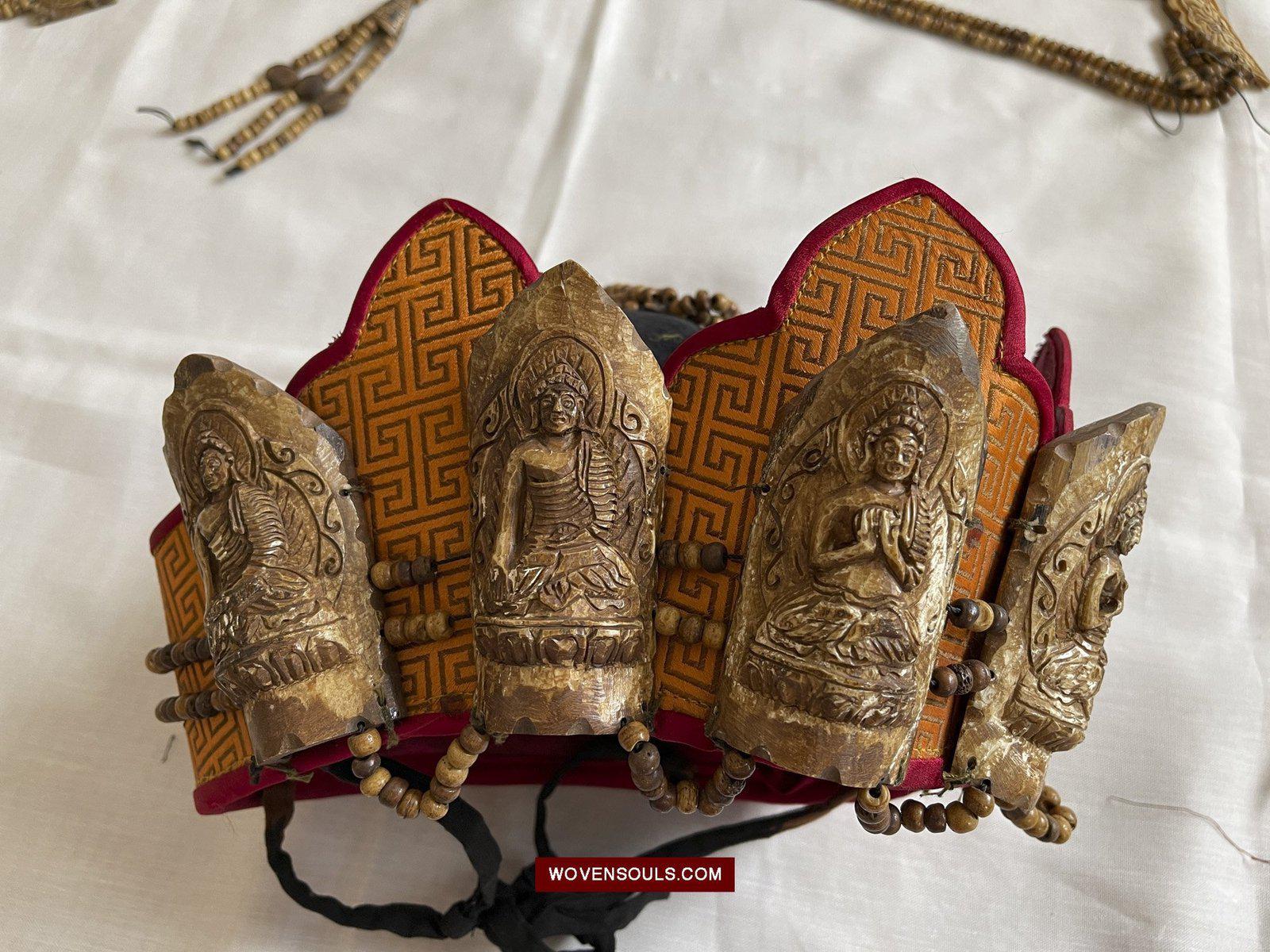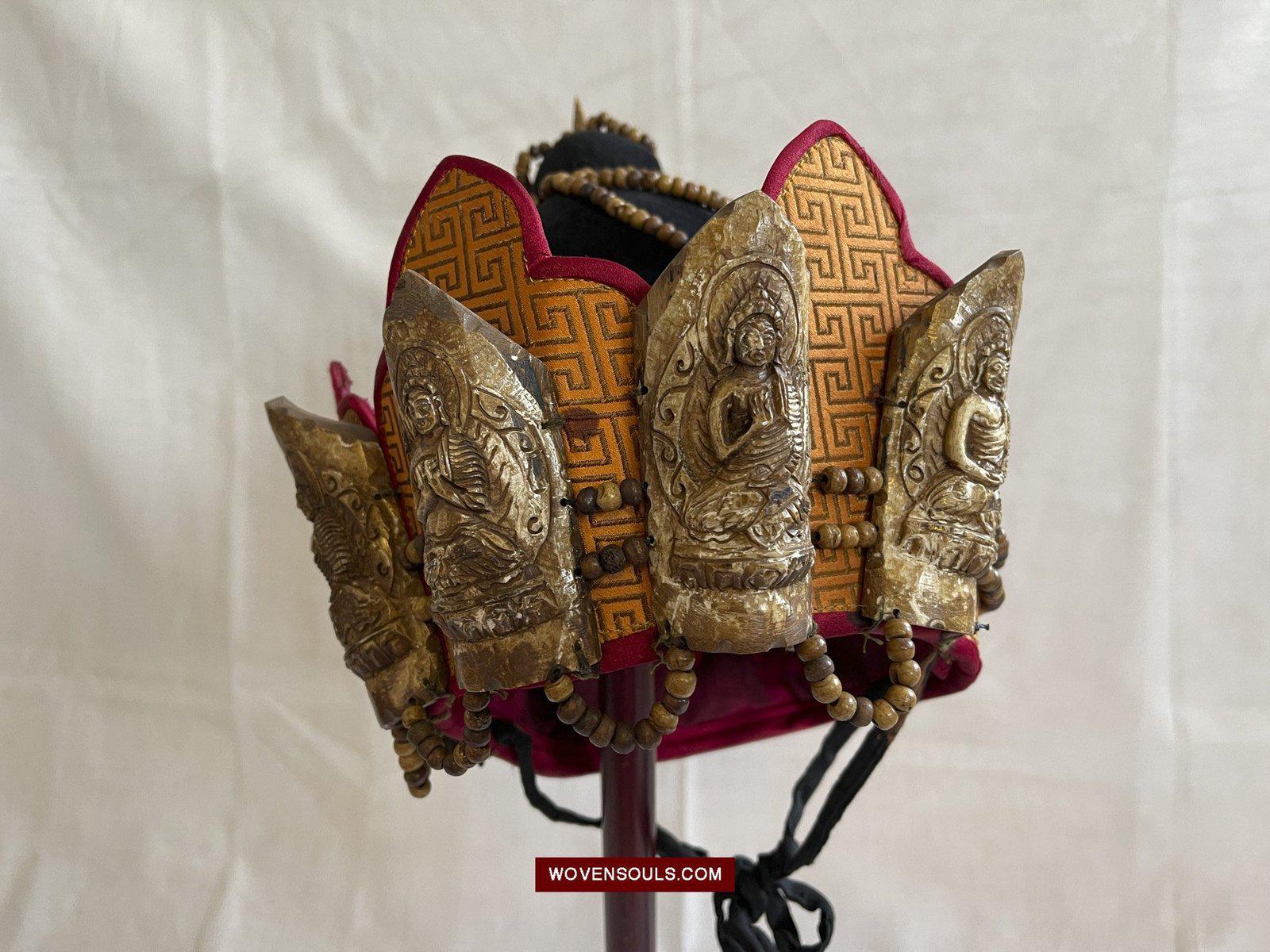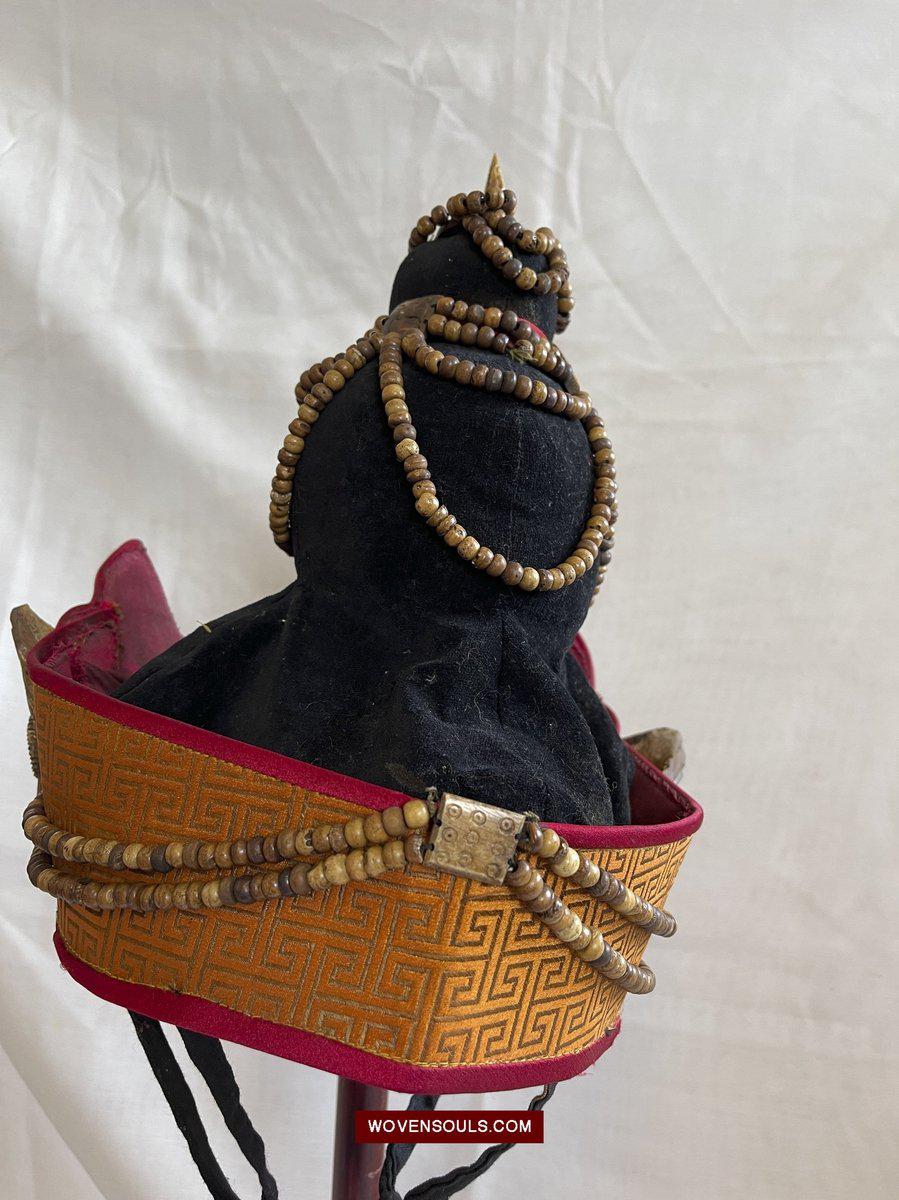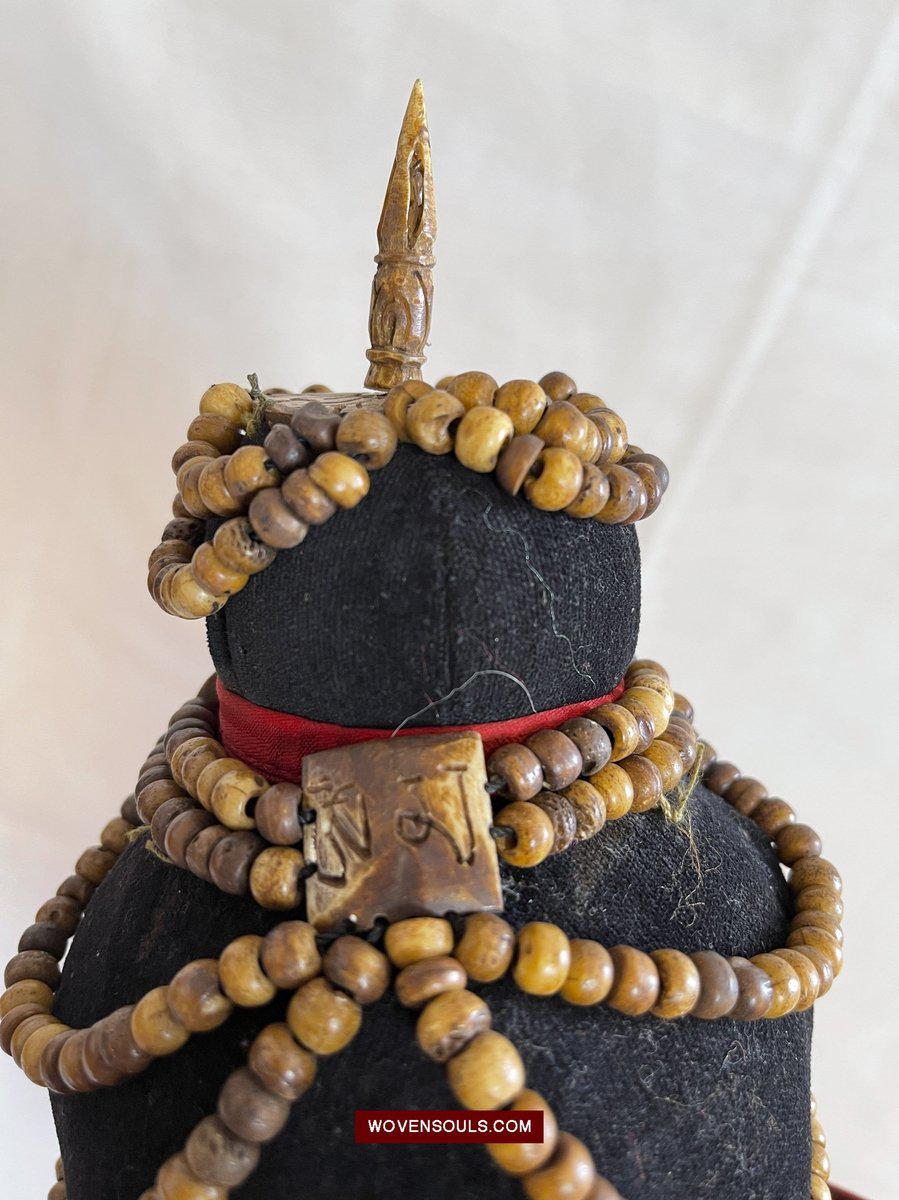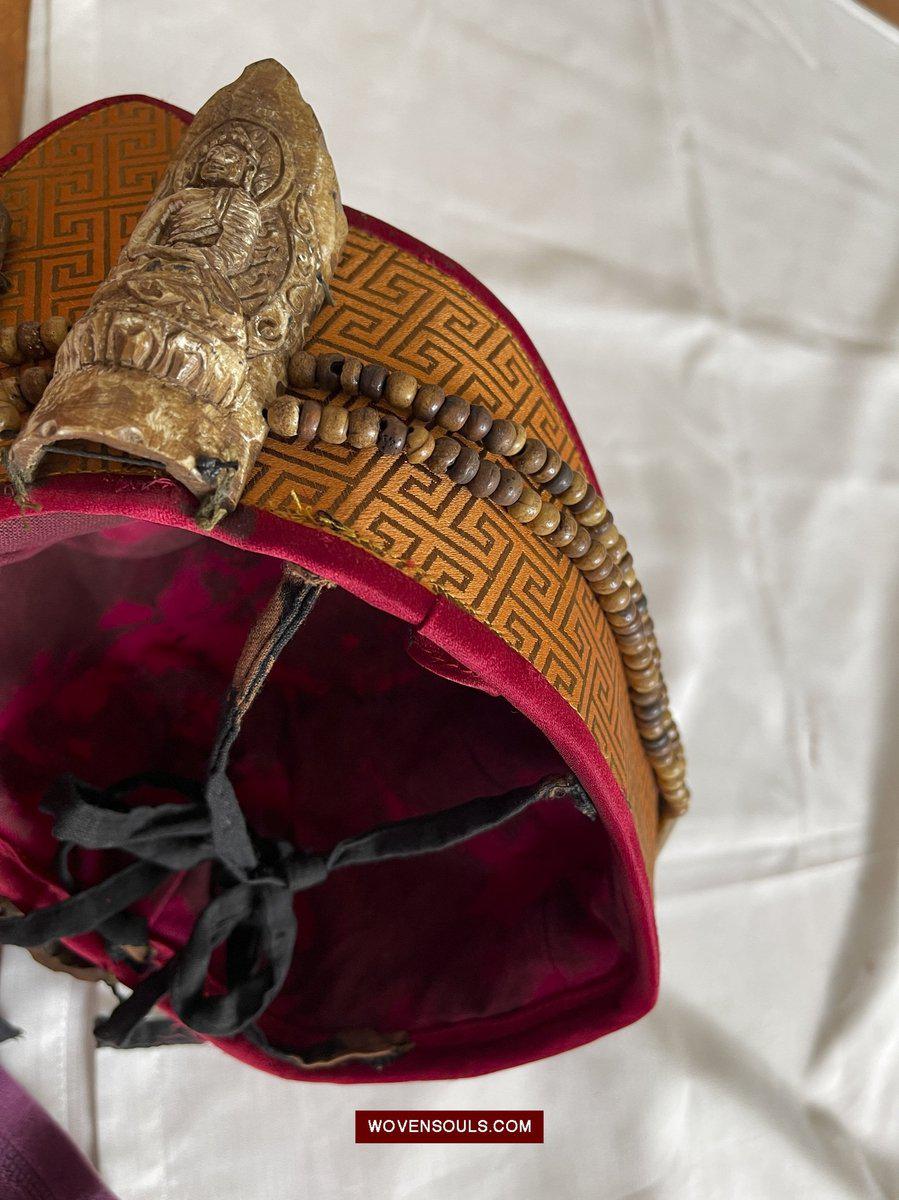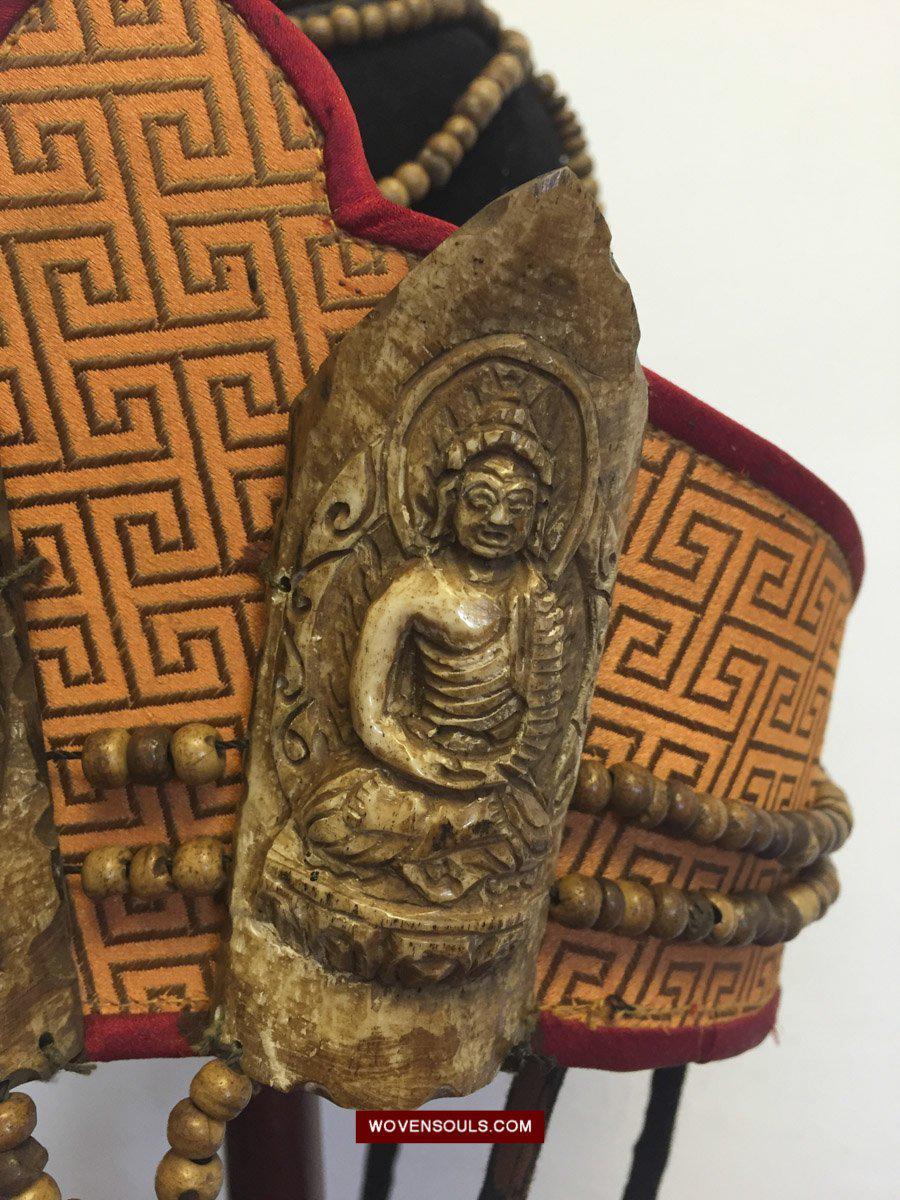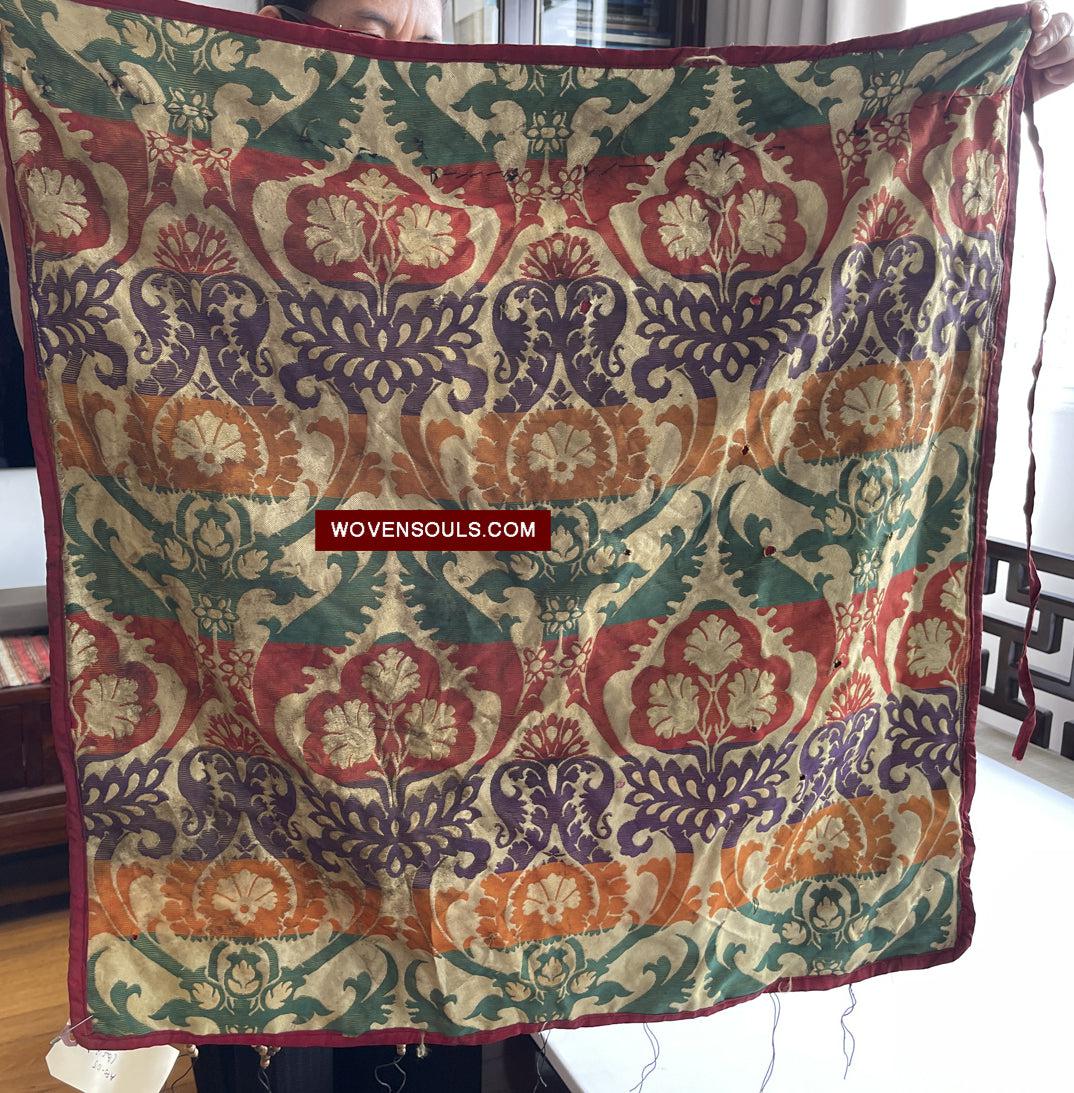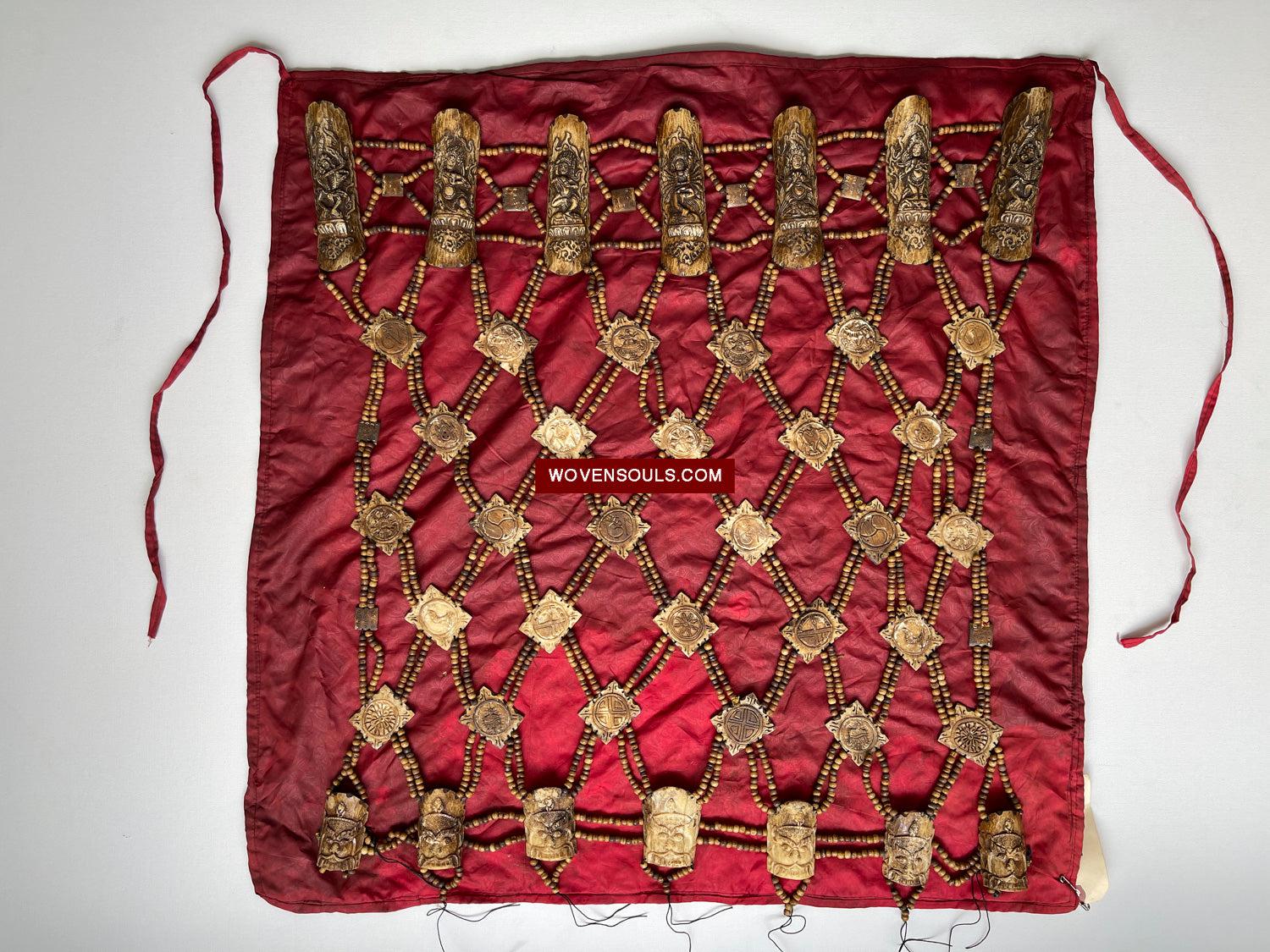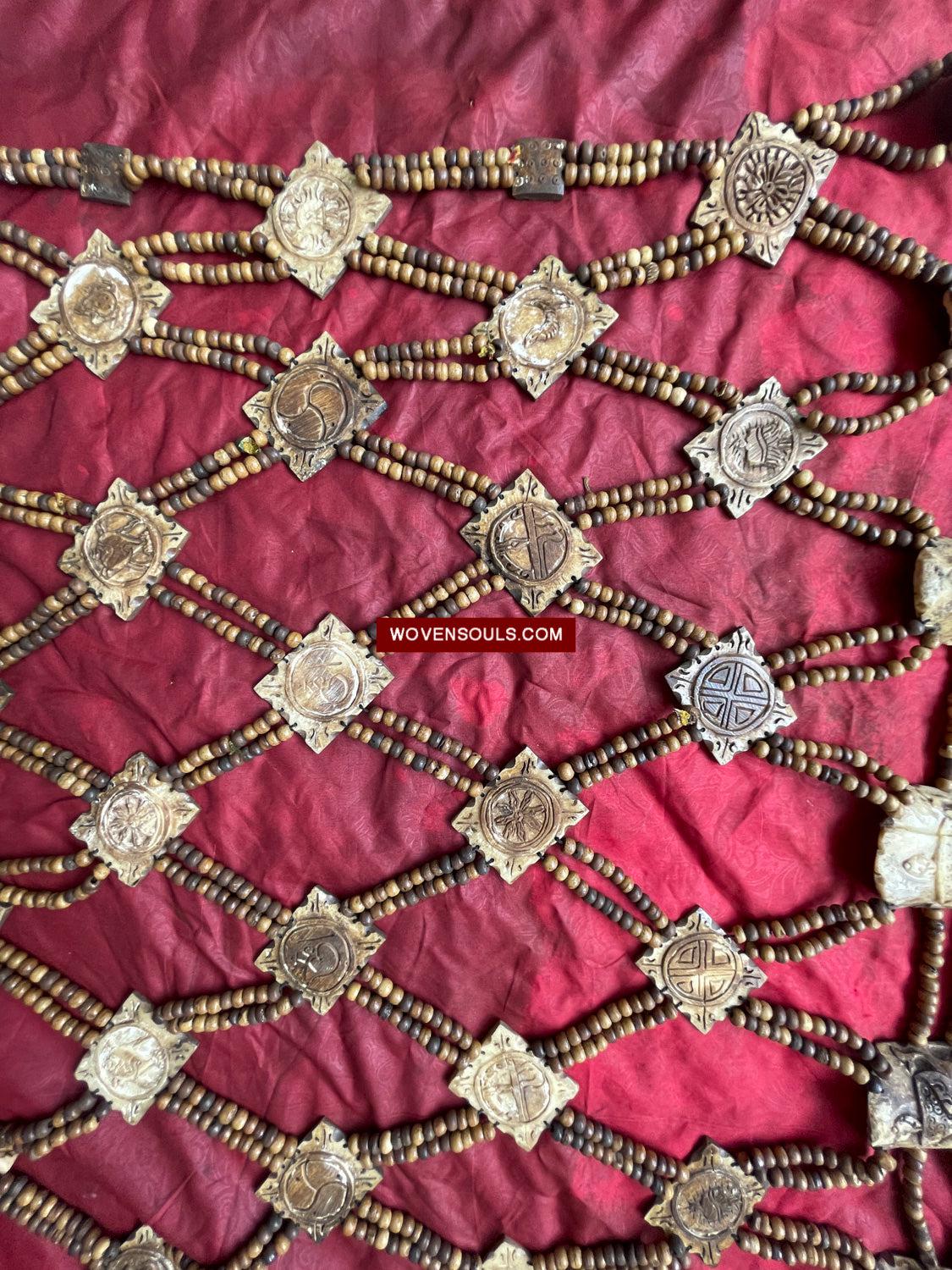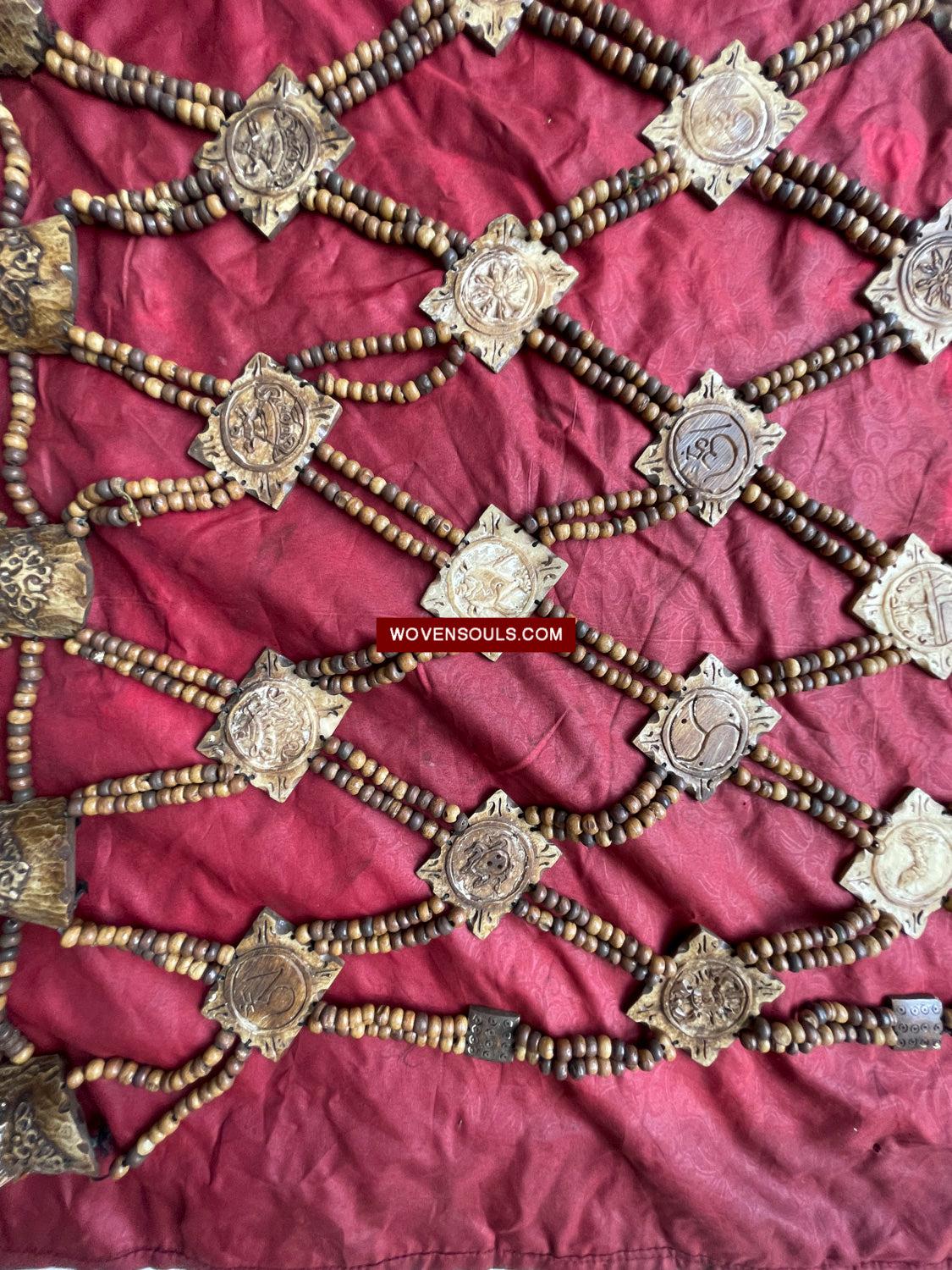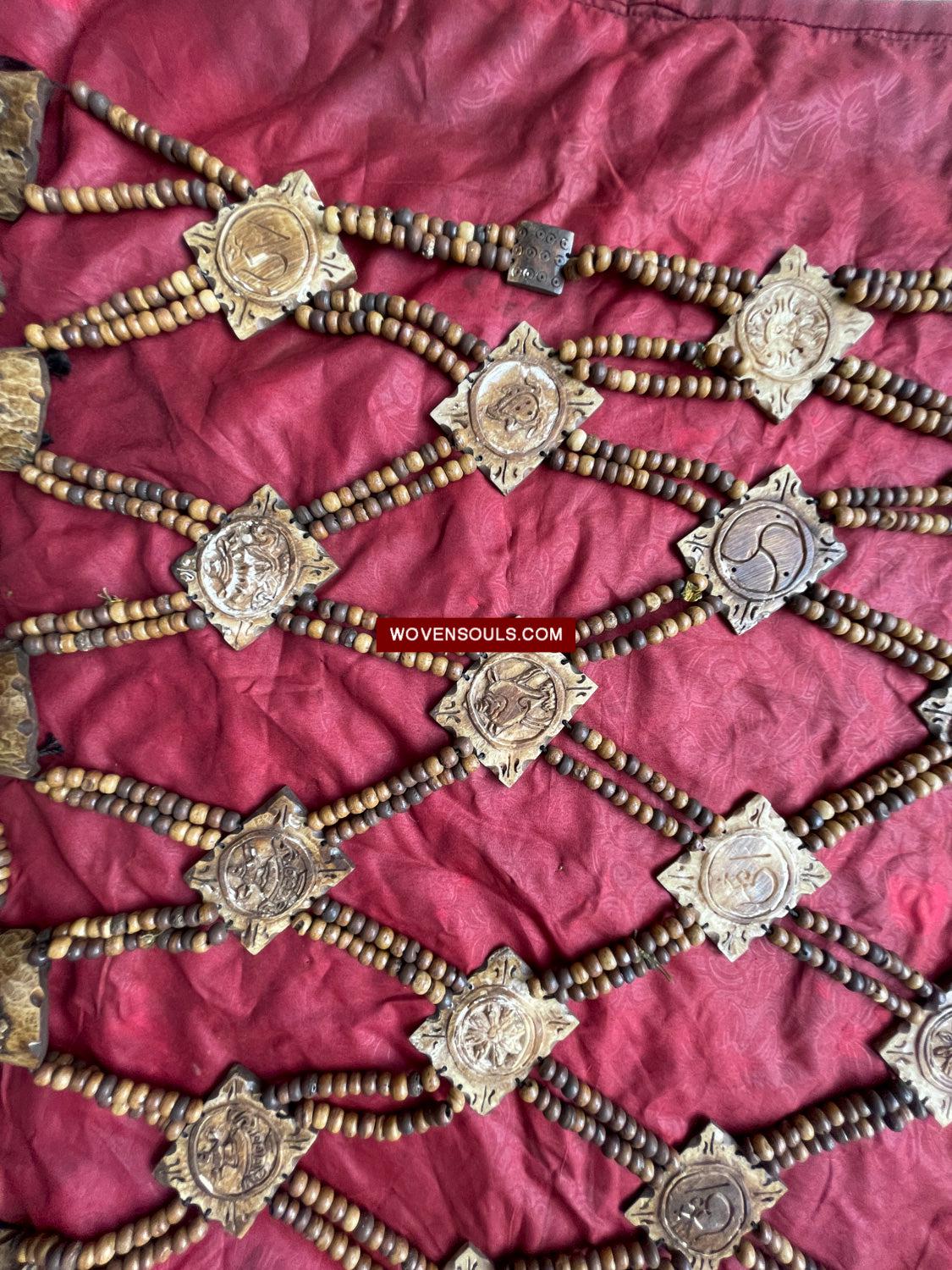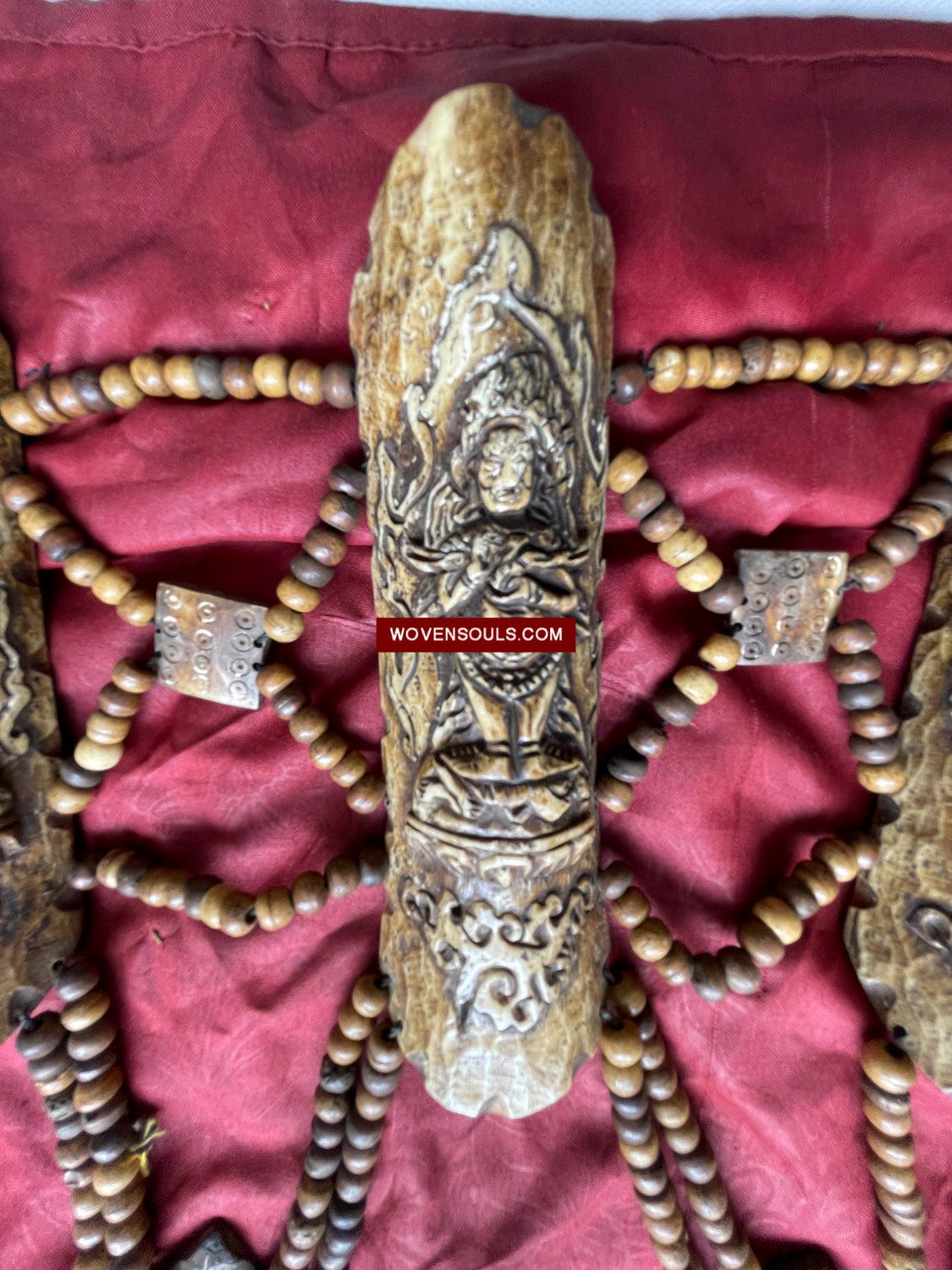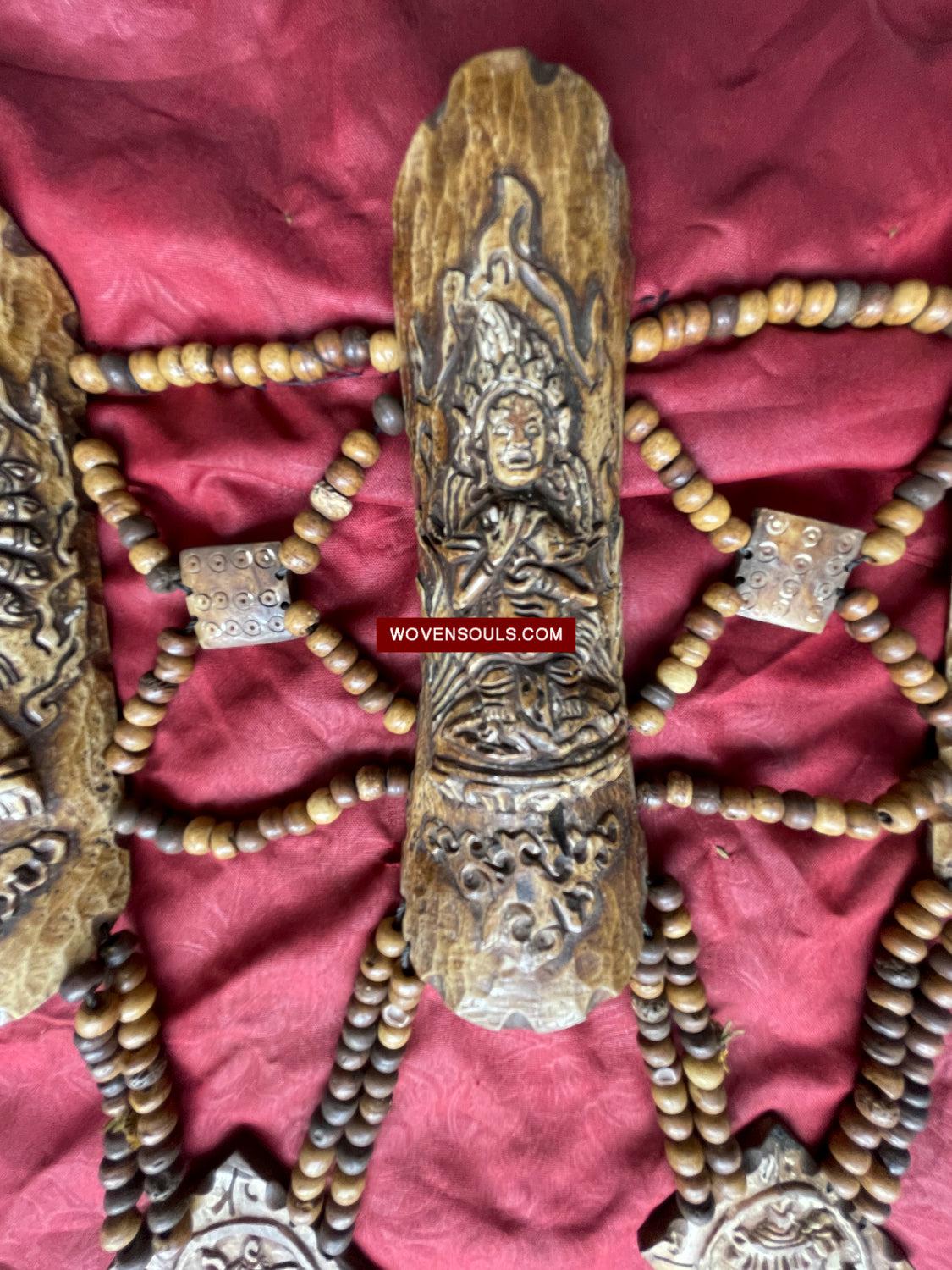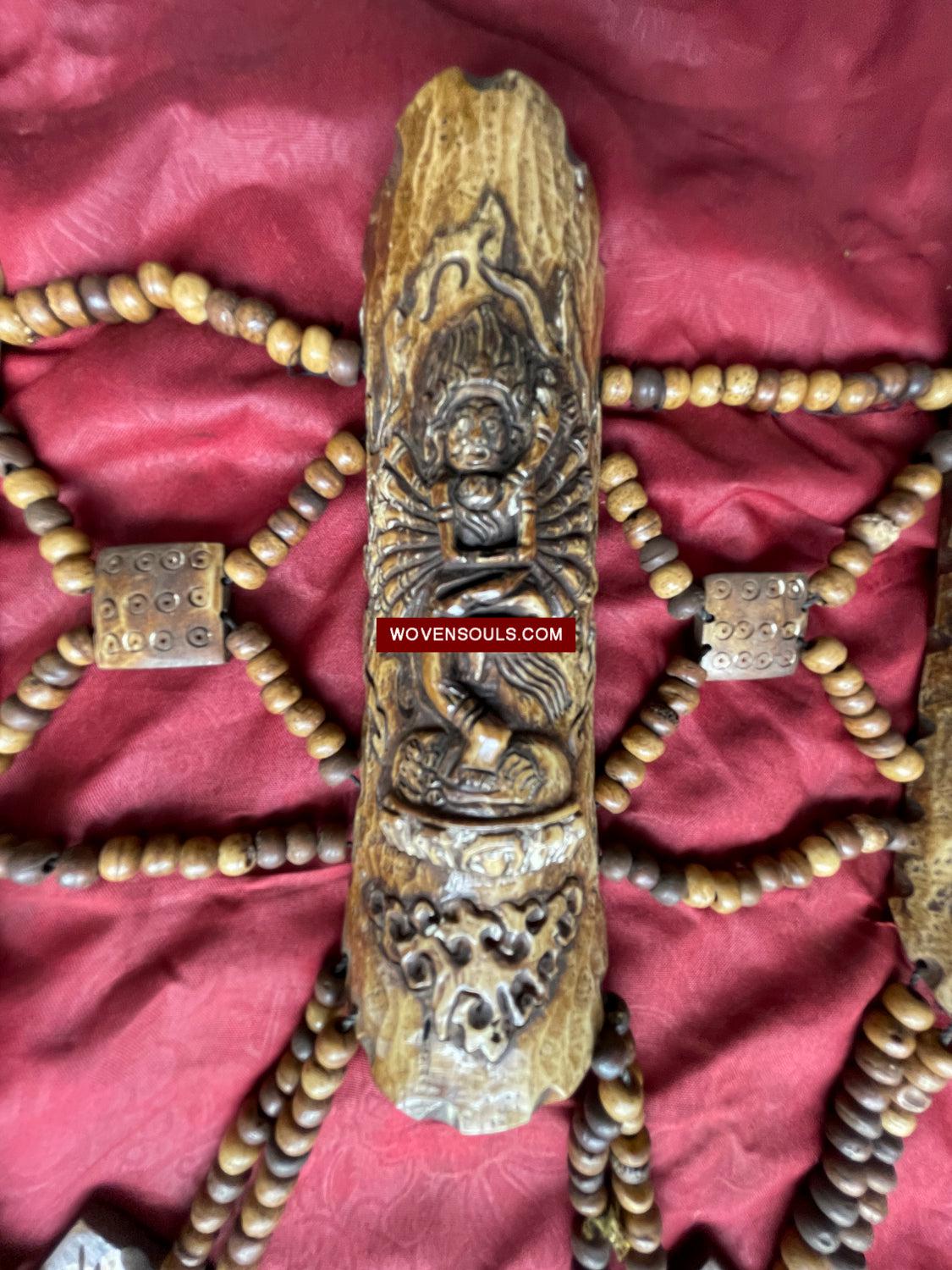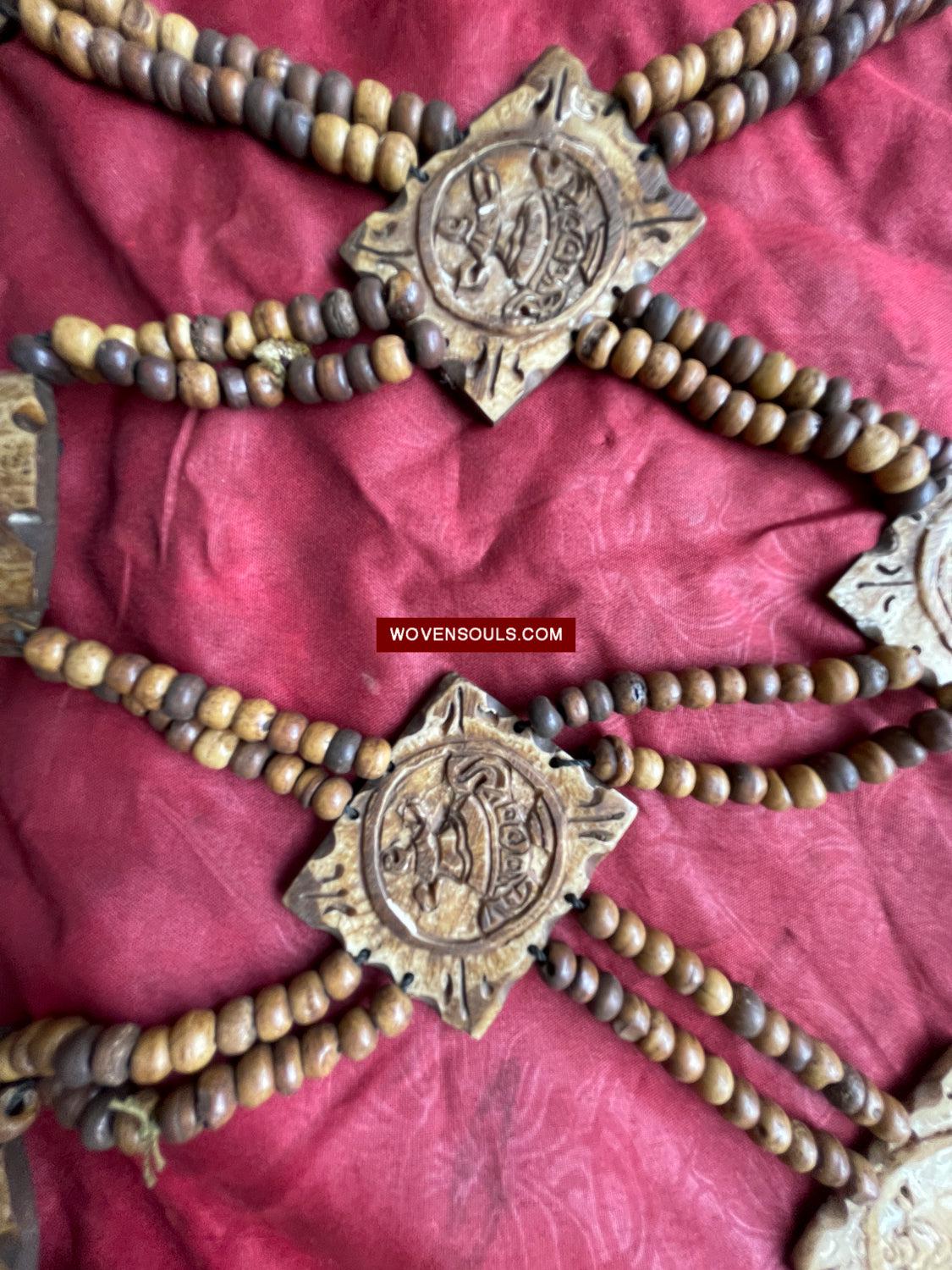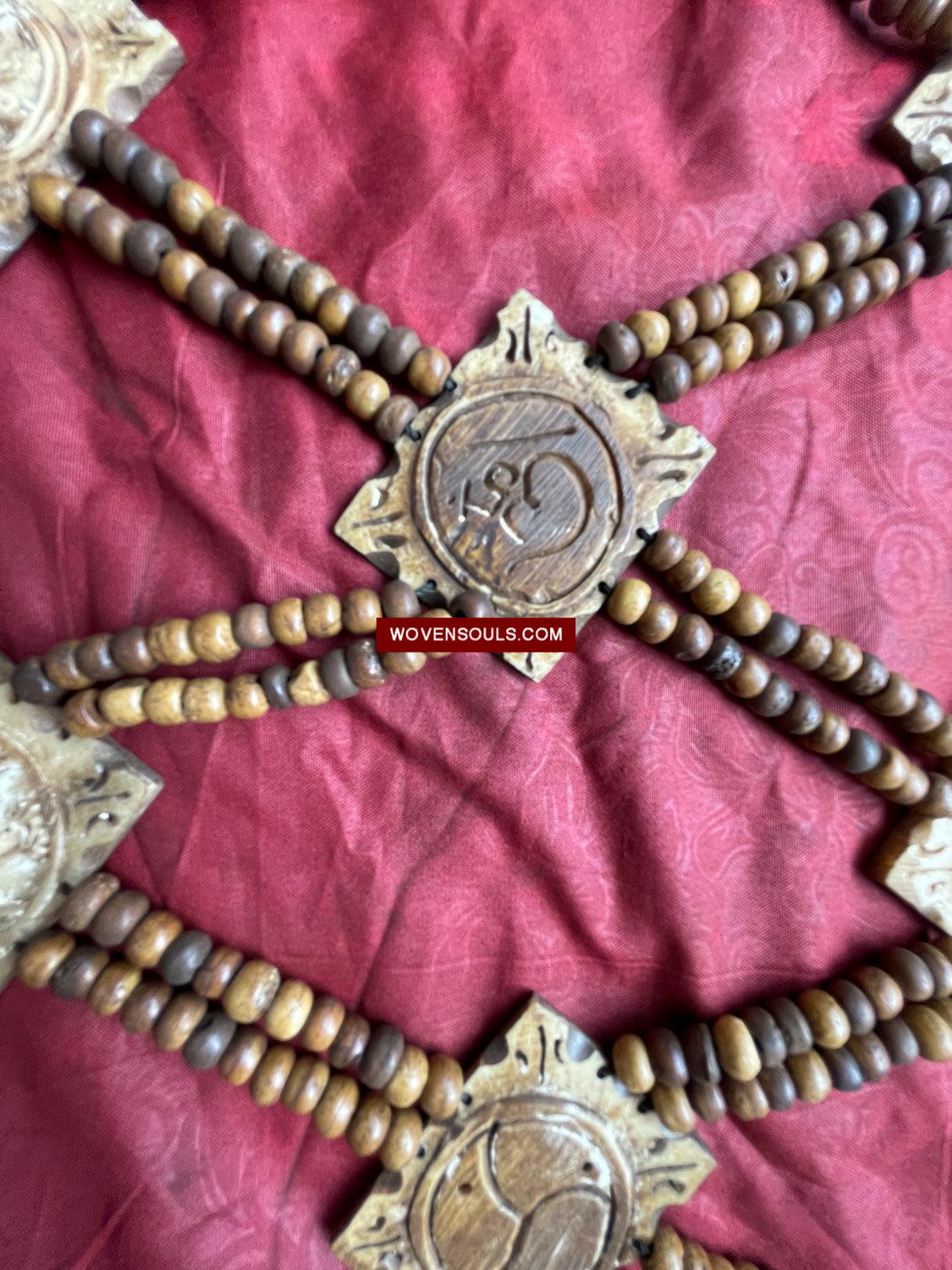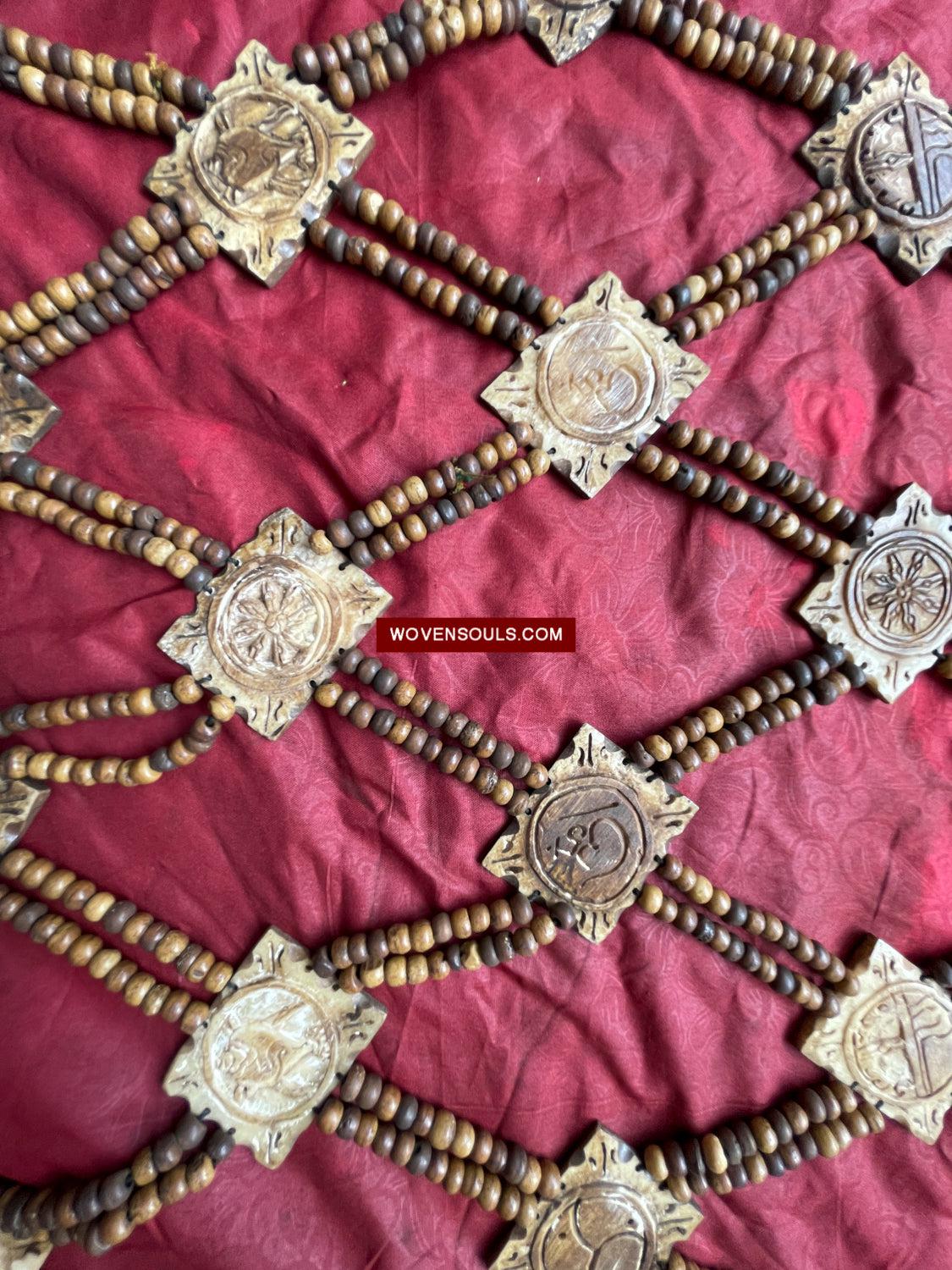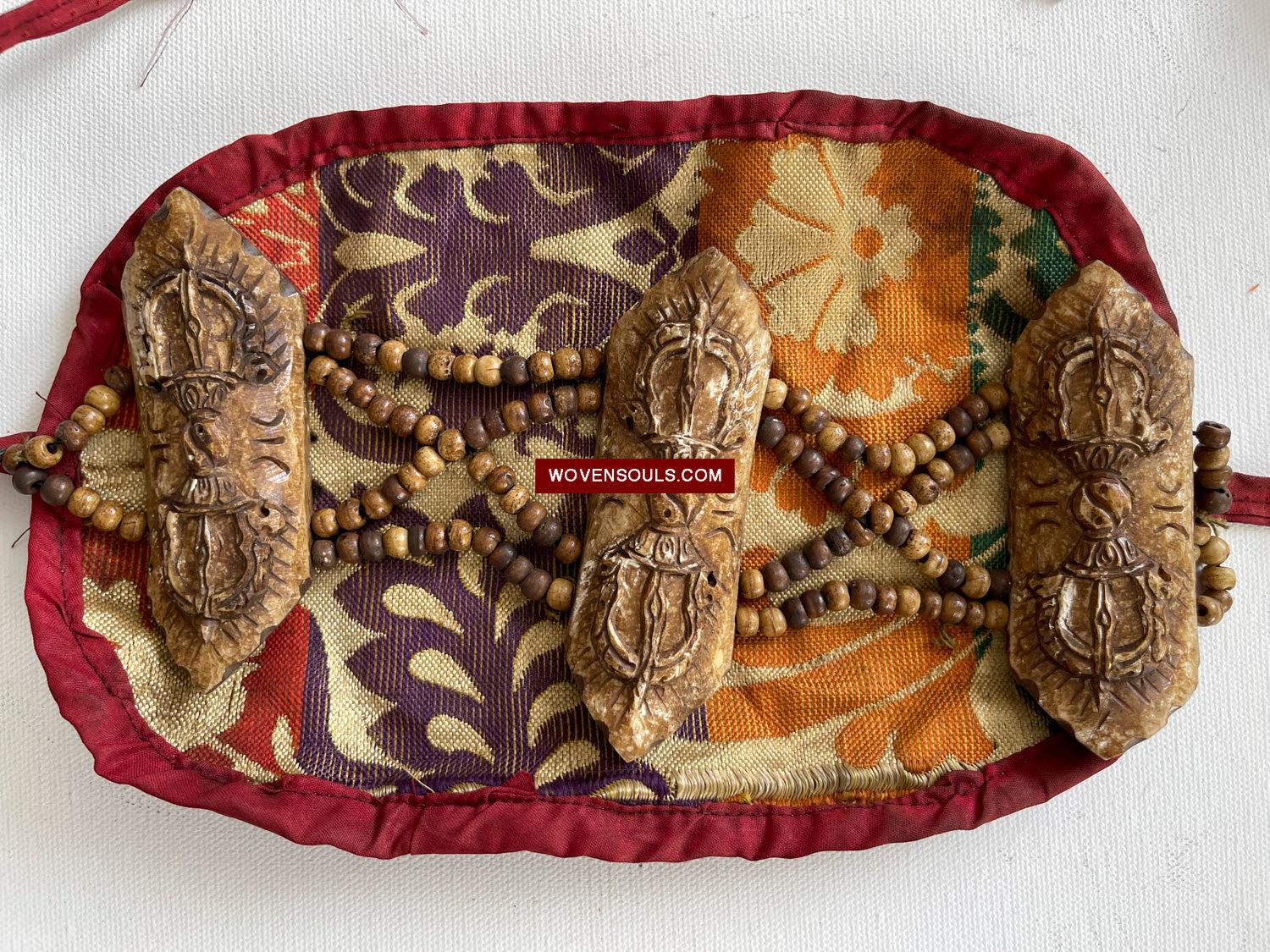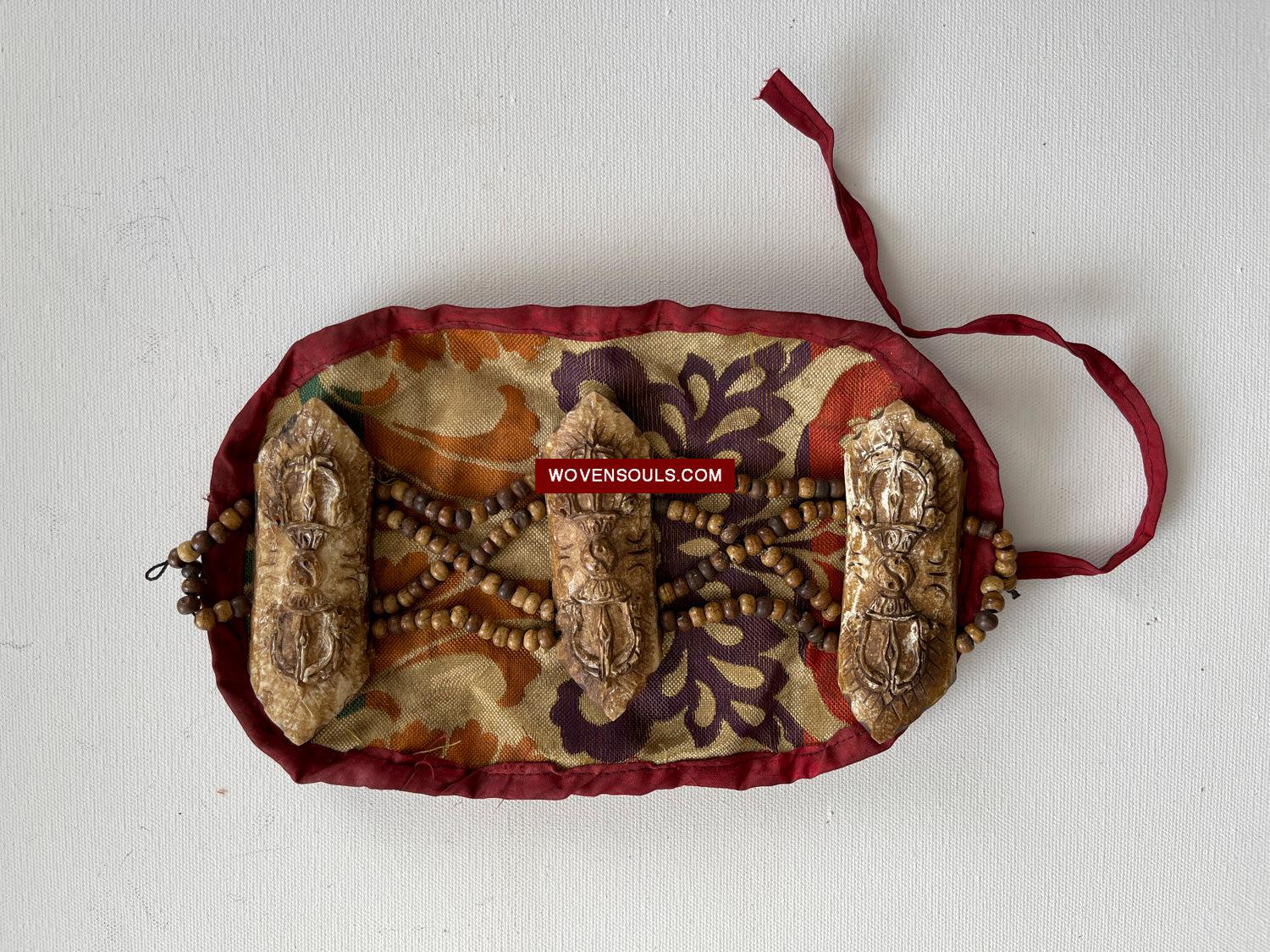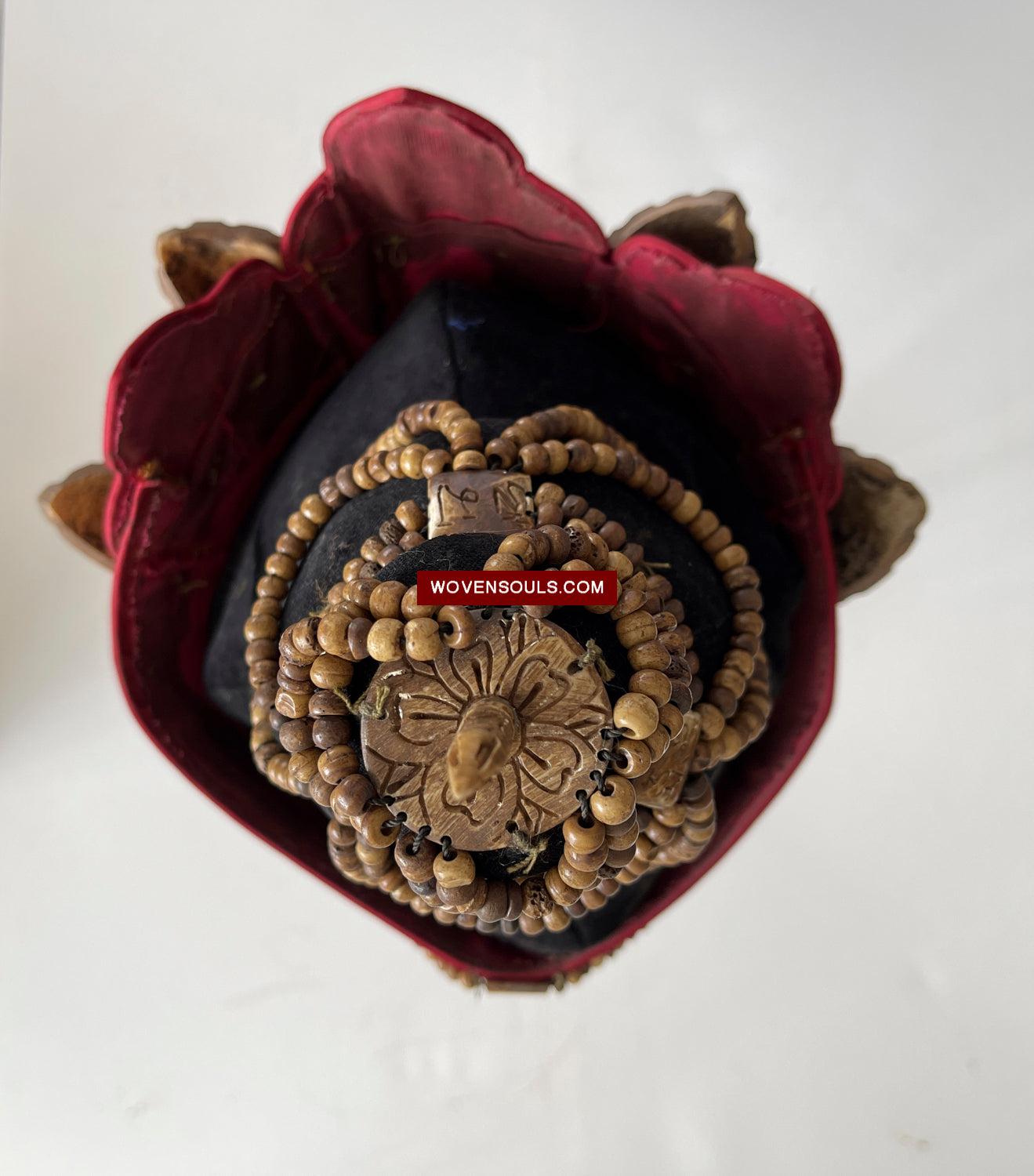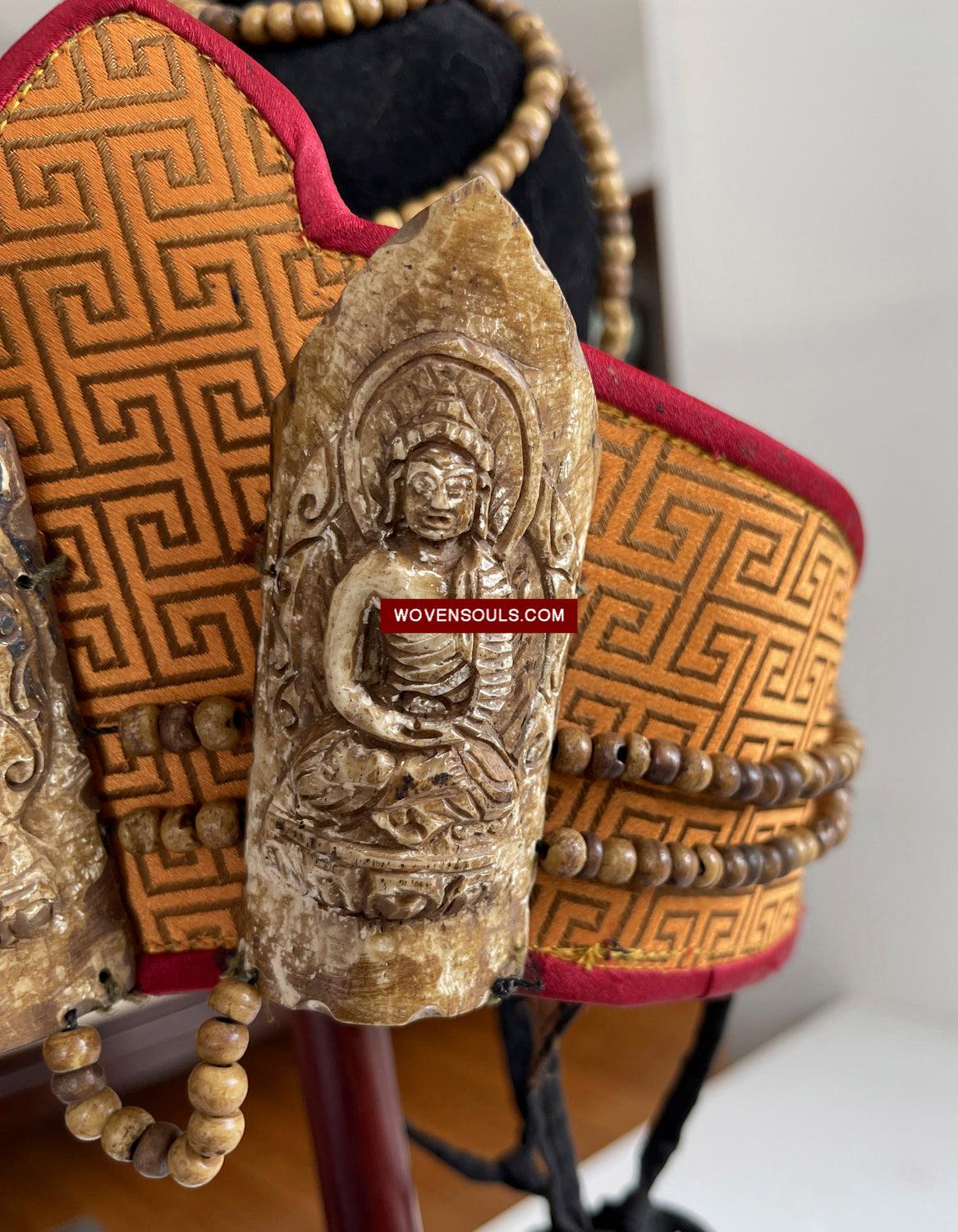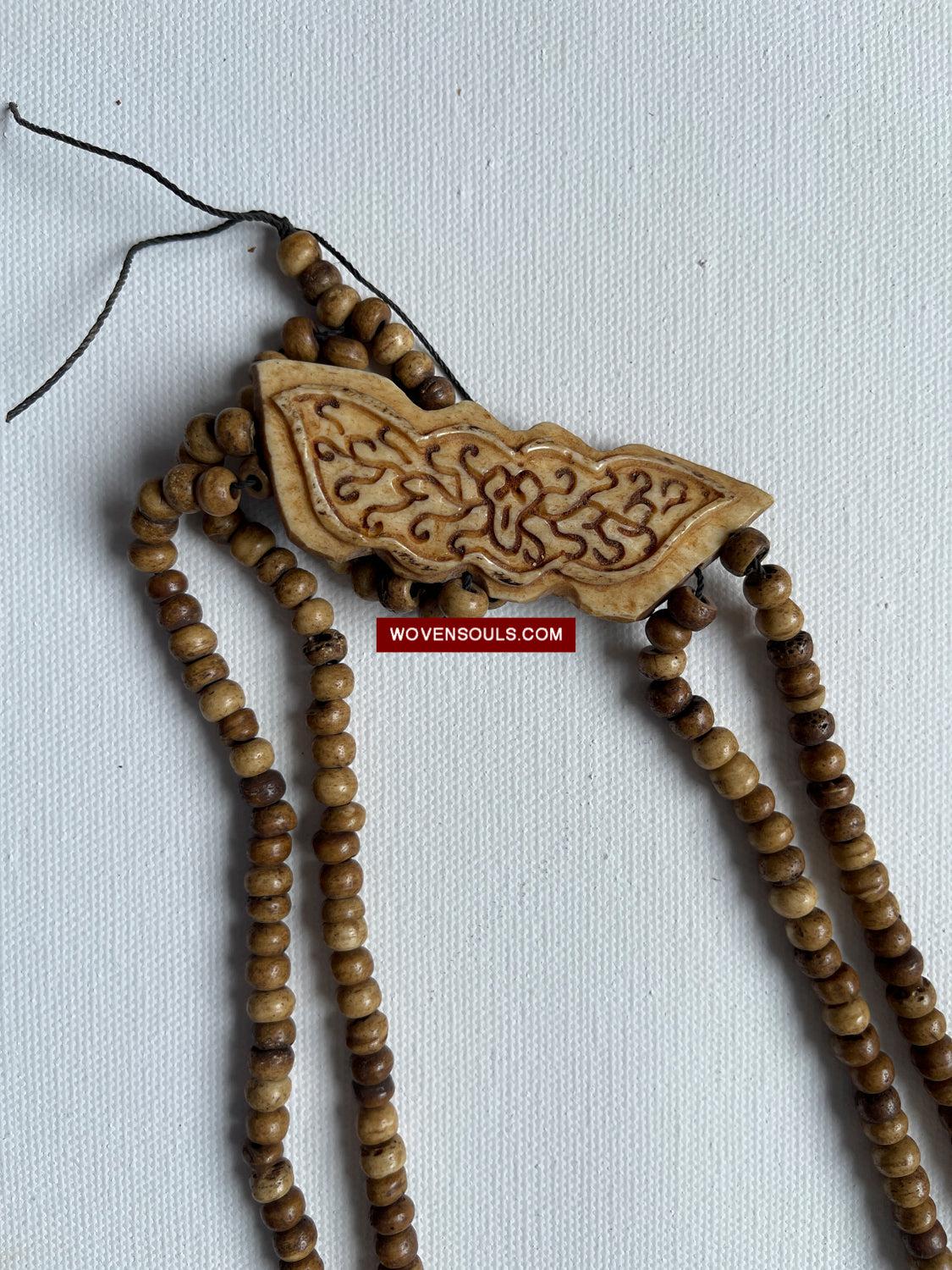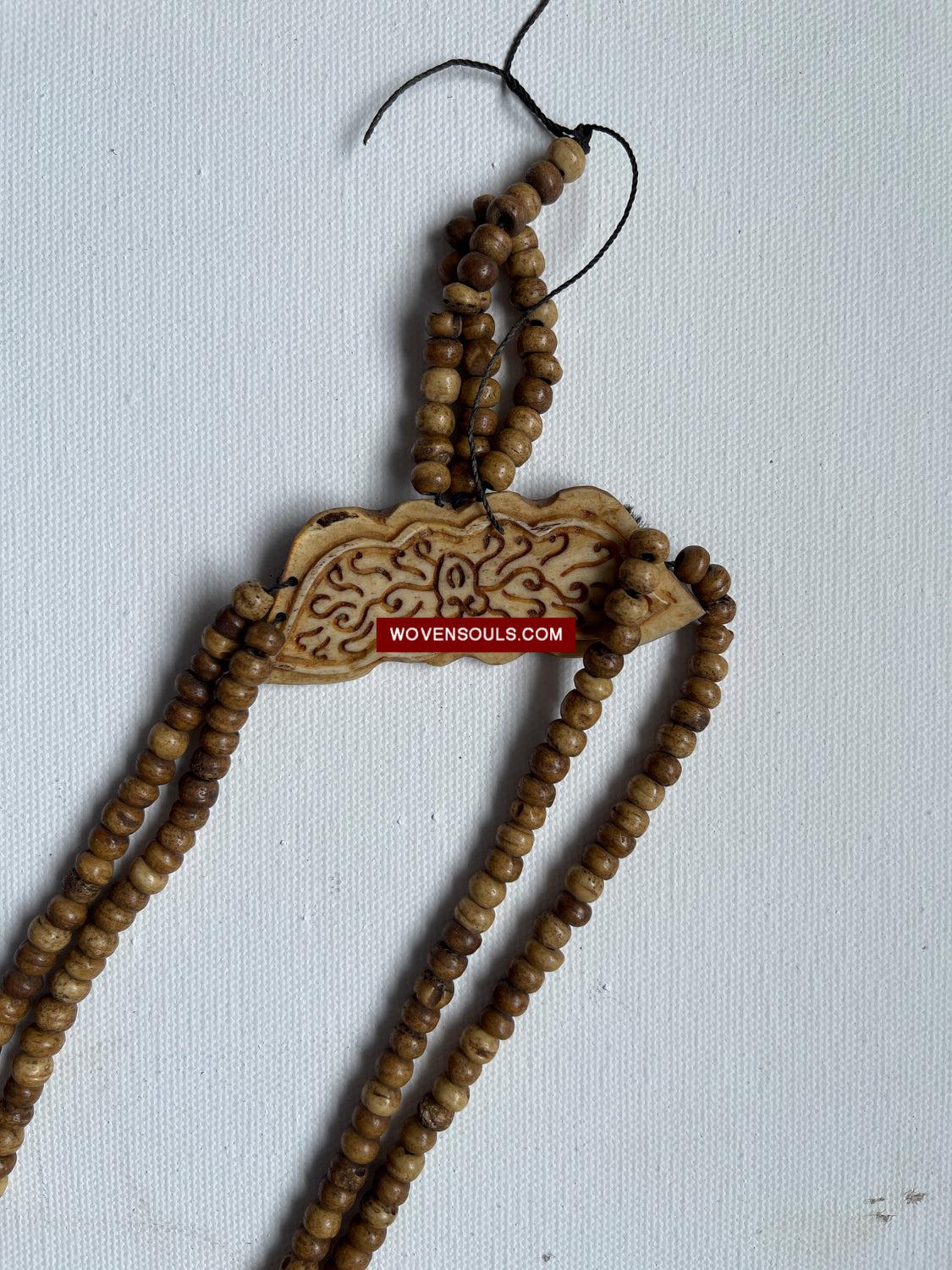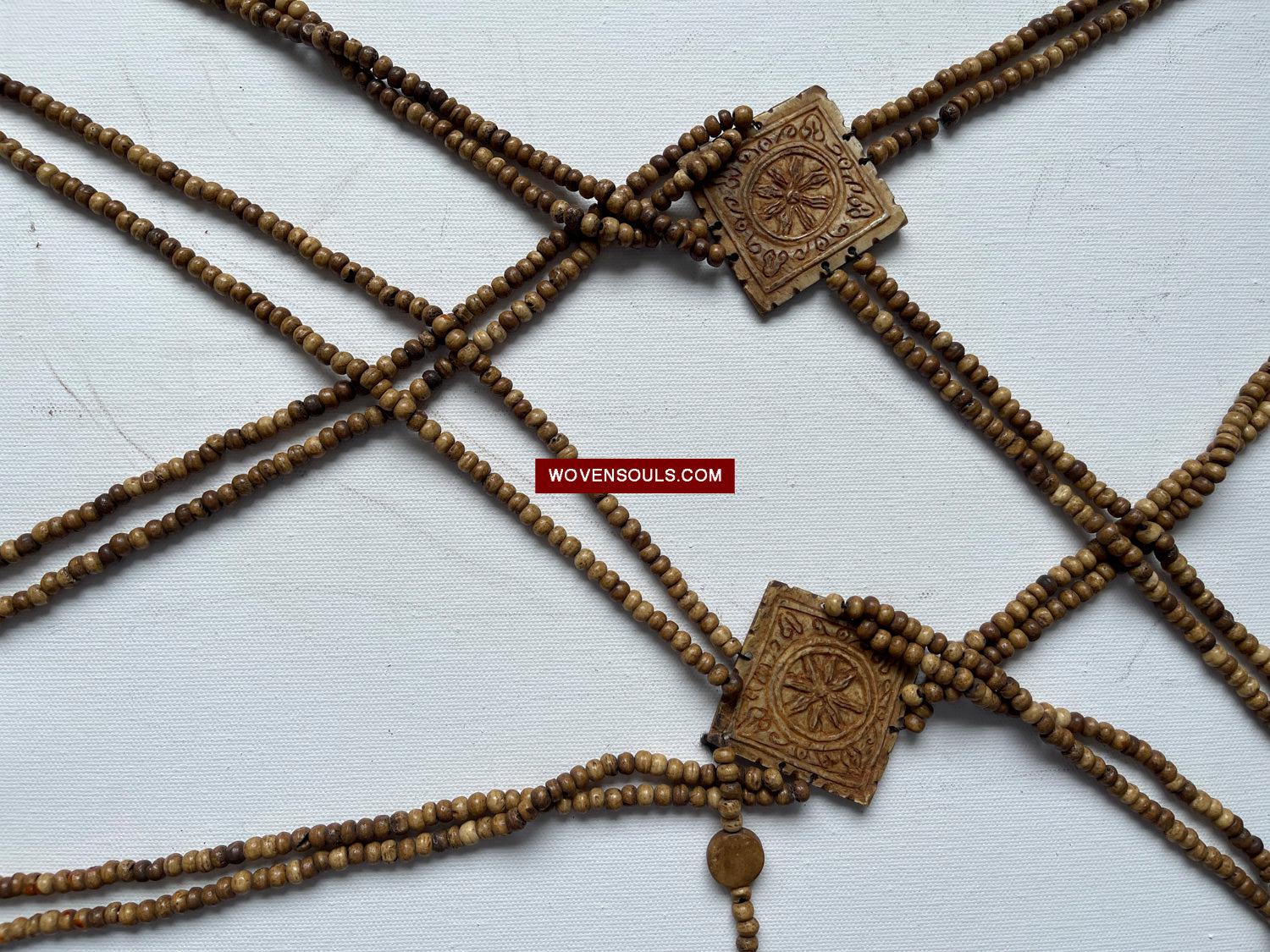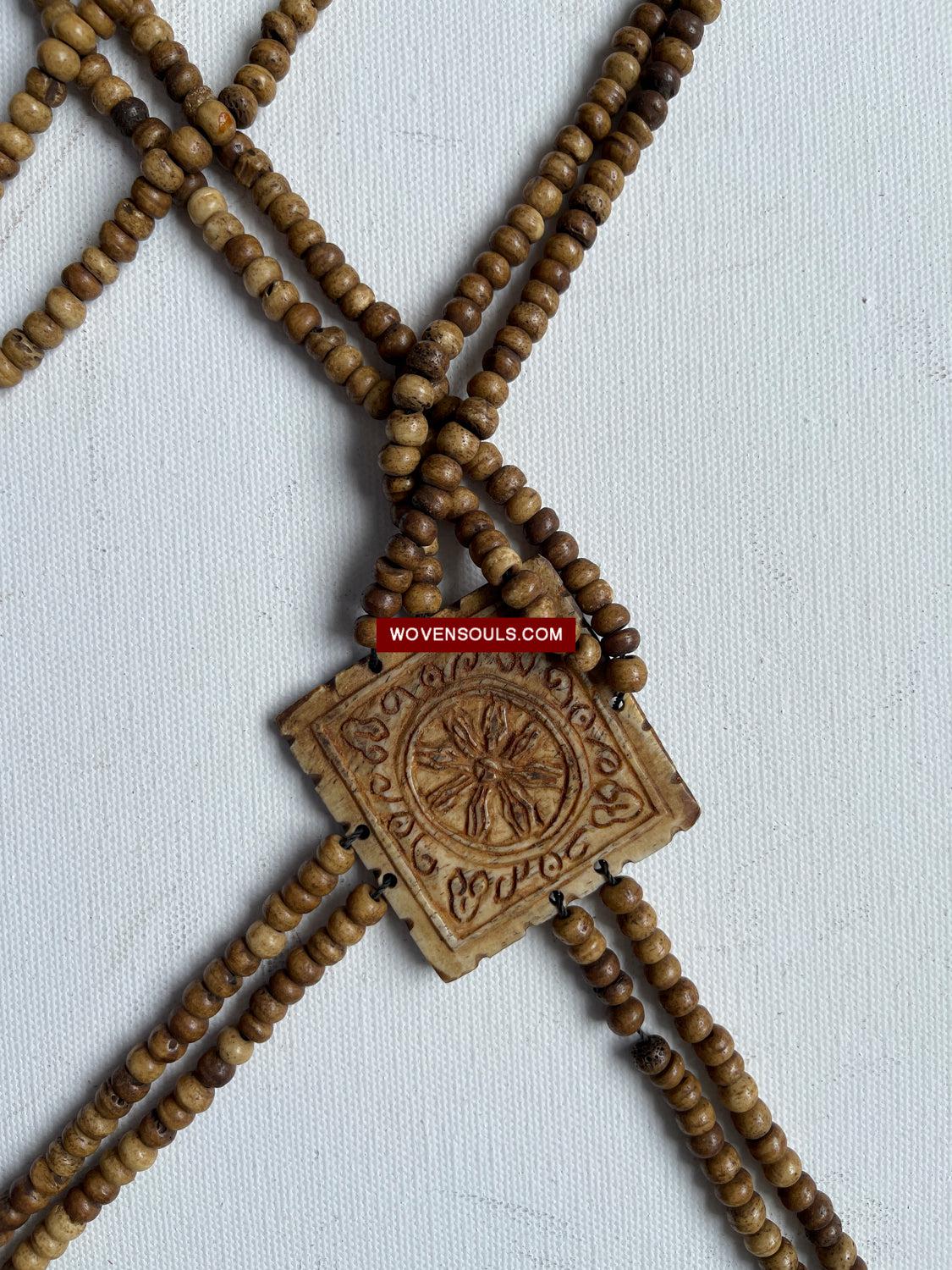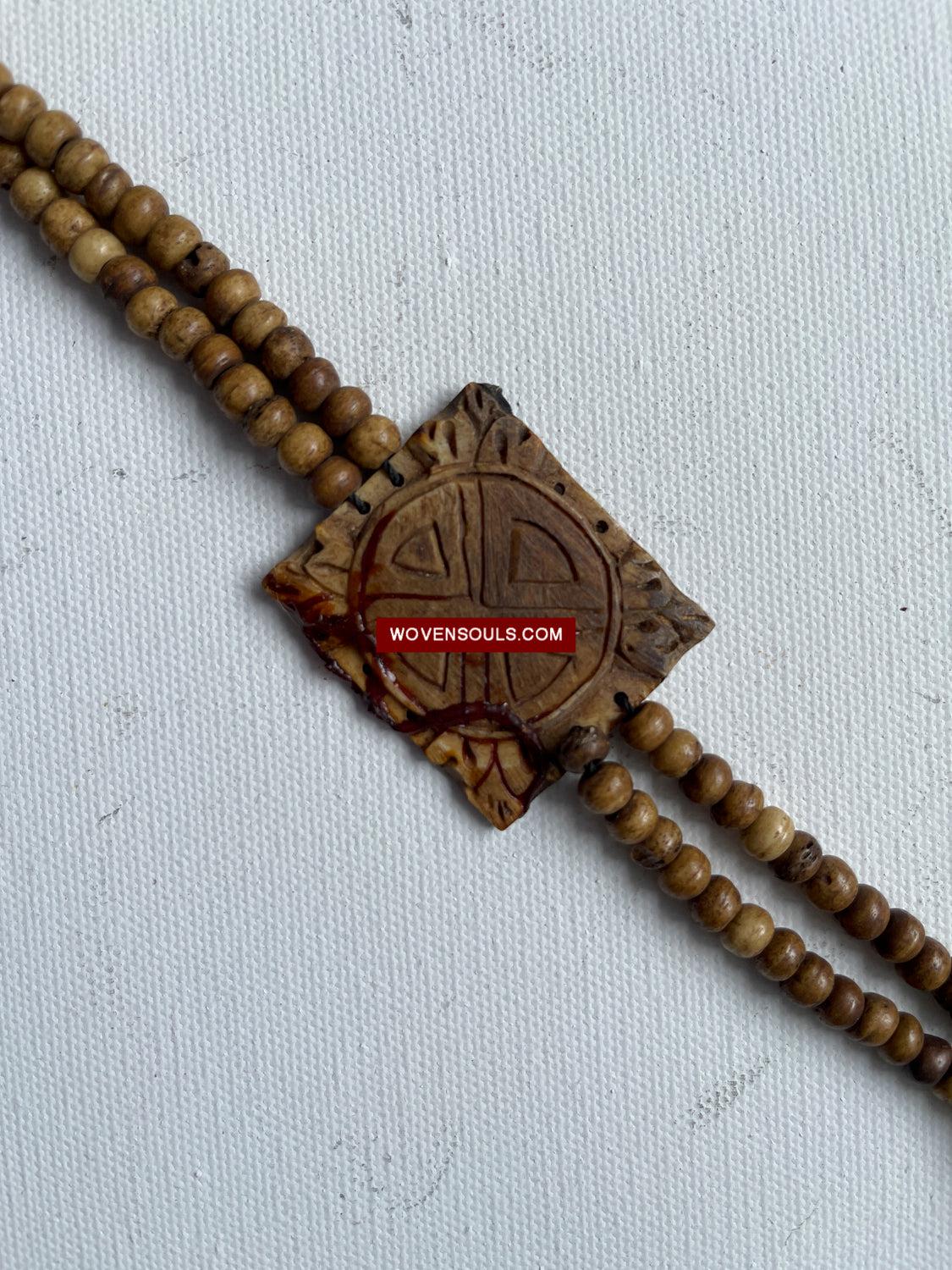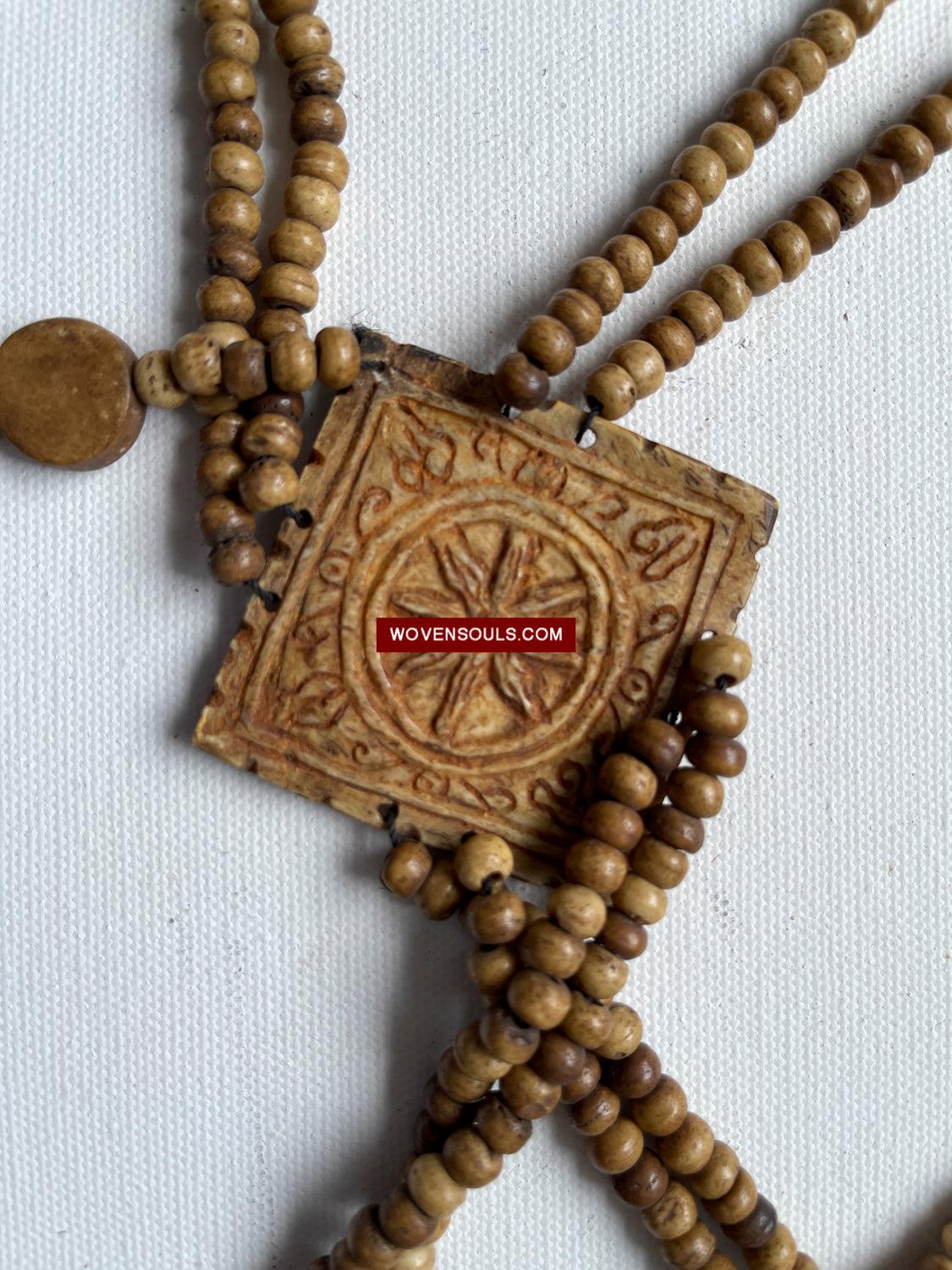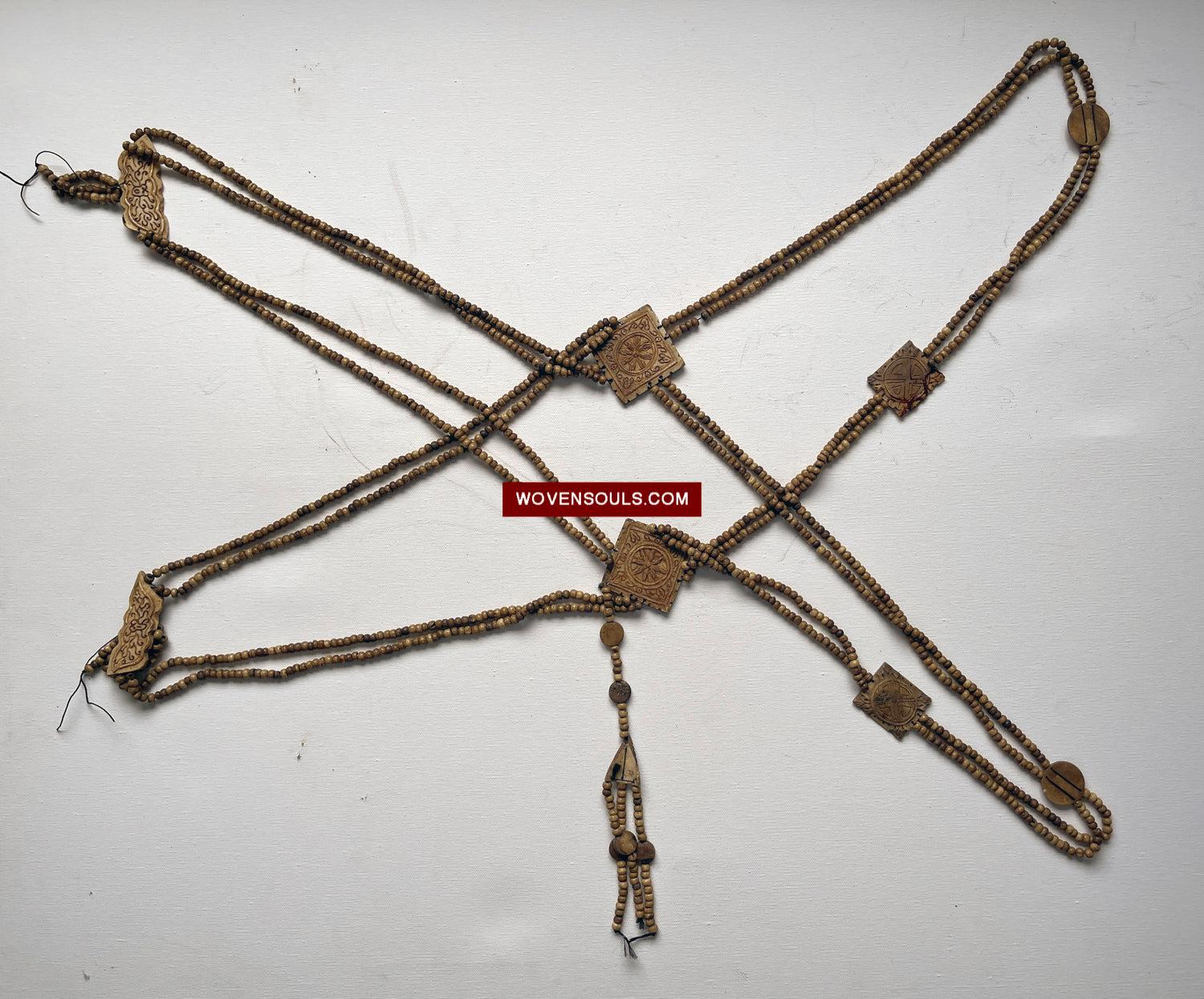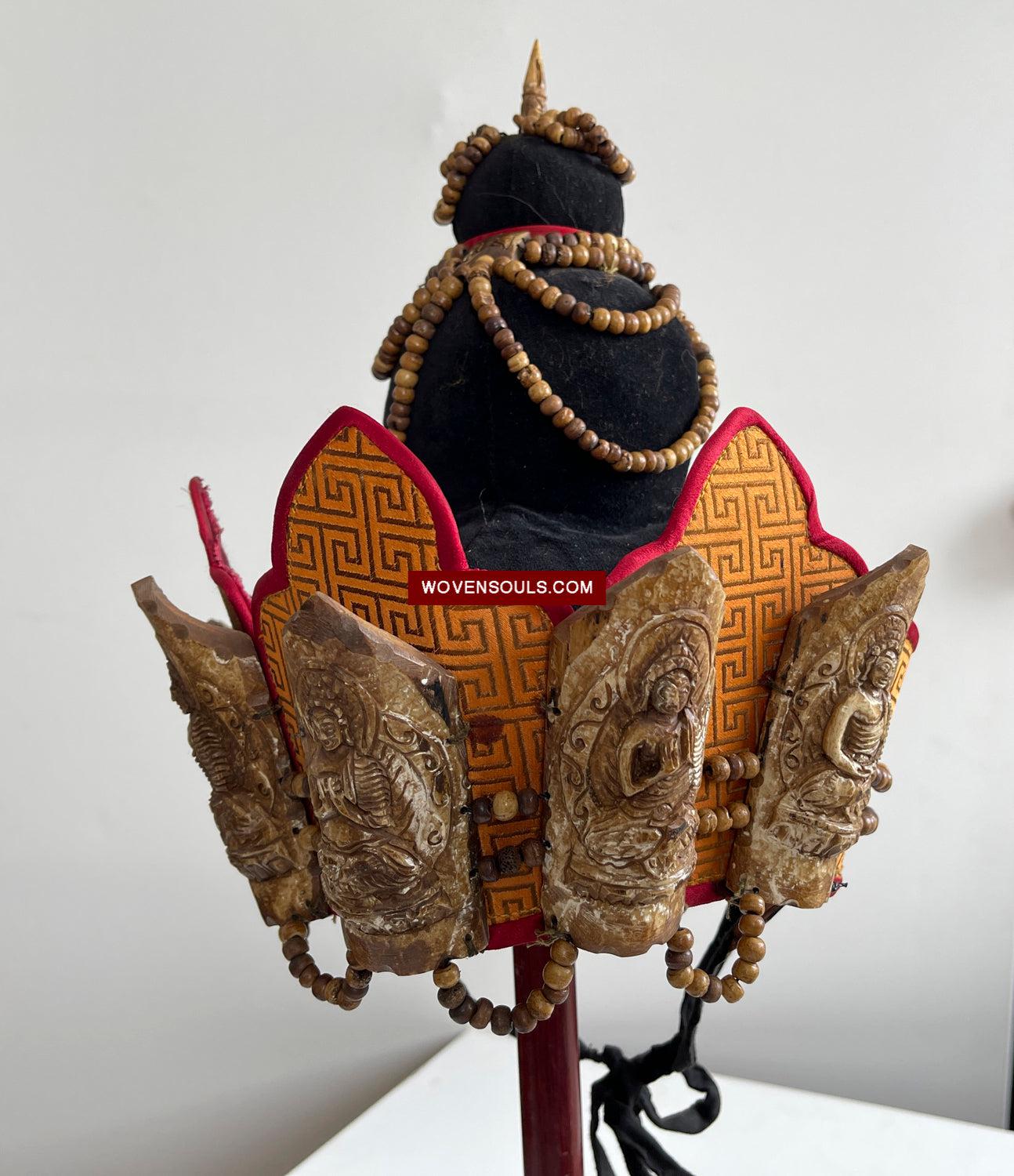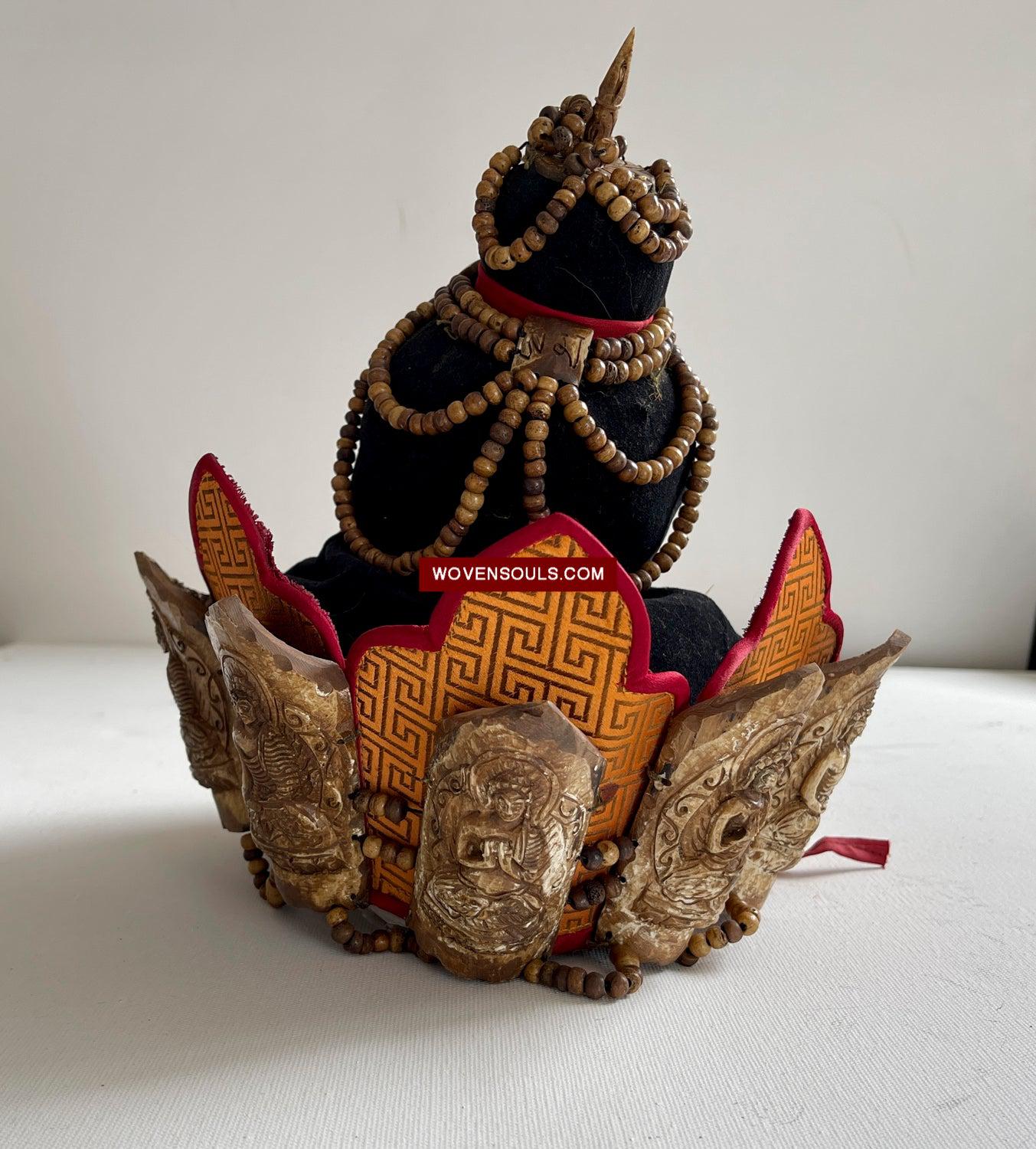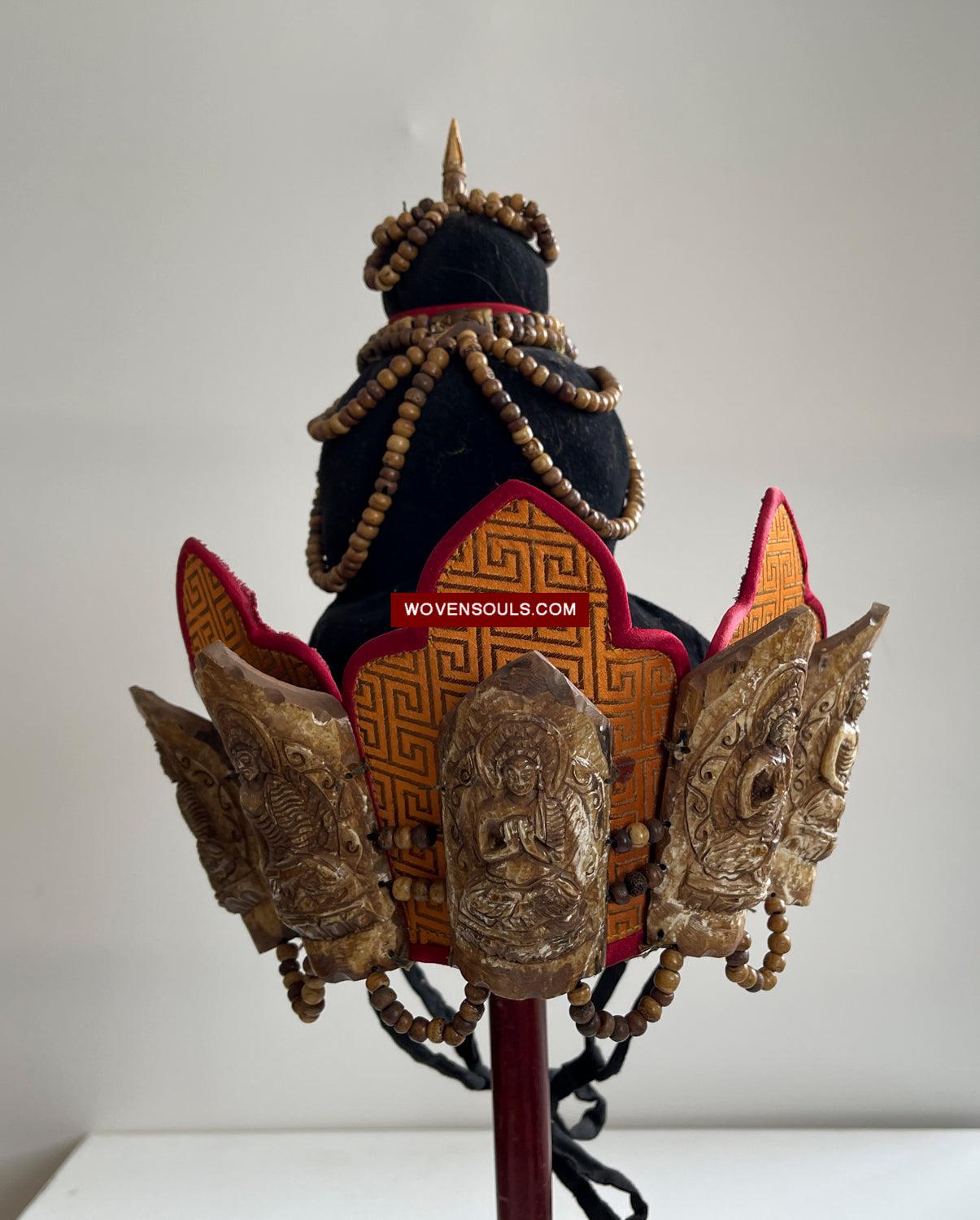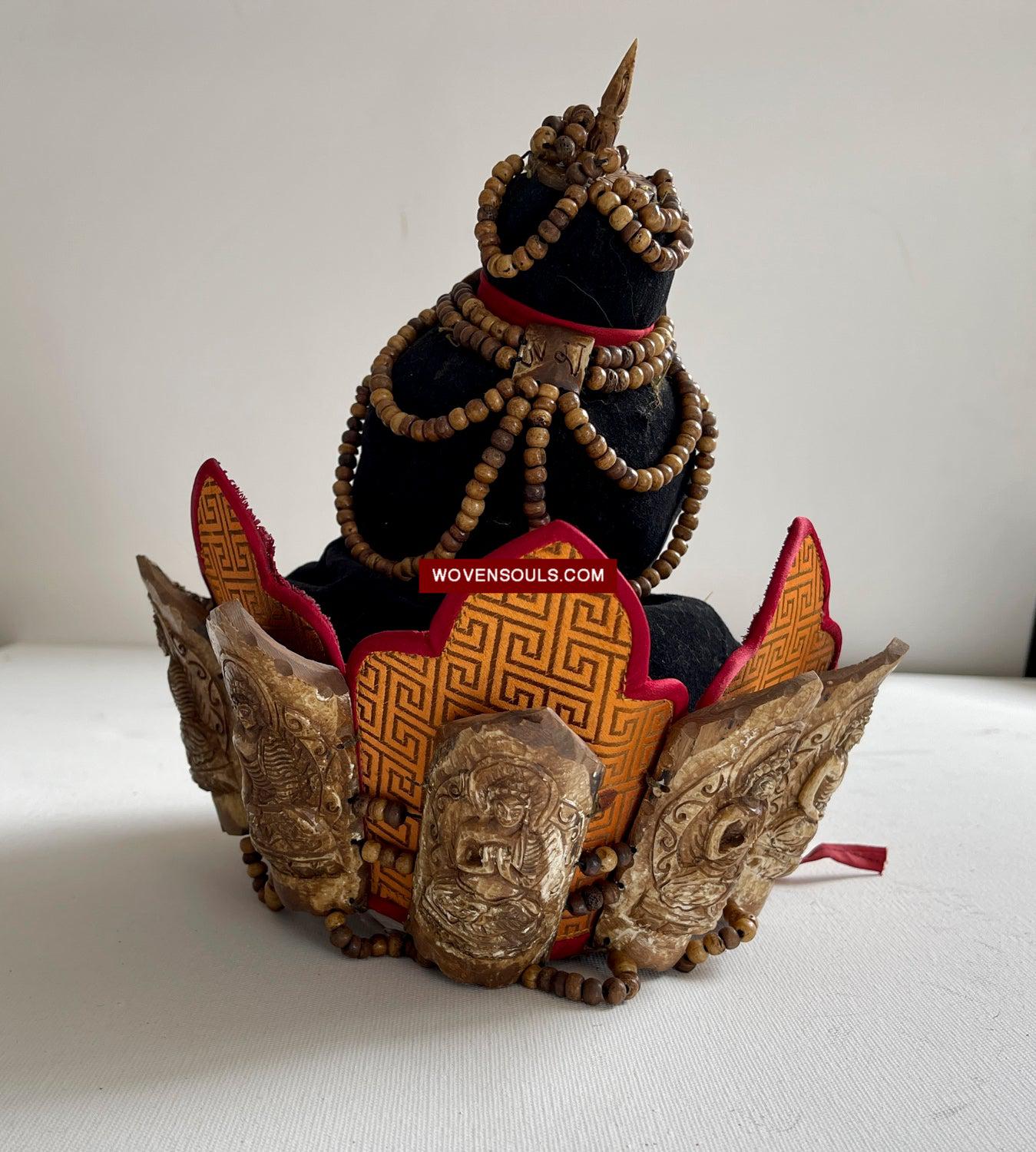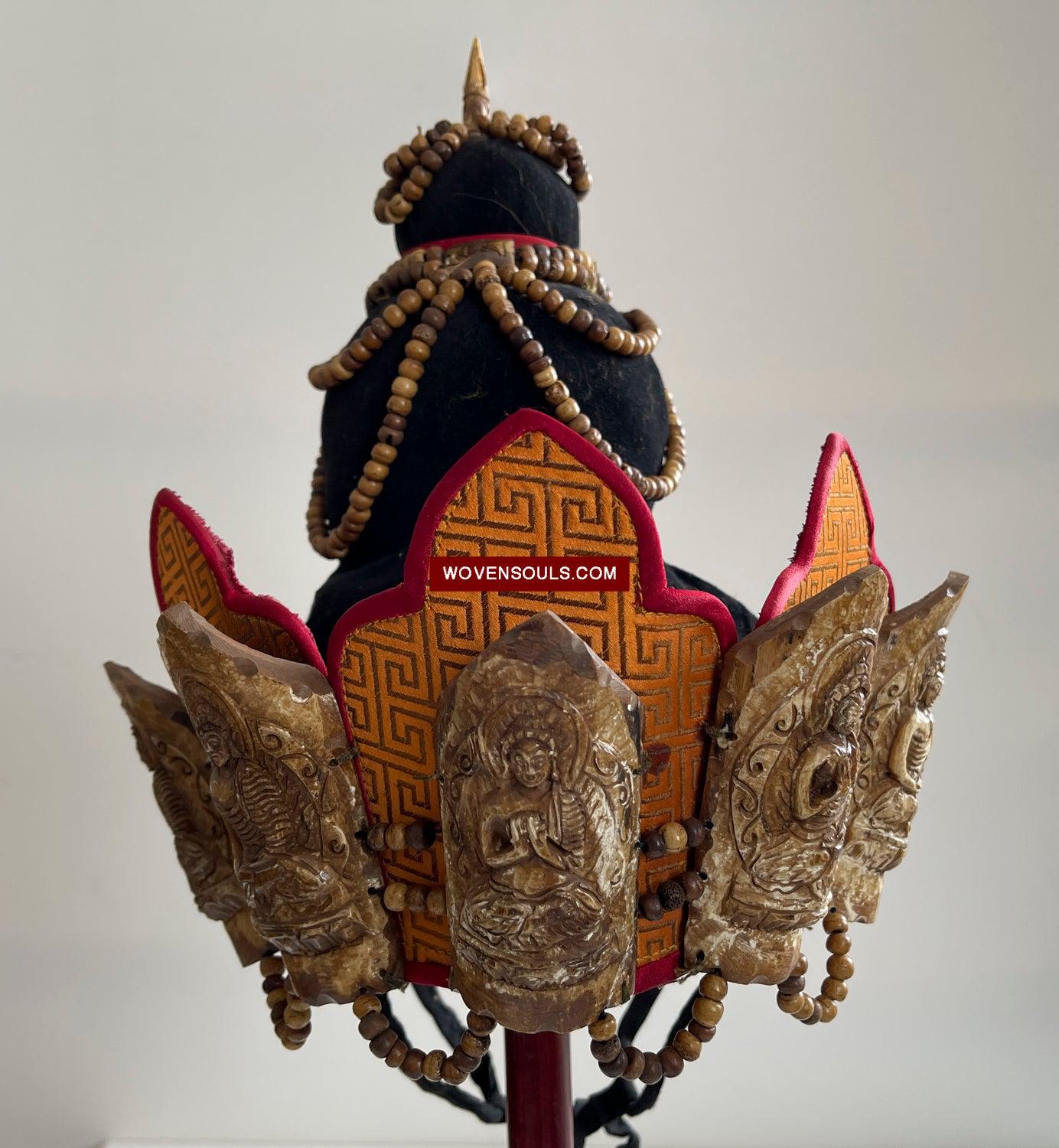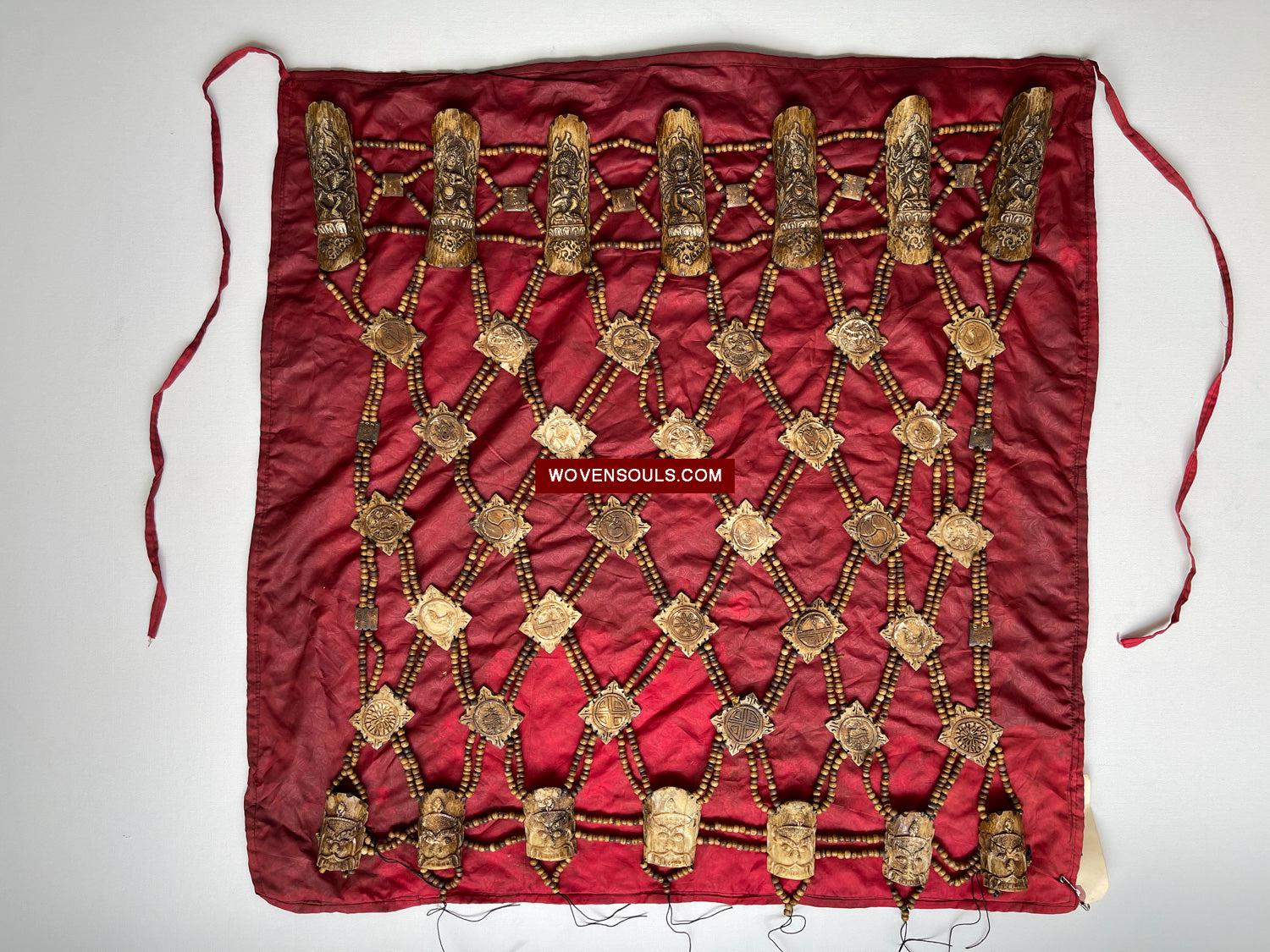1015 SOLD - Antique Tantric Buddhist Head Priest's Ceremonial Costume - Carved Bone
Sold to a discerning Antique Art-Lover
***
The set consists of five parts: crown, cross-body necklace, two arm-bands and apron.
It is worn by Tibetan Priests and is essential to important tantric ceremonies and rituals.
The apron comprises of large illustrated carved bones, carved with various Tibetan Buddhist beings, under which is a series smaller carved bones, interconnected with a web of small round beads. All of these have been carved by hand and then strung together
This particular apron is notable for its well done 3-dimensional carving . The top row is composed of seven elongated, diamond-shaped carved medallions connected by bone beads that are strung with Buddha images, Dakinis and other symbols.
The background cloth is a maroon cloth (probably synthetic) that are both soiled from usage.There is a backing made of Gyaser-like brocade cloth. Both have signs of usage. Signs of restitching - where the back & front have been reversed. The arm bands have the Gyaser-like cloth as the base.
The crown is a hat made of woven black material. There are five finely carved and detailed ornaments connected with beads strung.
Minor wear seen all over the bone pieces especially on the ornaments in the bottom row
Apron is about 28 inches tall.
Complete ornamented sets like this one are rare.
The bone components are estimated to be from the early-mid 1900s.
The Apron cloth & backing are changed several times over the lifetime of its usage and are estimated to be from the late 1900s. The hat has been refurbished recently to maintain the form.
Similar Example seen in the Indianapolis Museum of Art []
Similar examples:
$$$$$
***
This item has spent a lifetime being used for the purpose of its creation with the original artist/user. Signs of this life lived heartily may be present on the piece in the form of stains, thread loss, loose threads, holes, tears, color run and other imperfections. Therefore the condition must be assumed to be “not” perfect. More photos of such imperfections will be provided on request.
***

